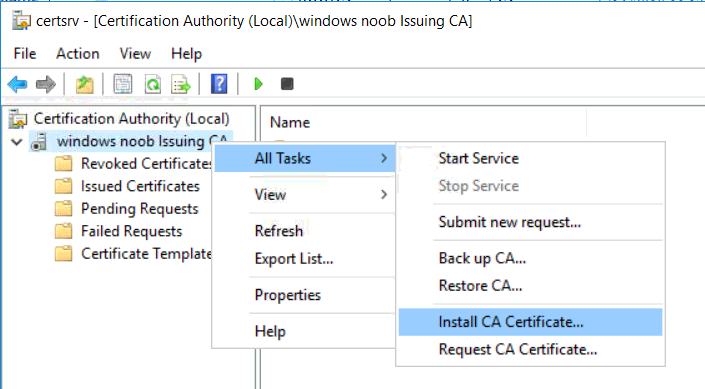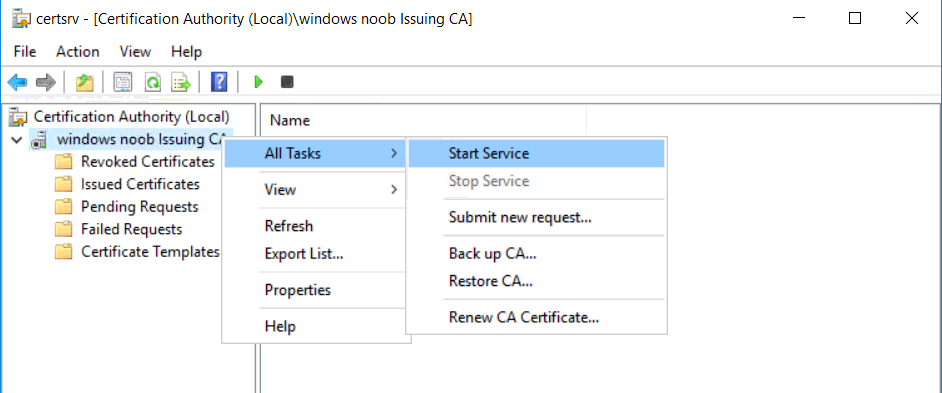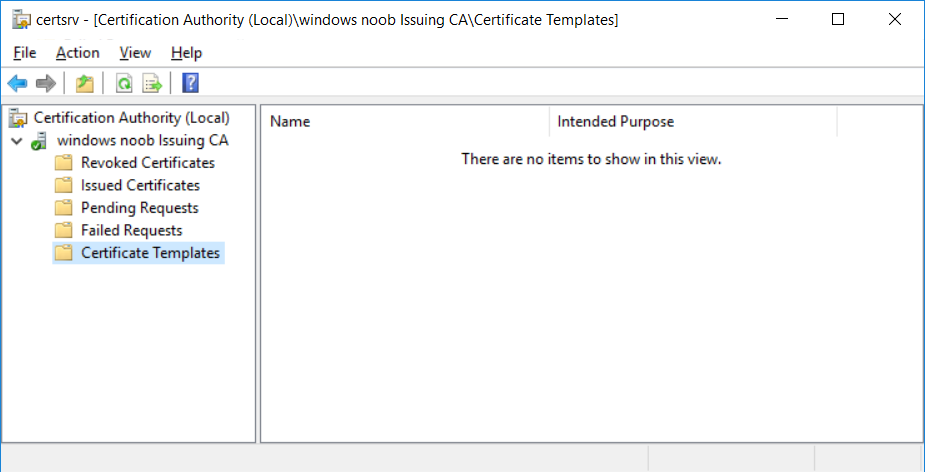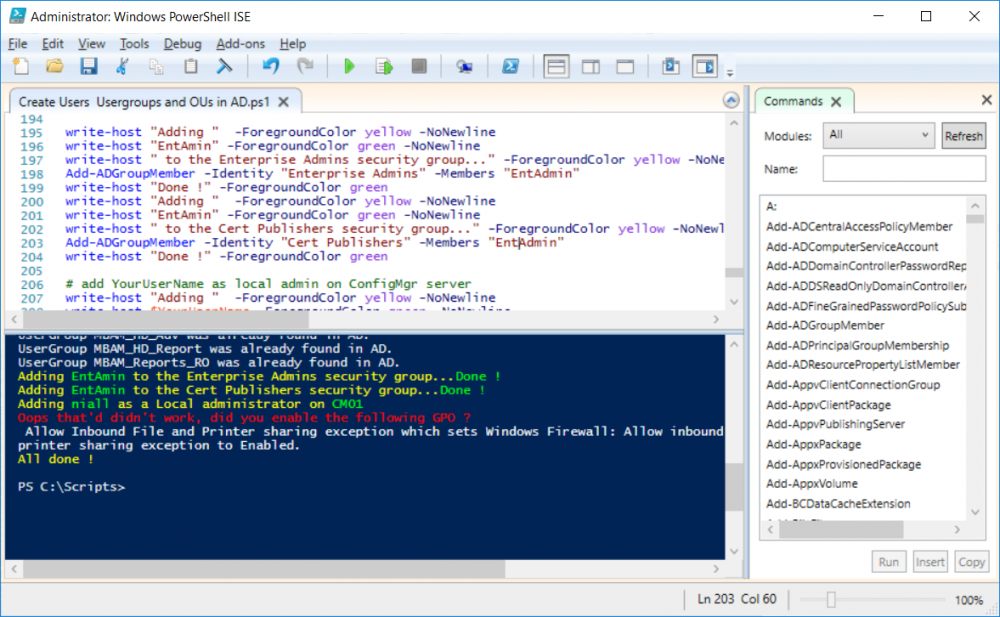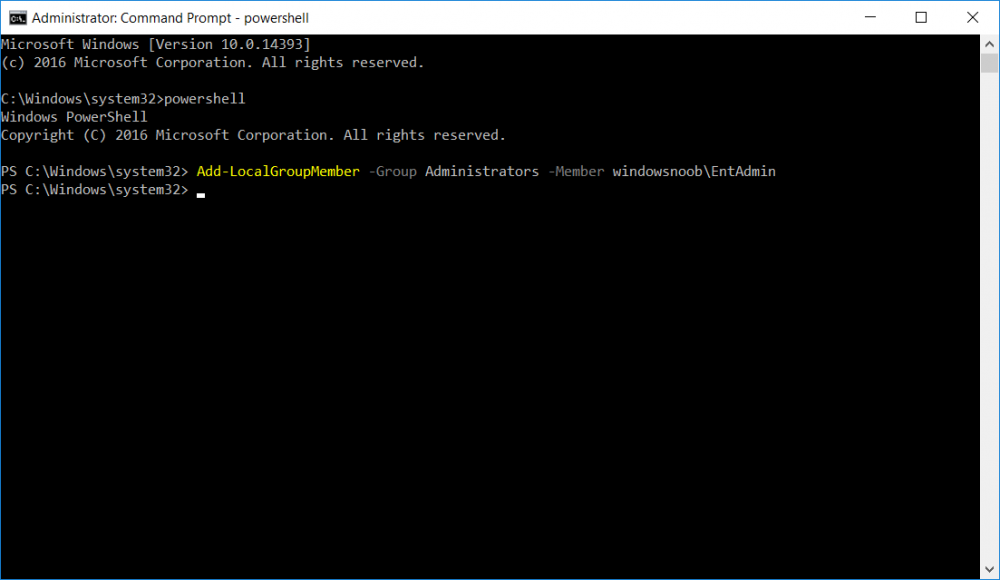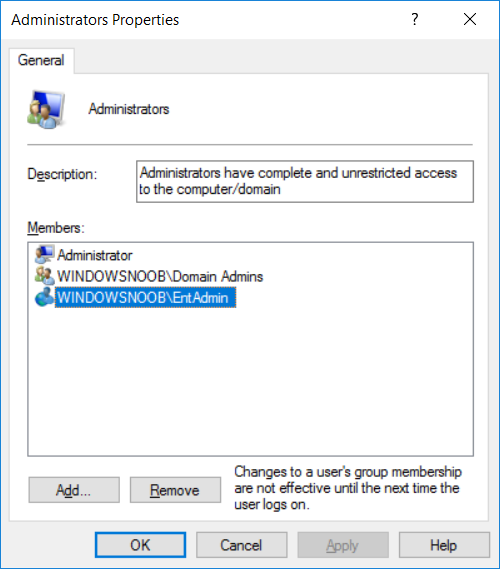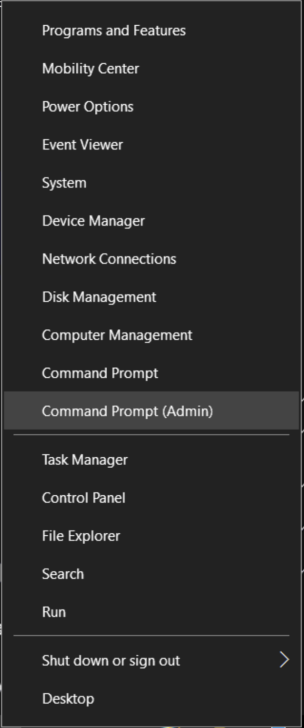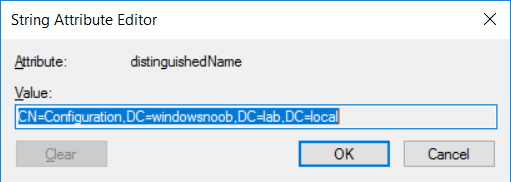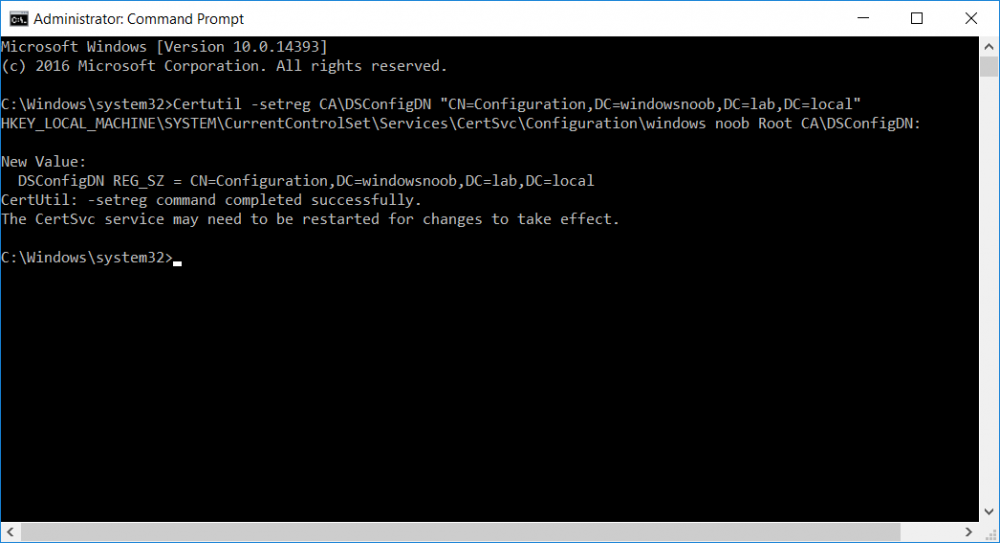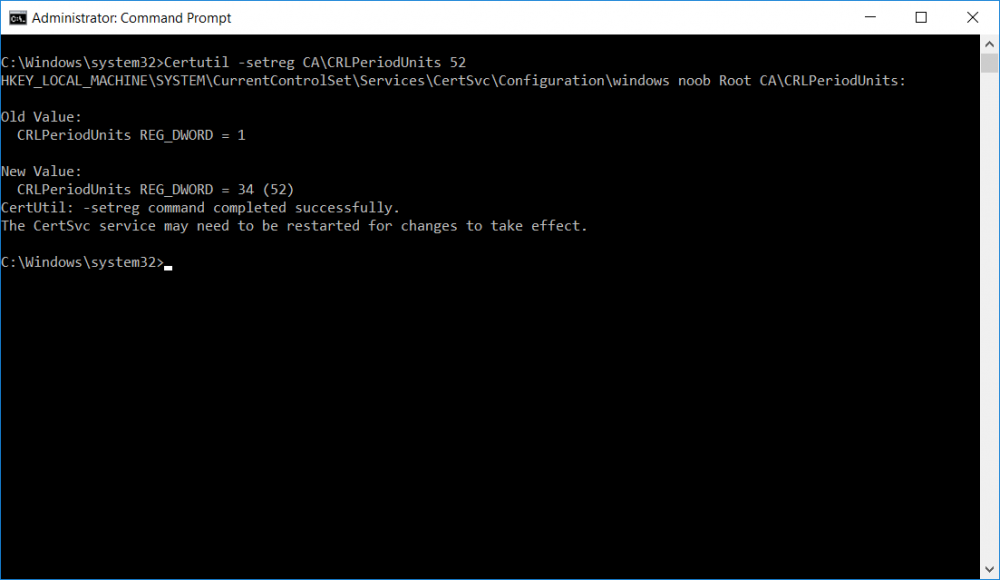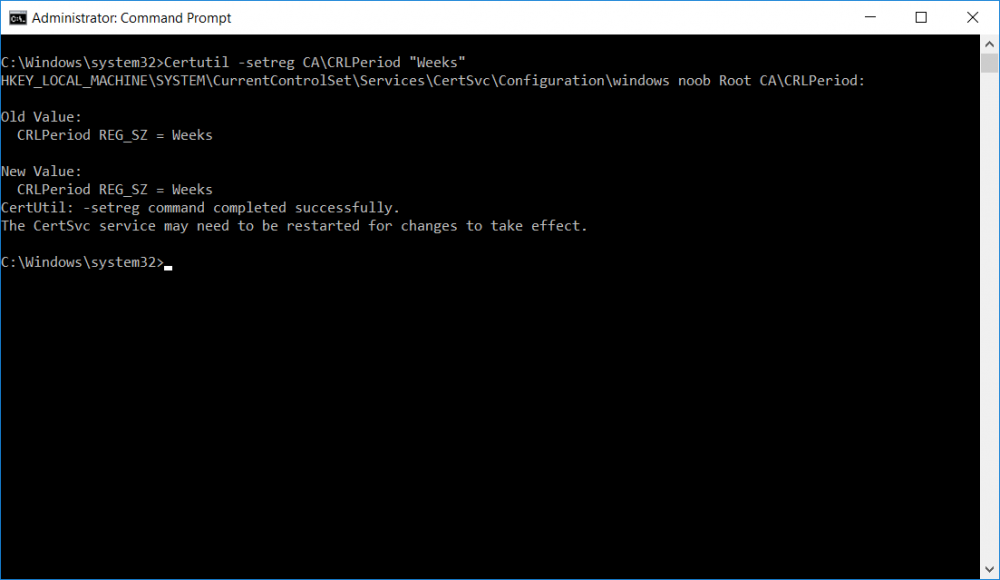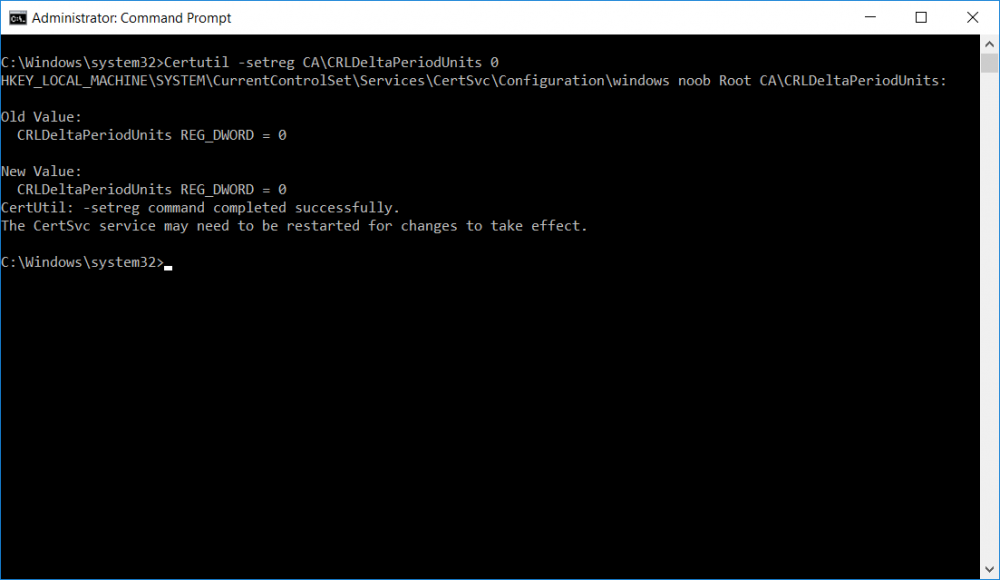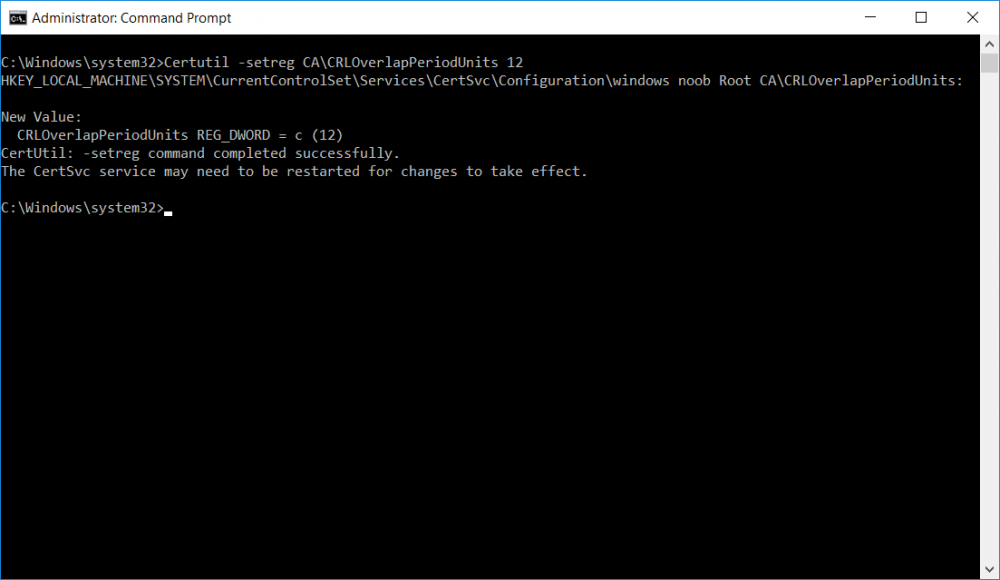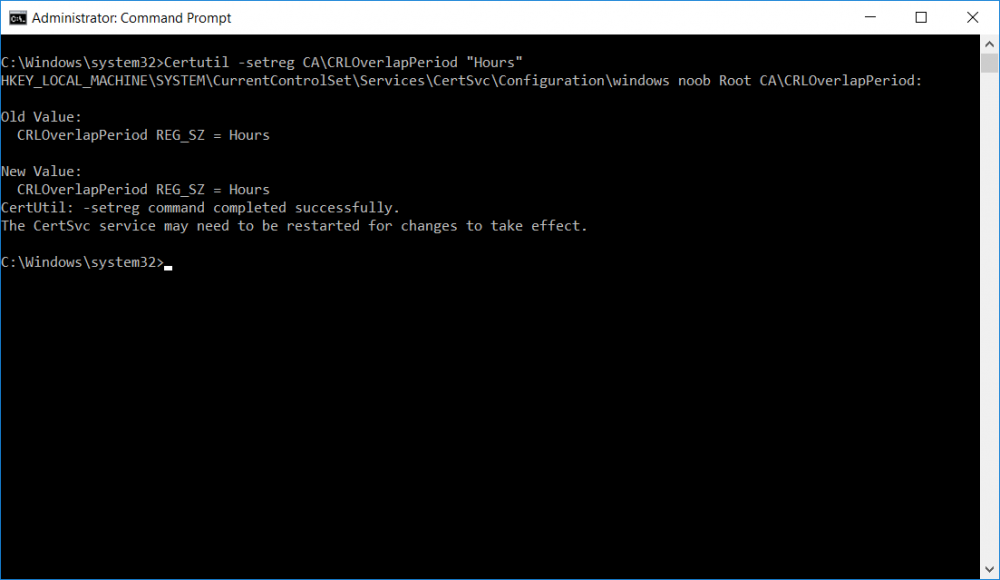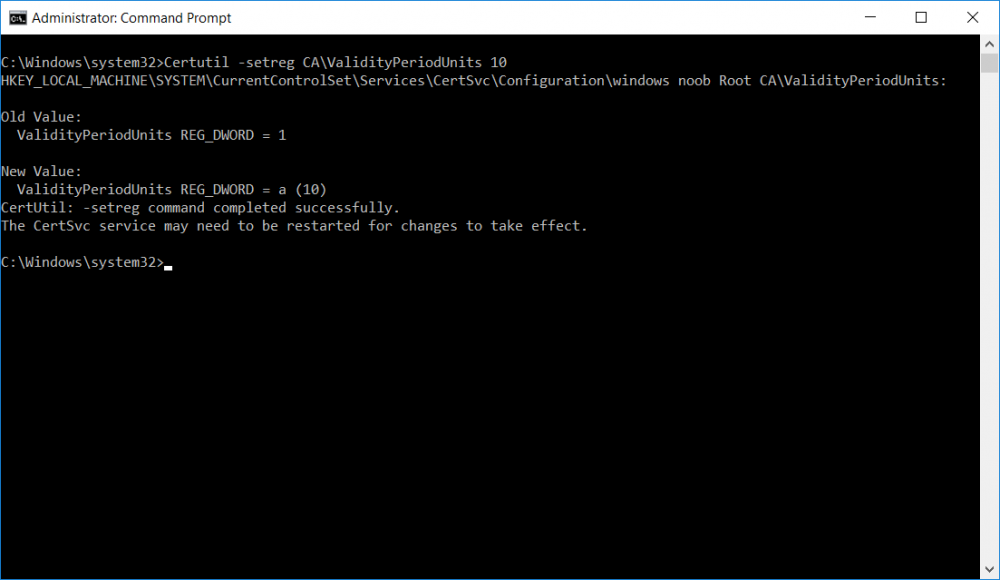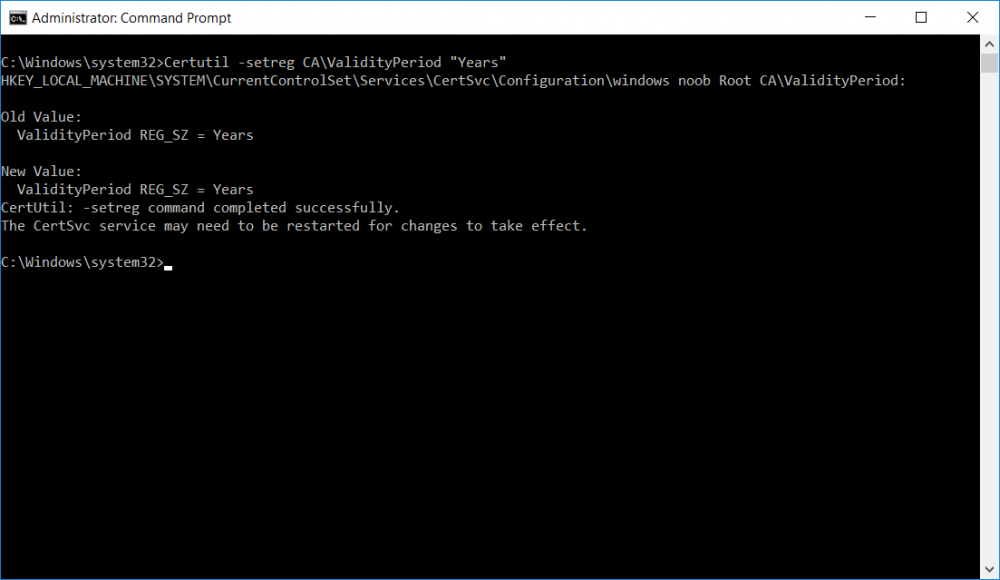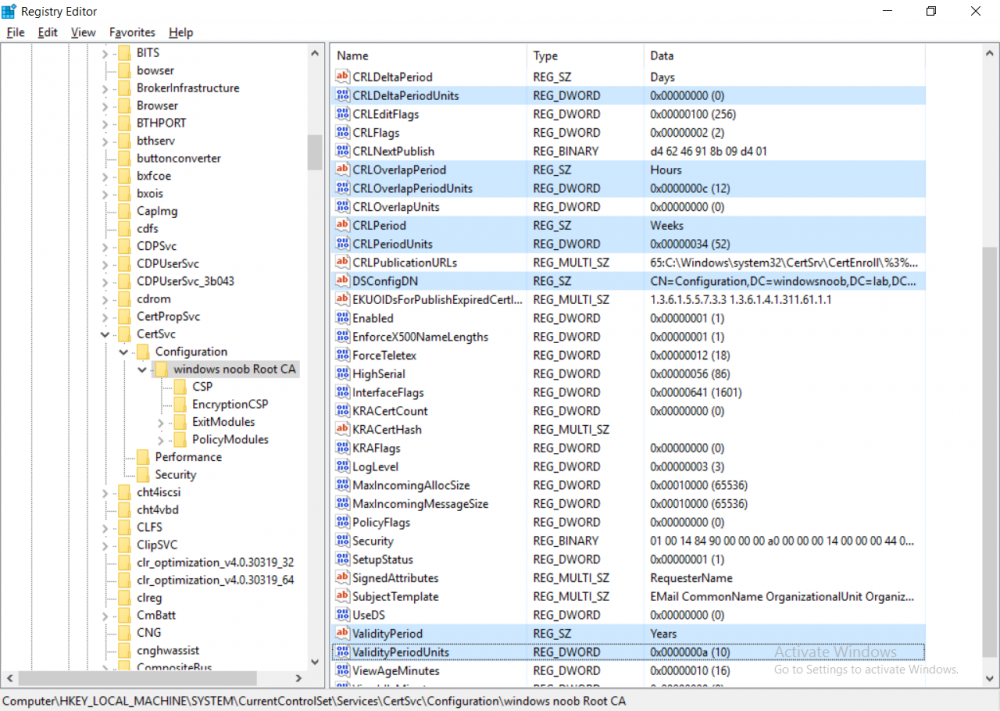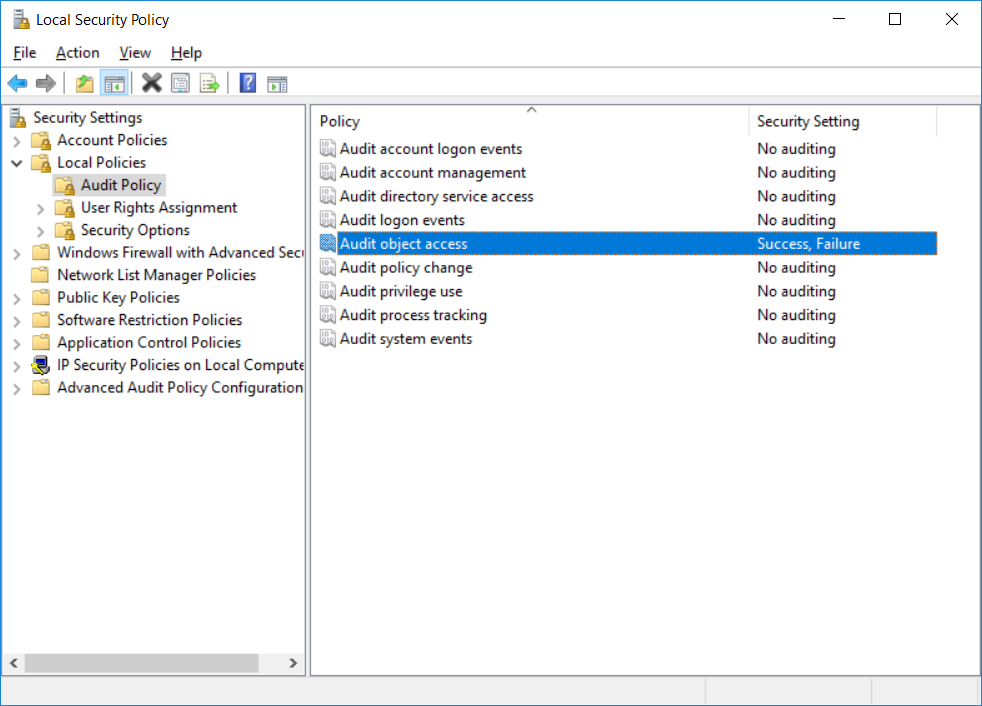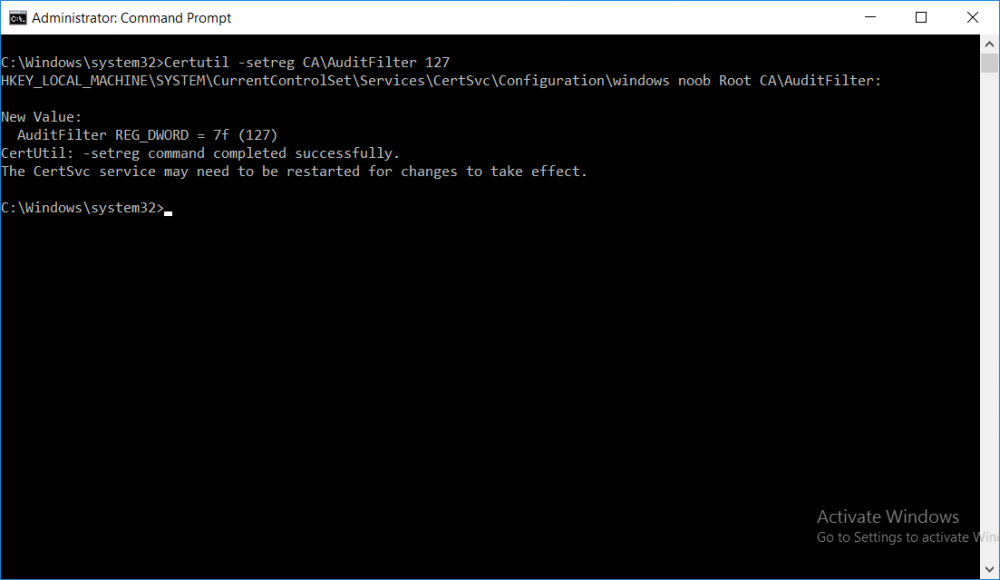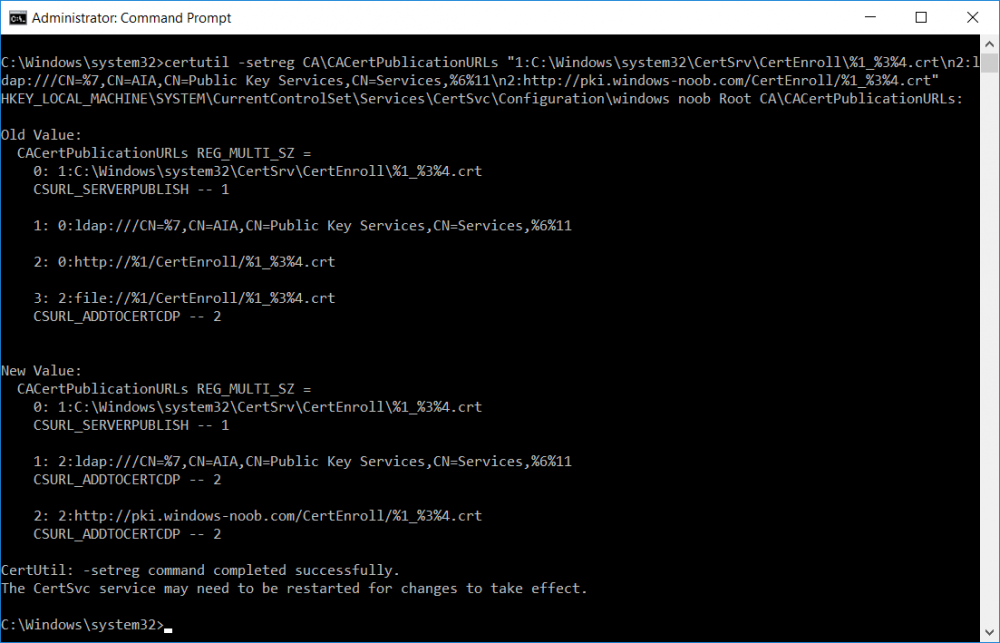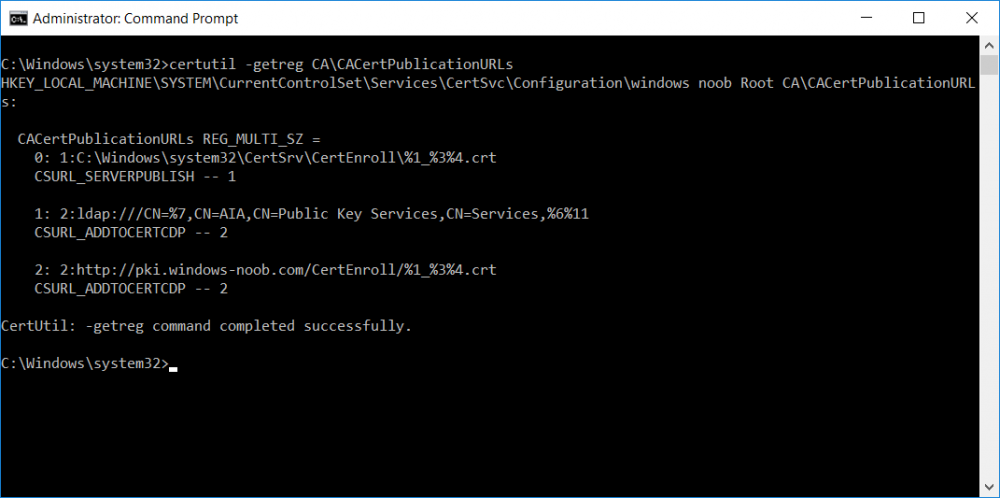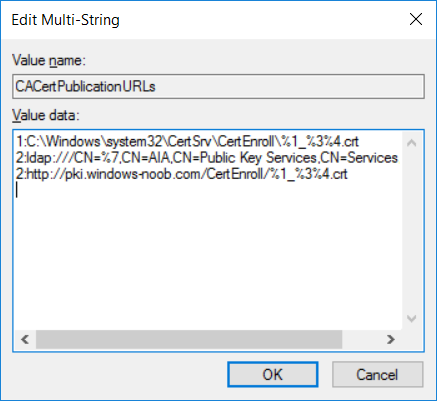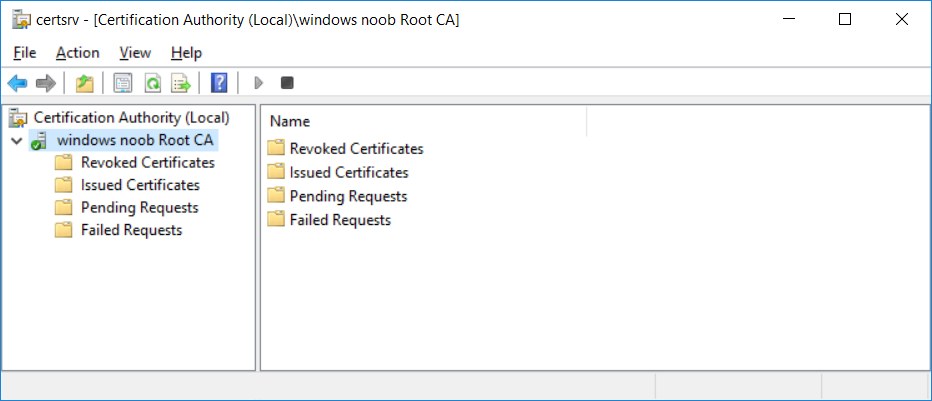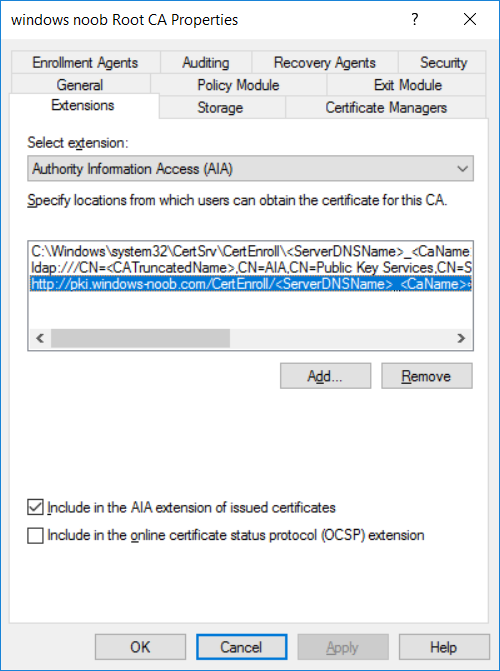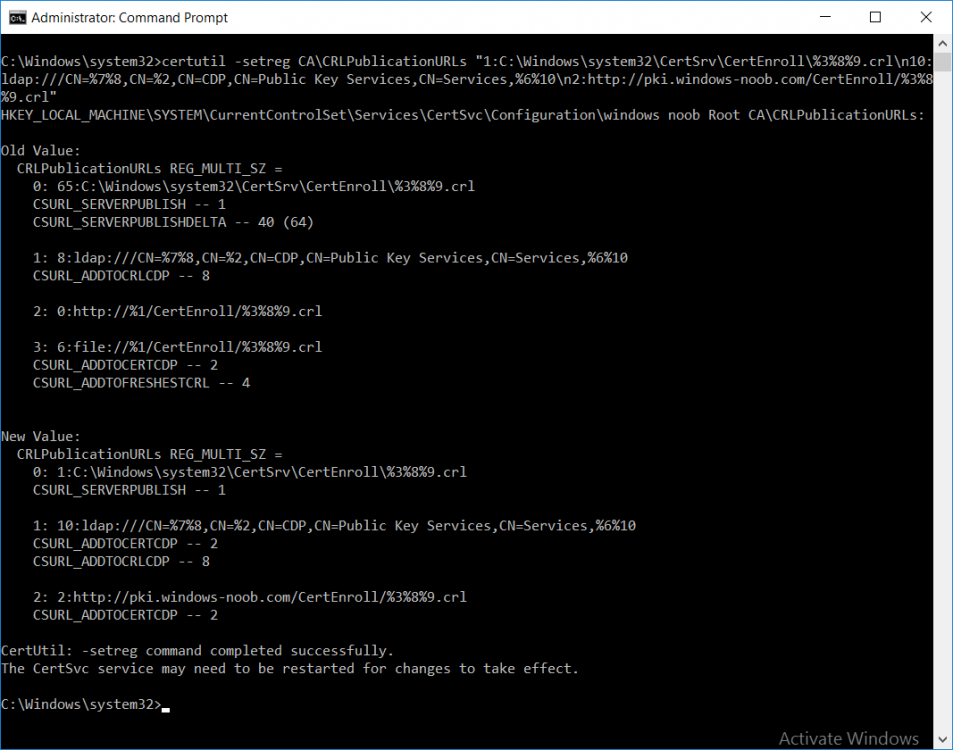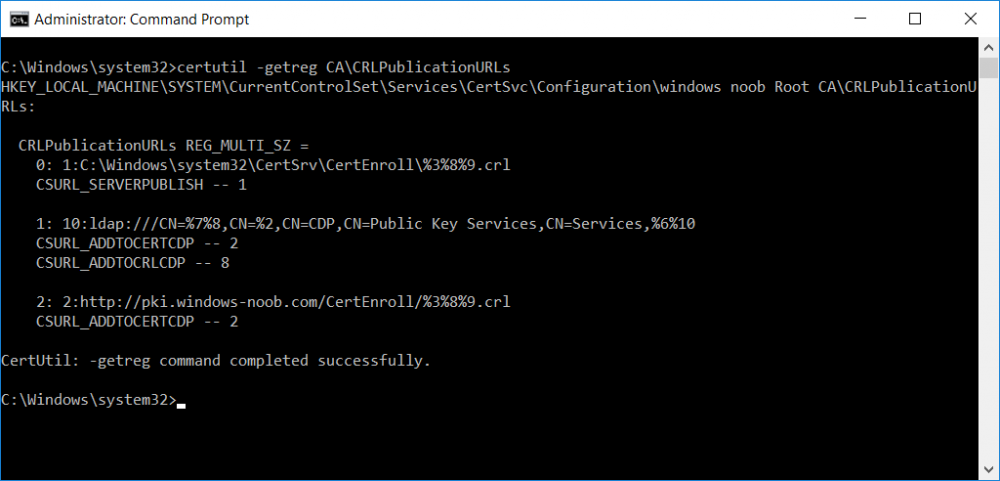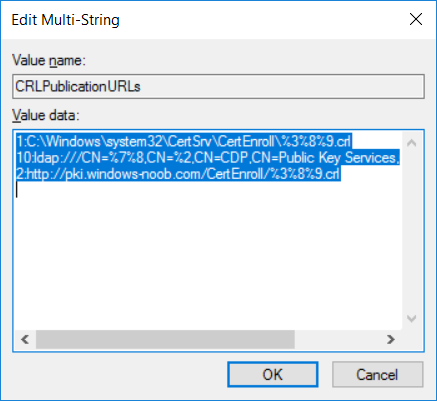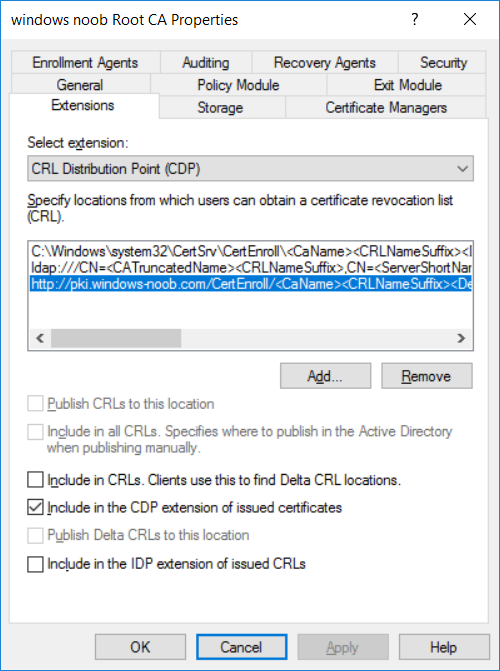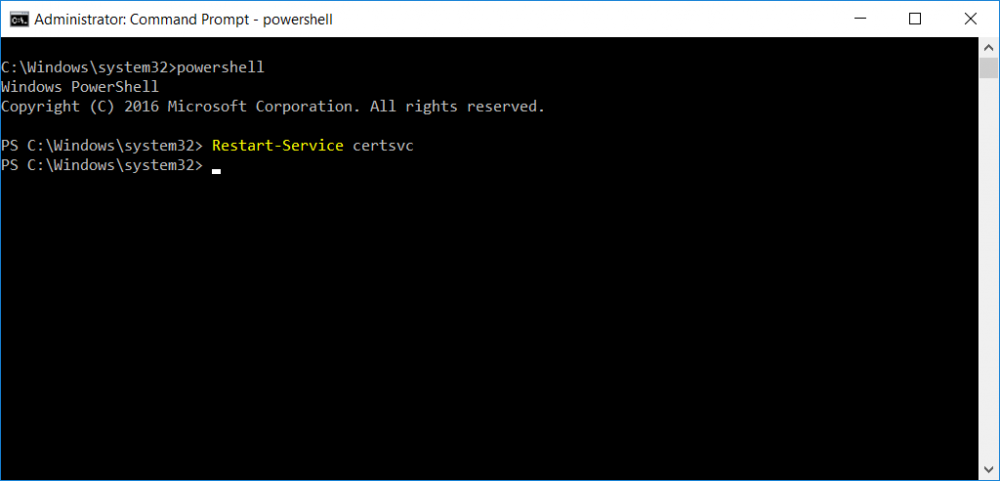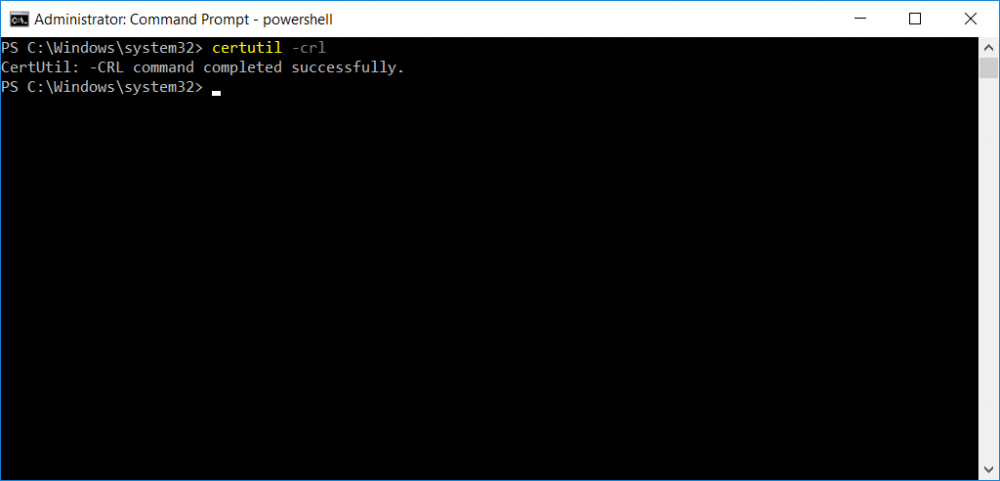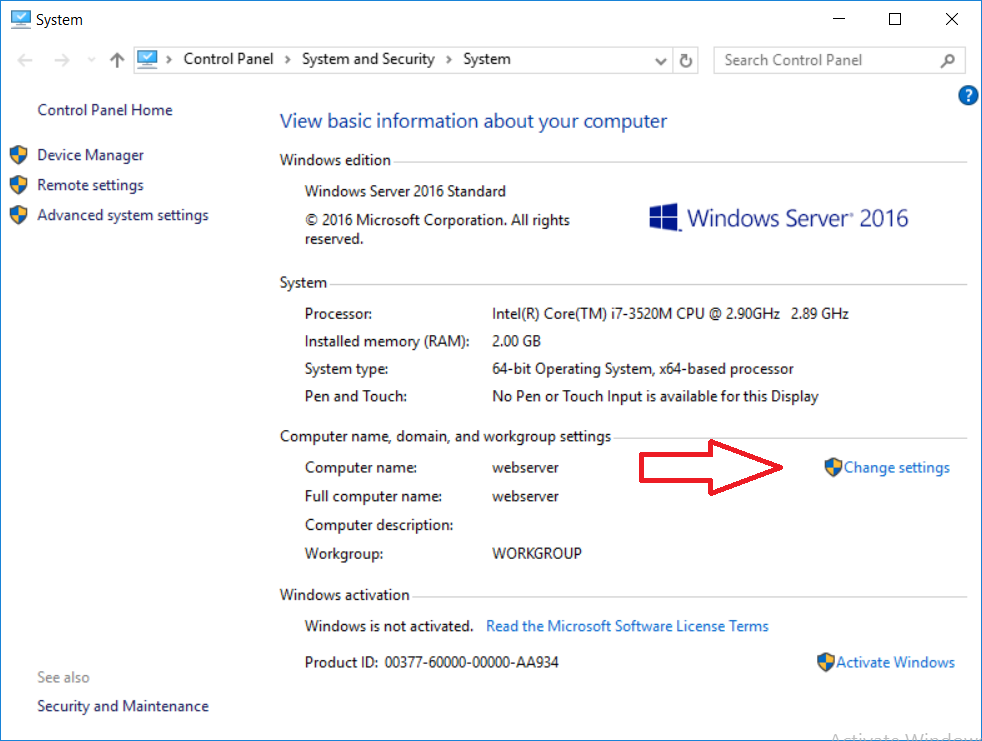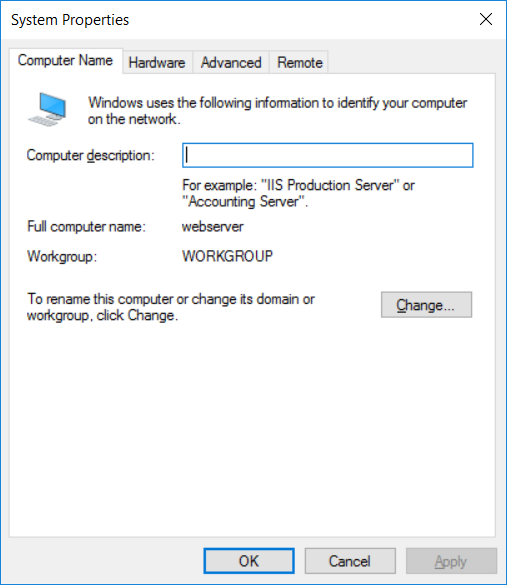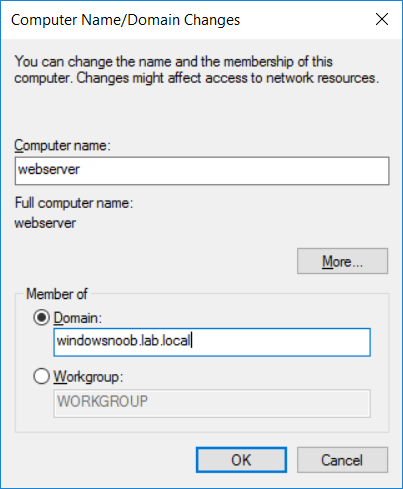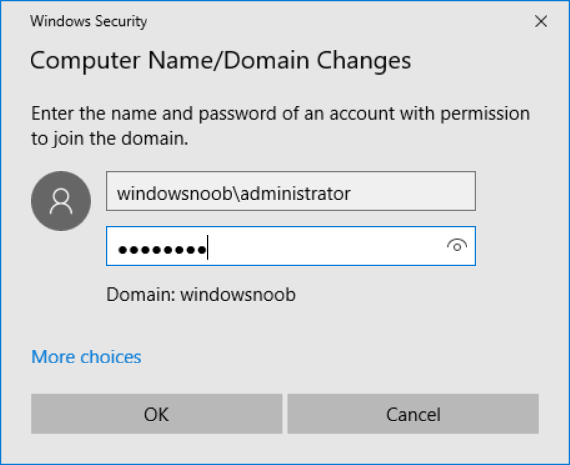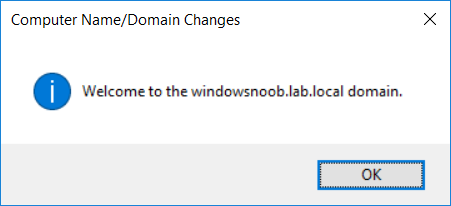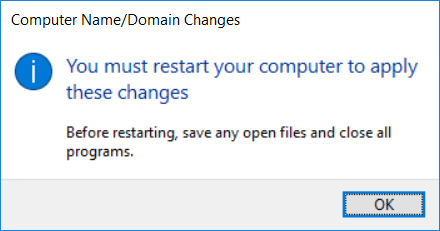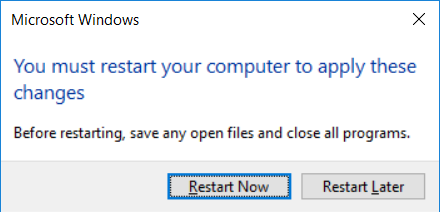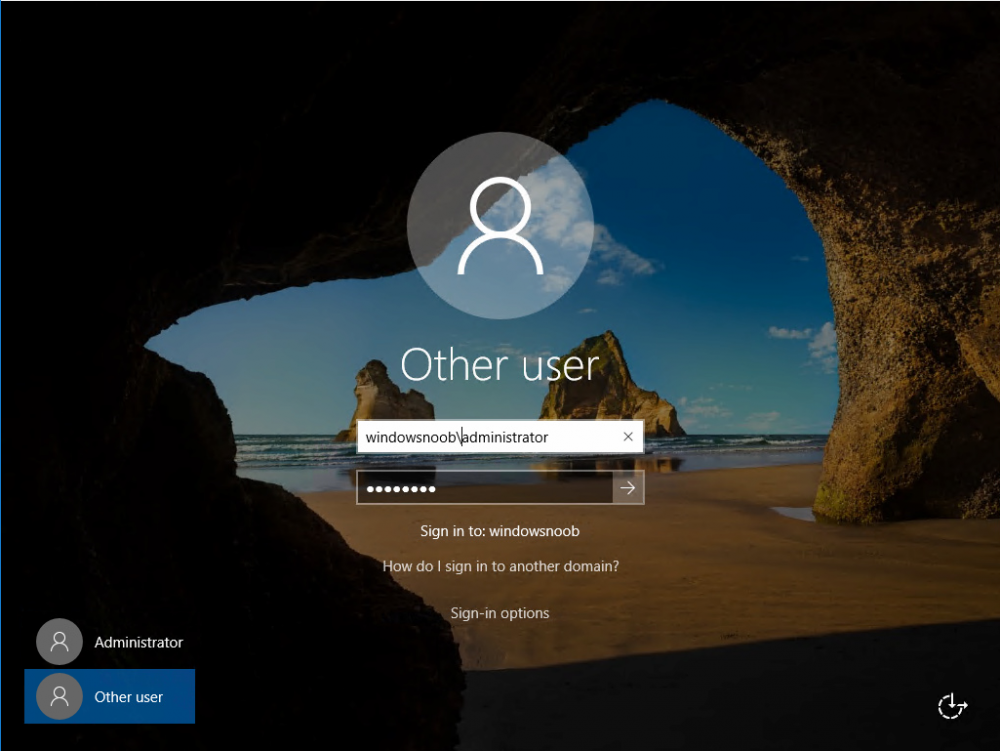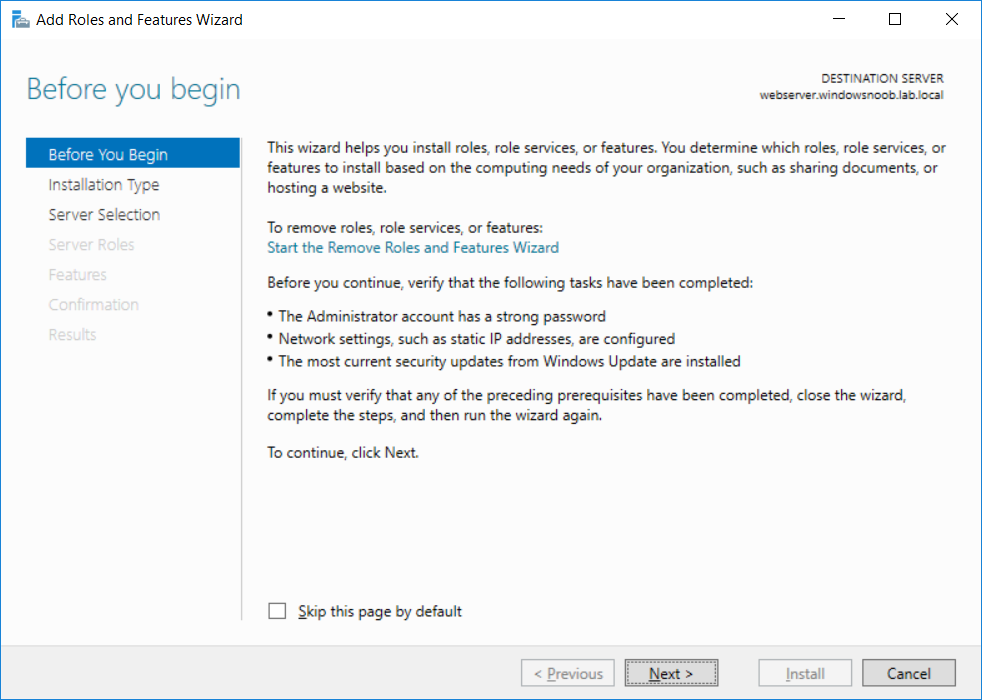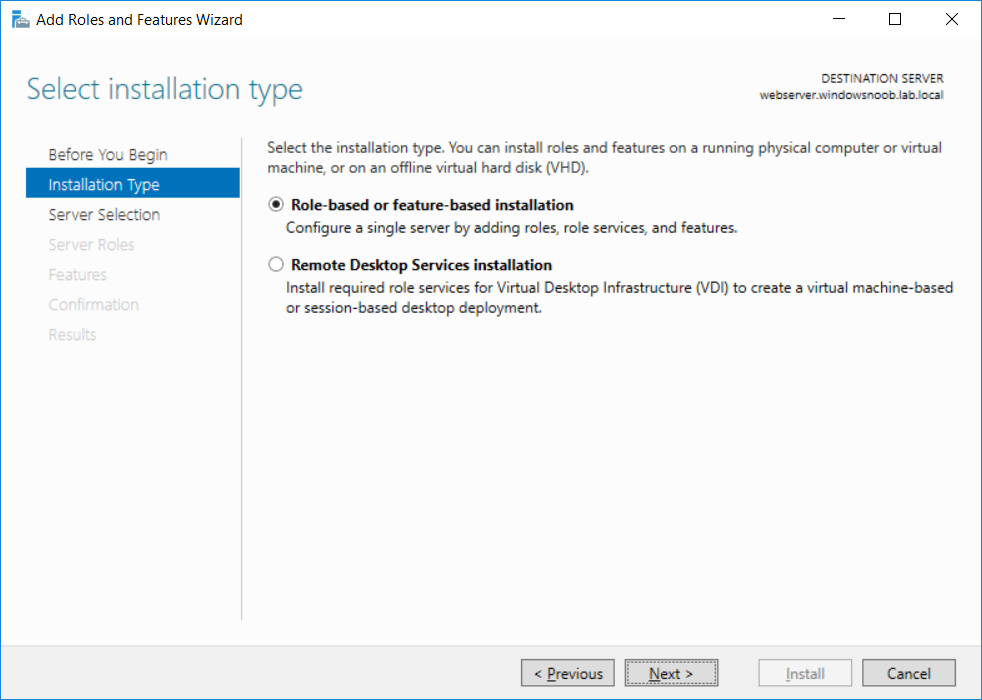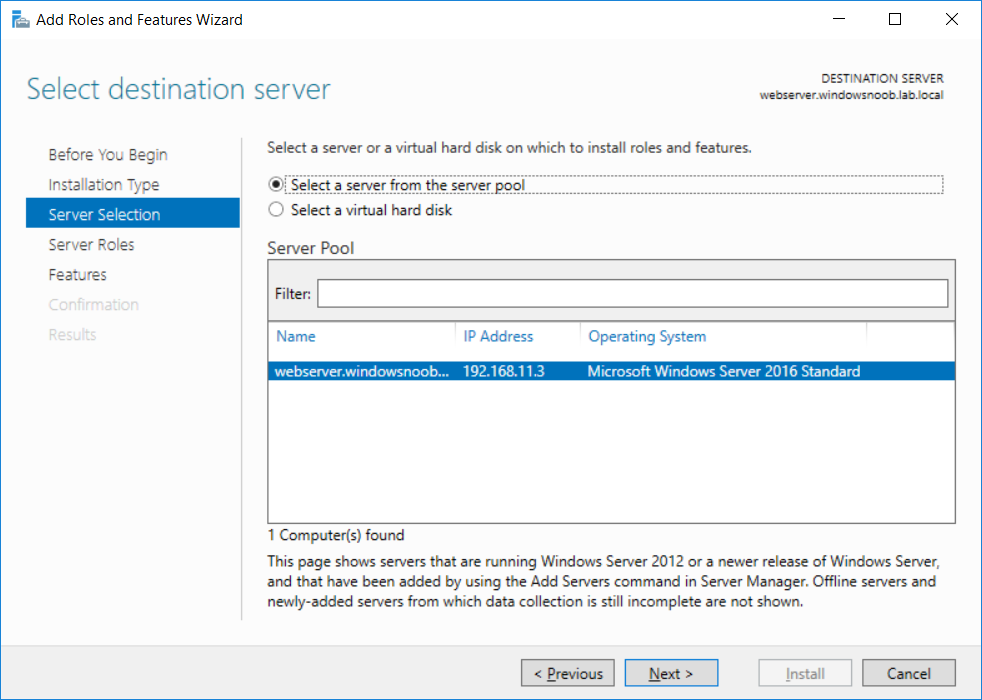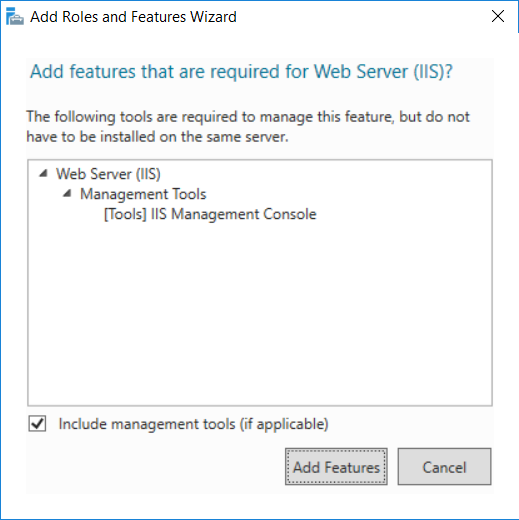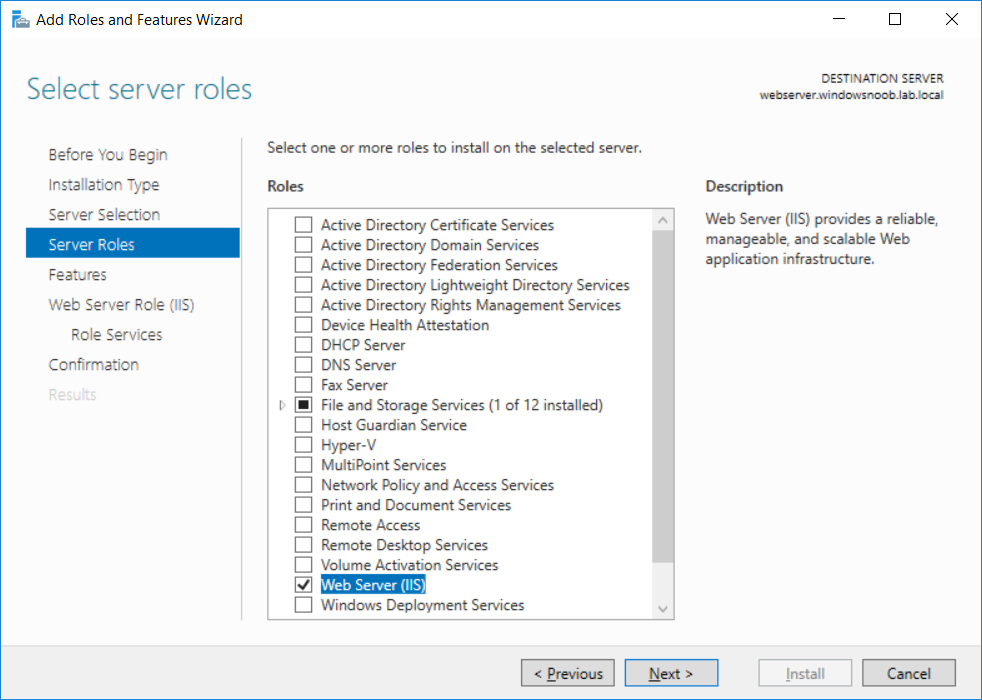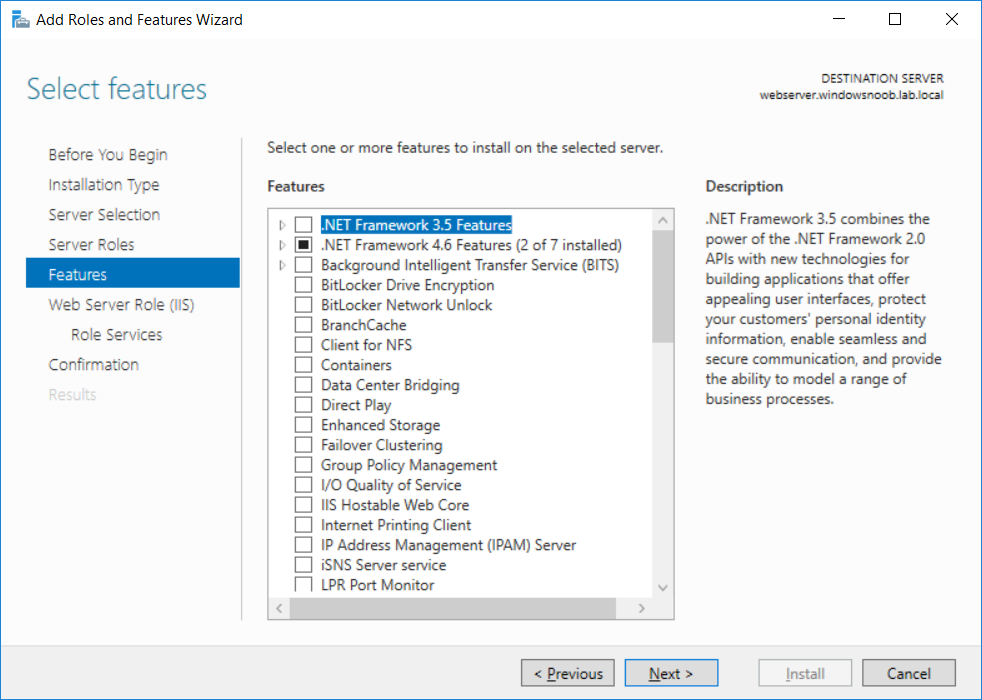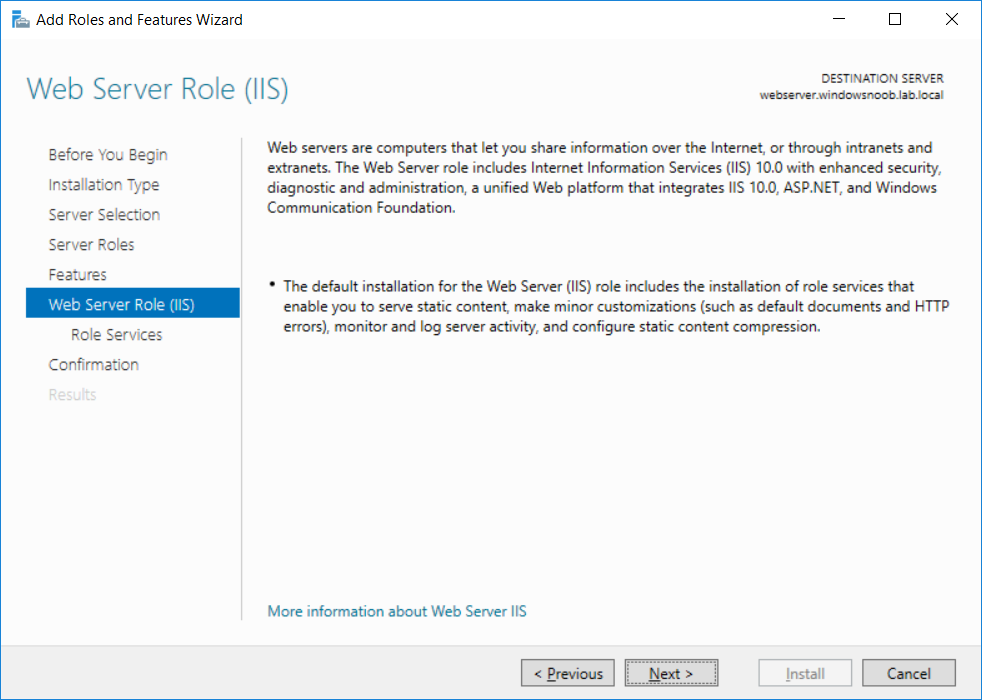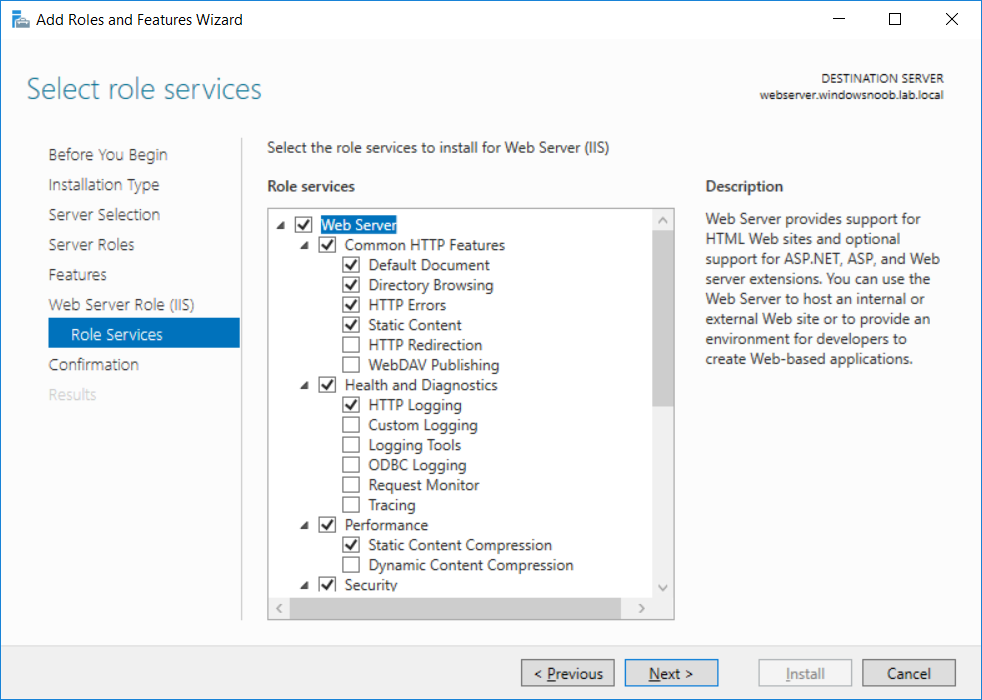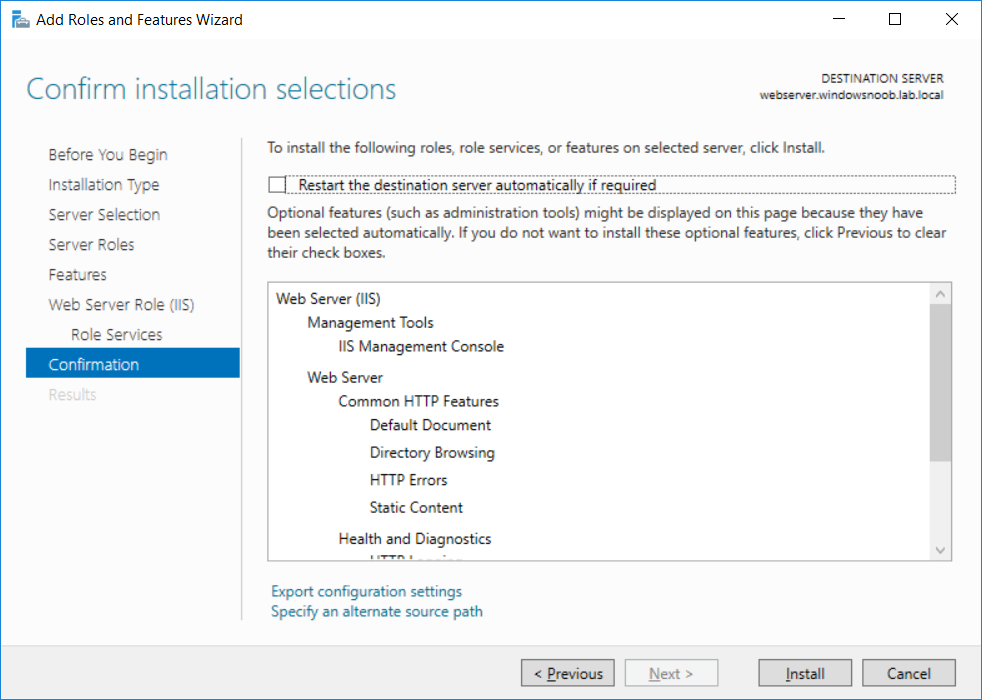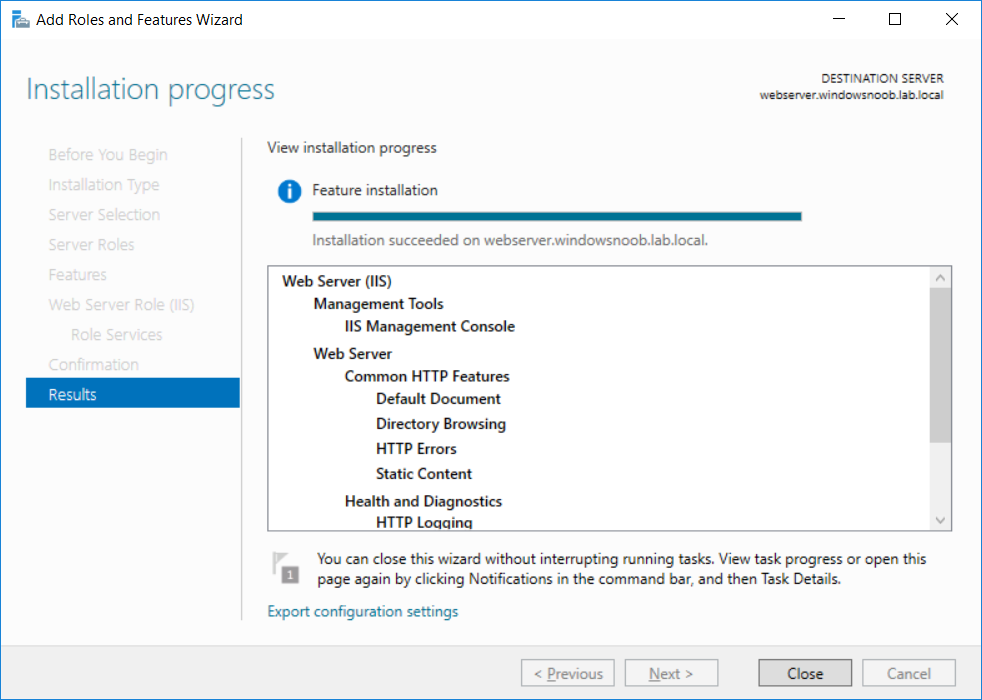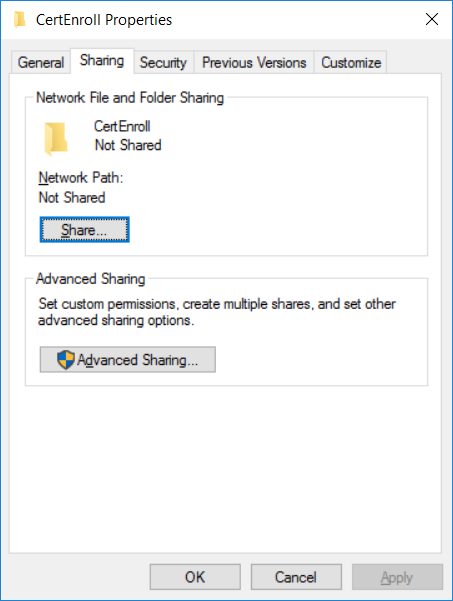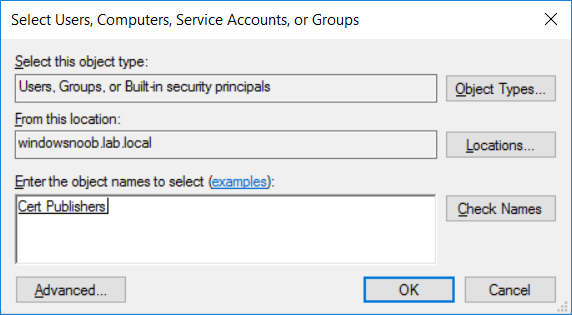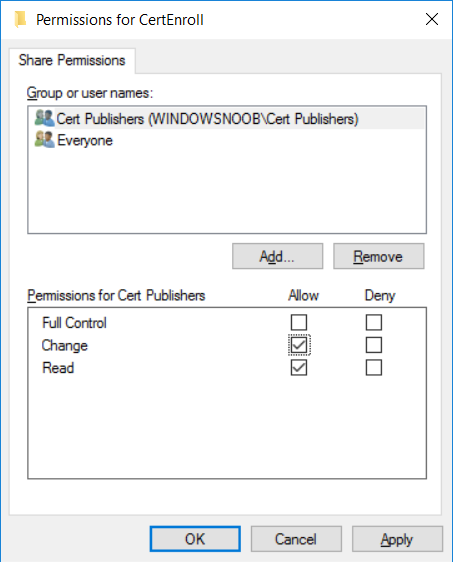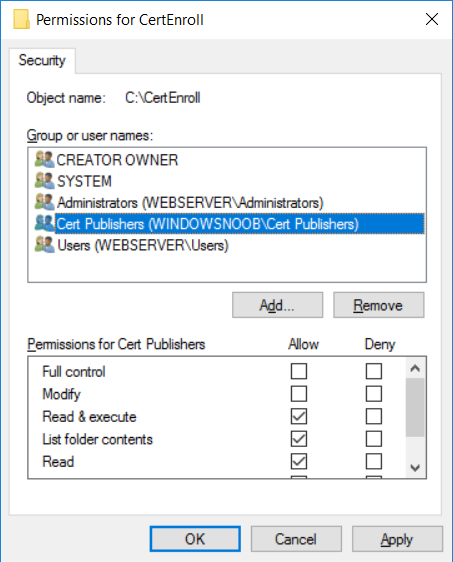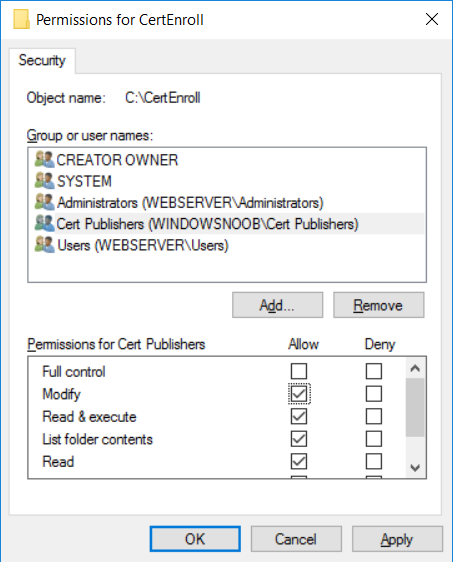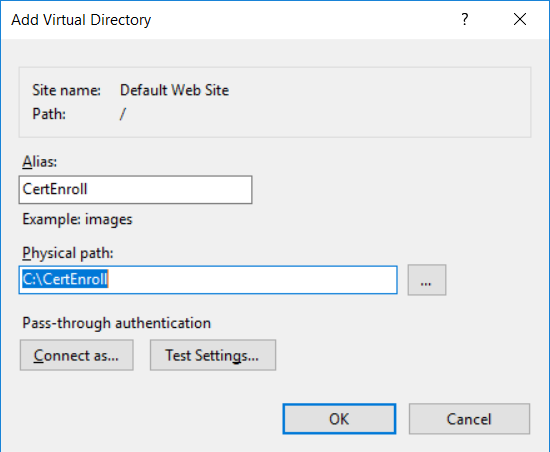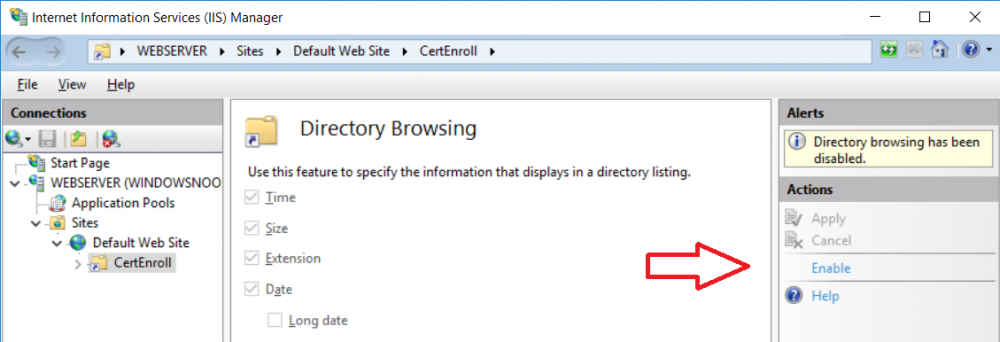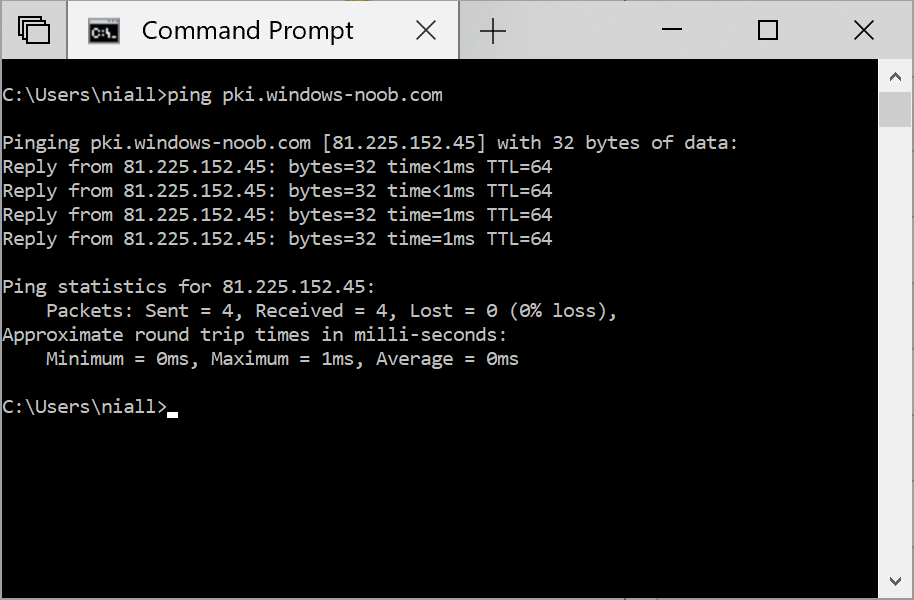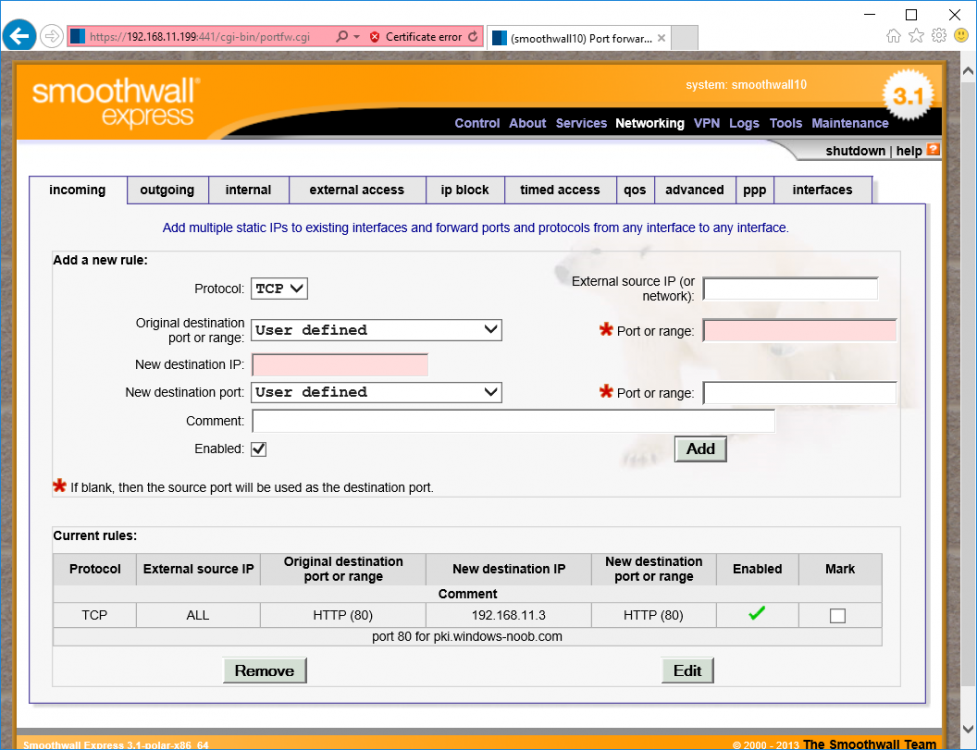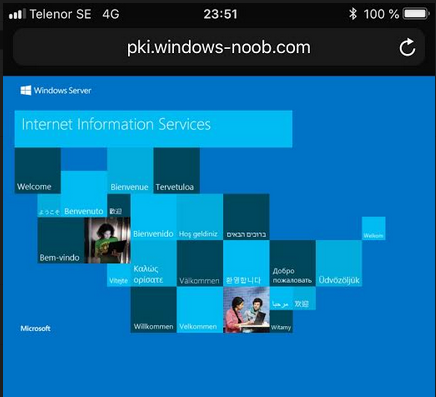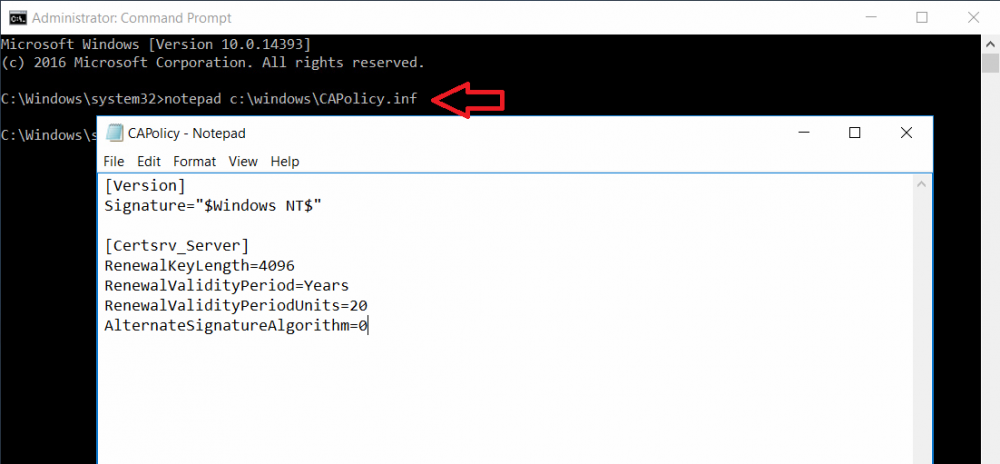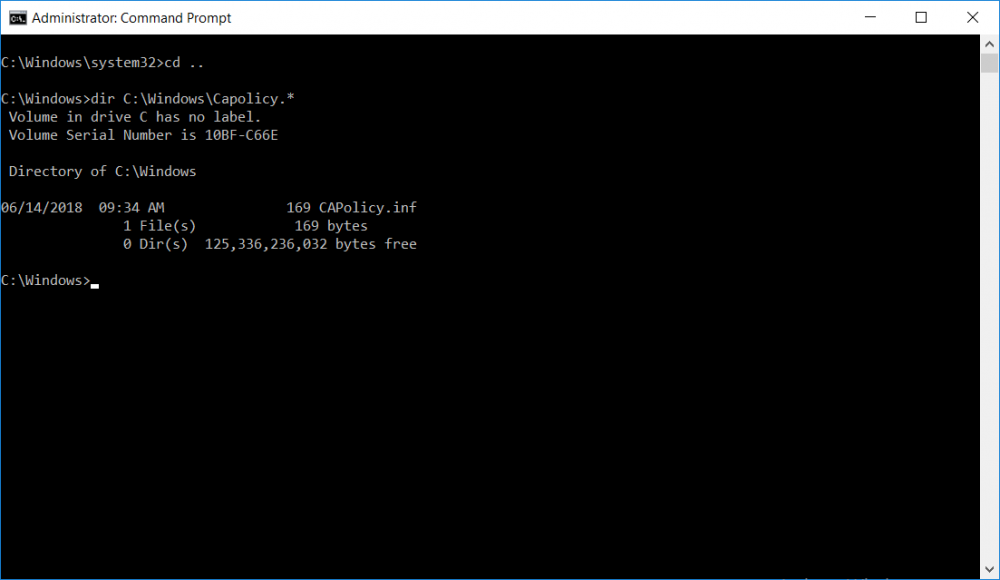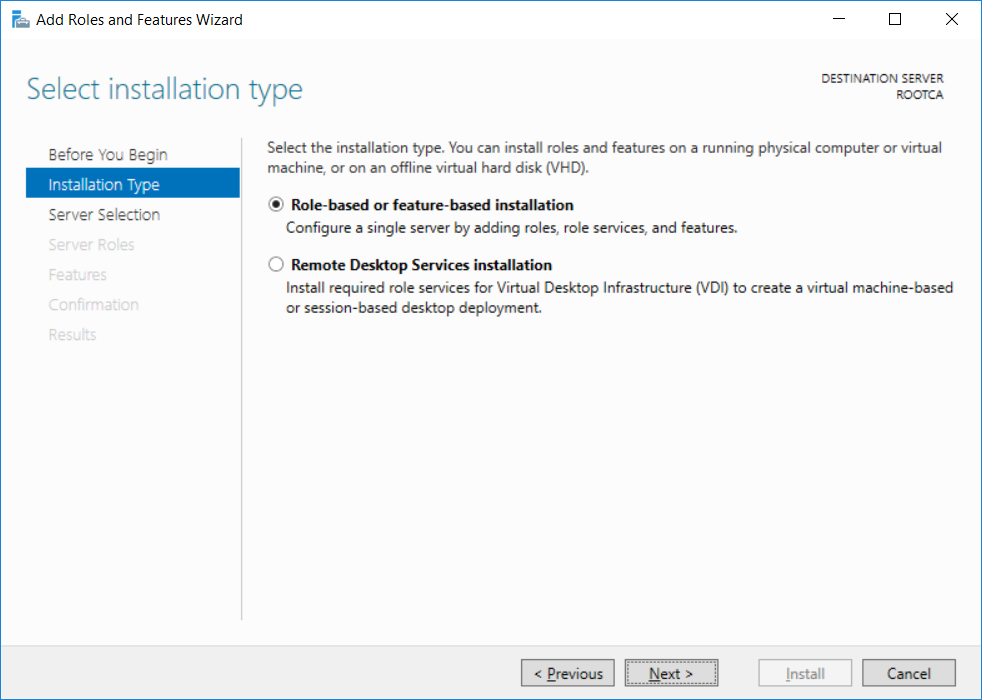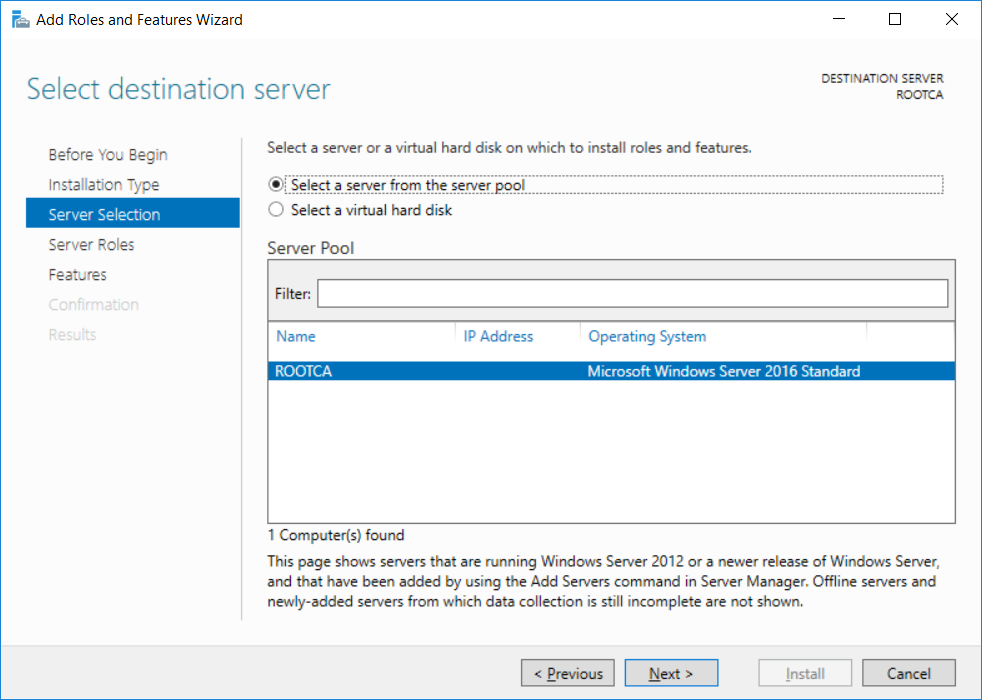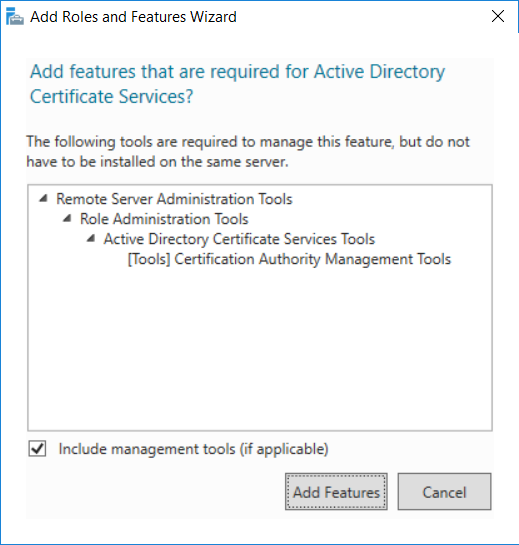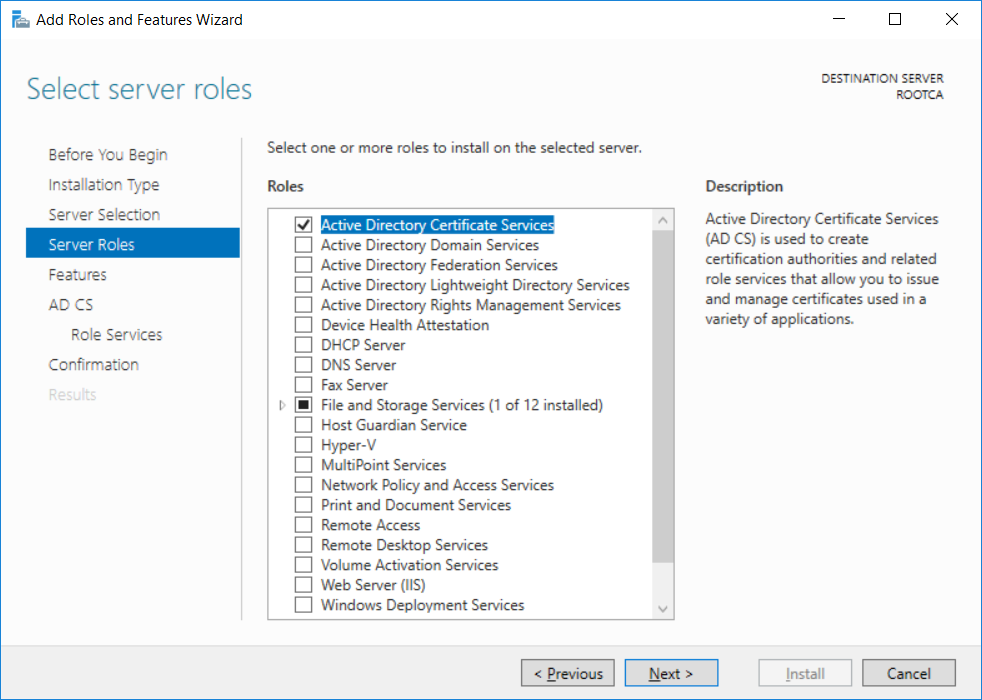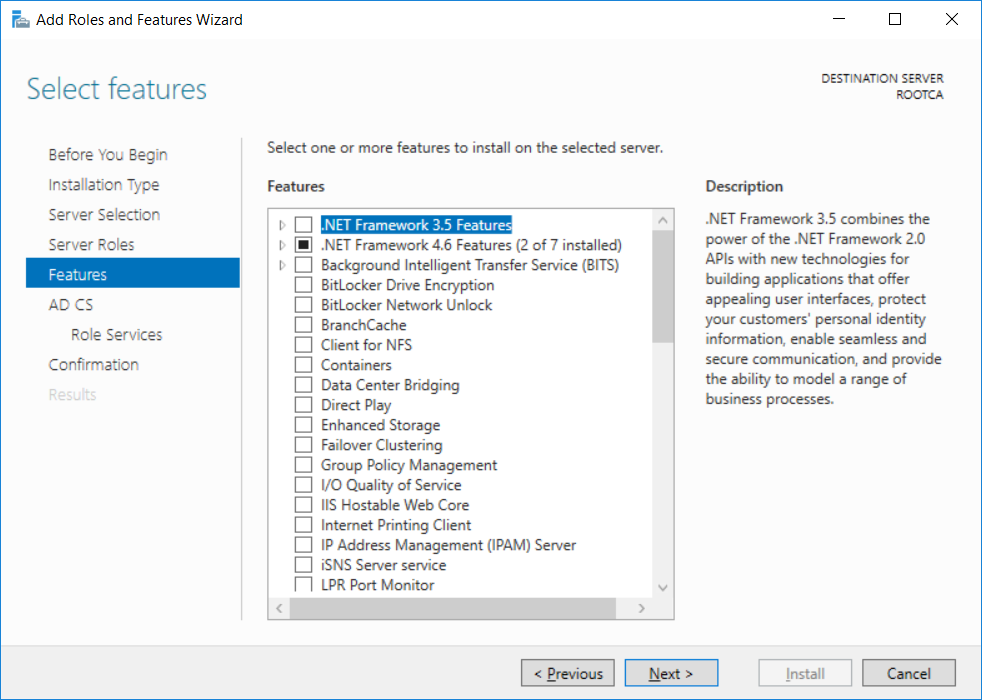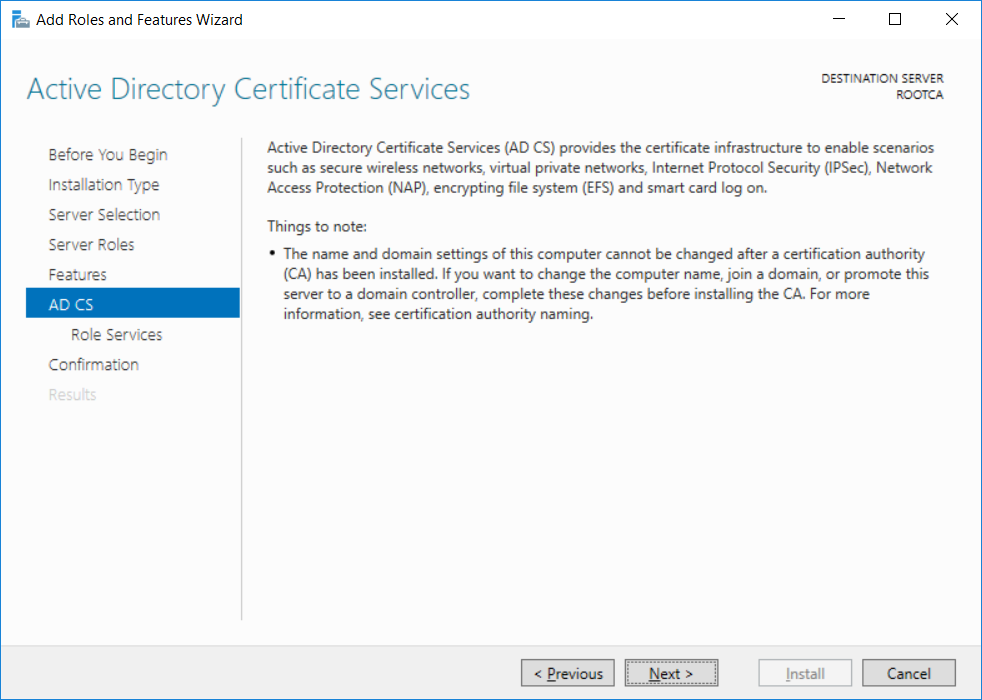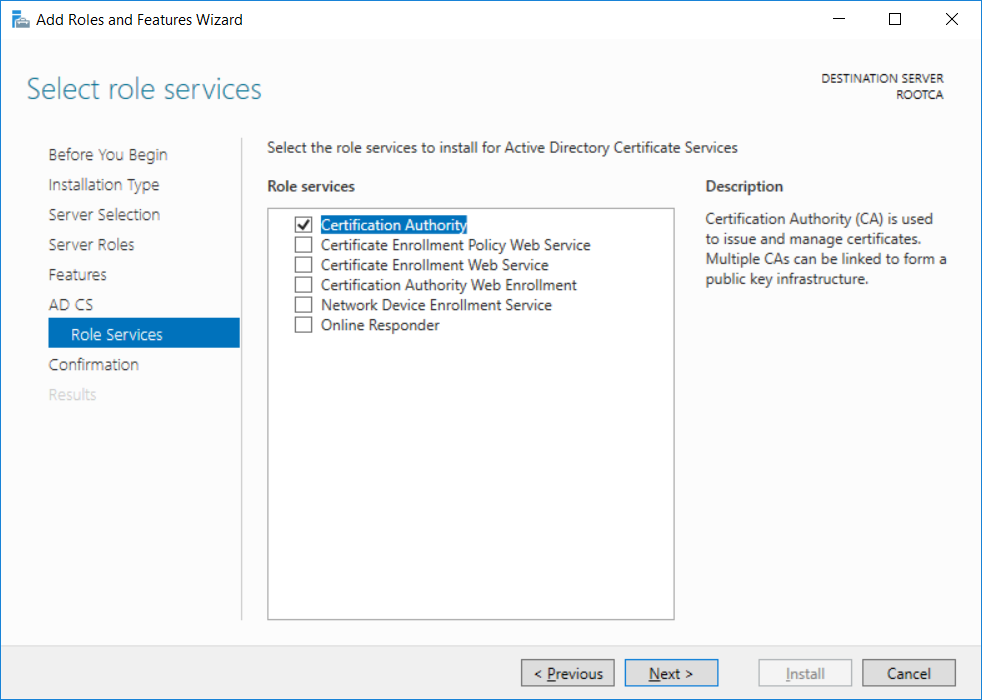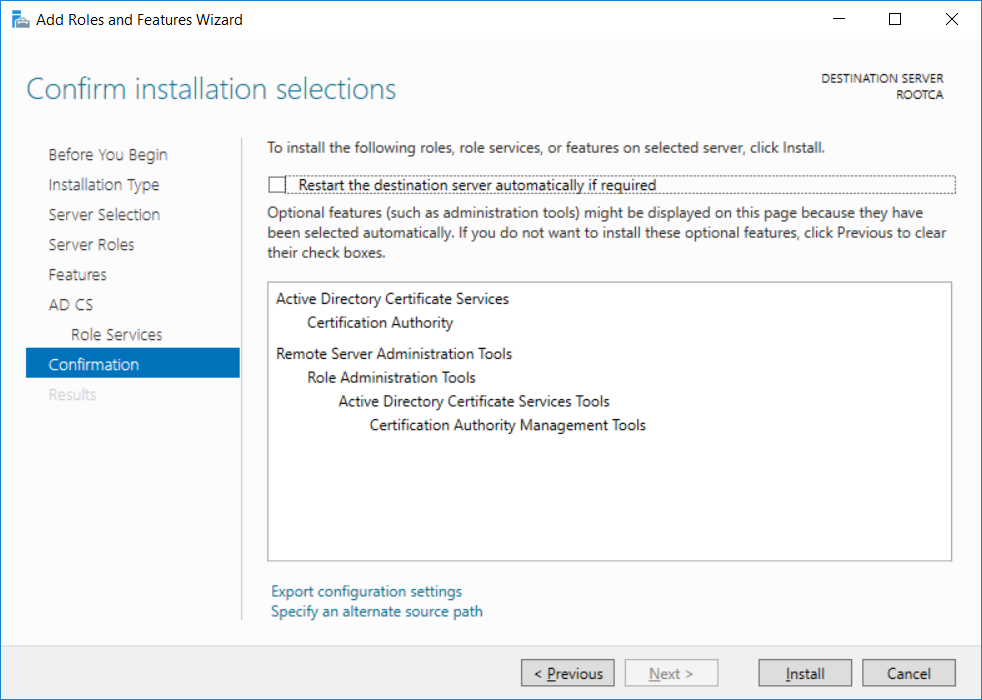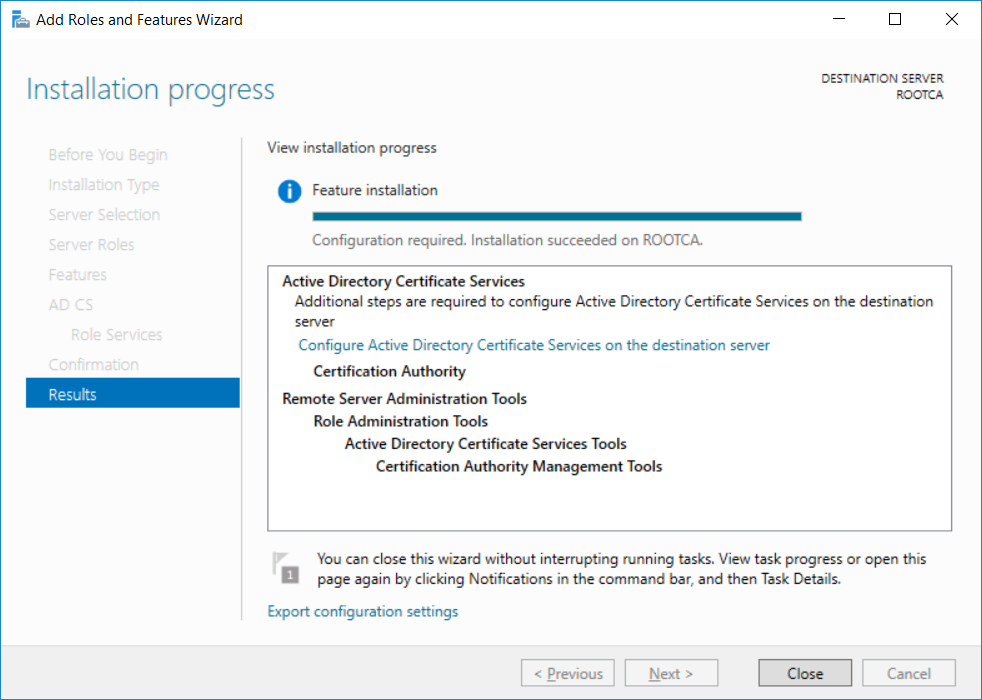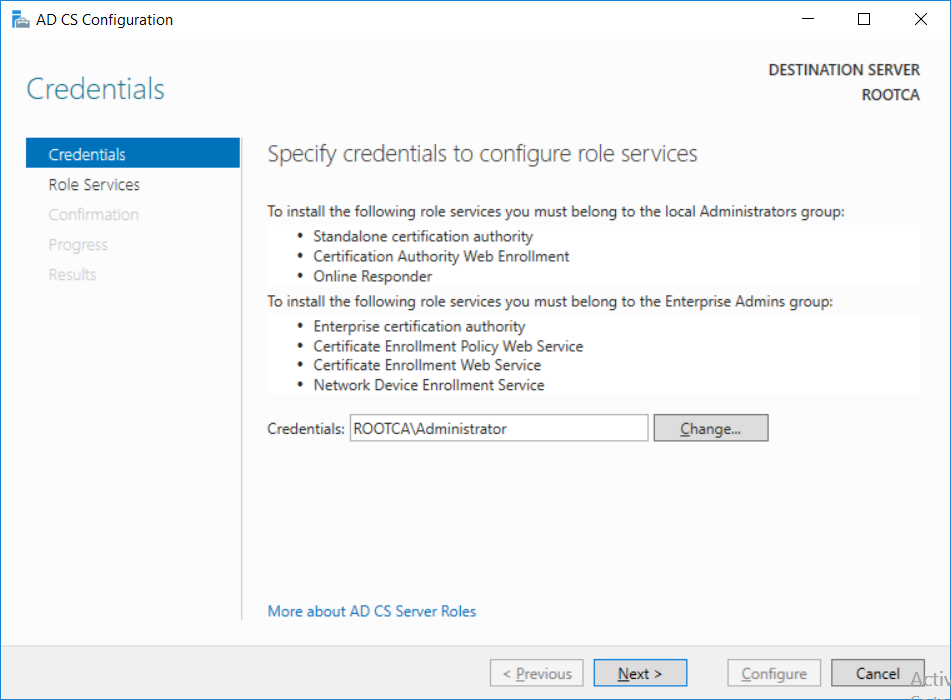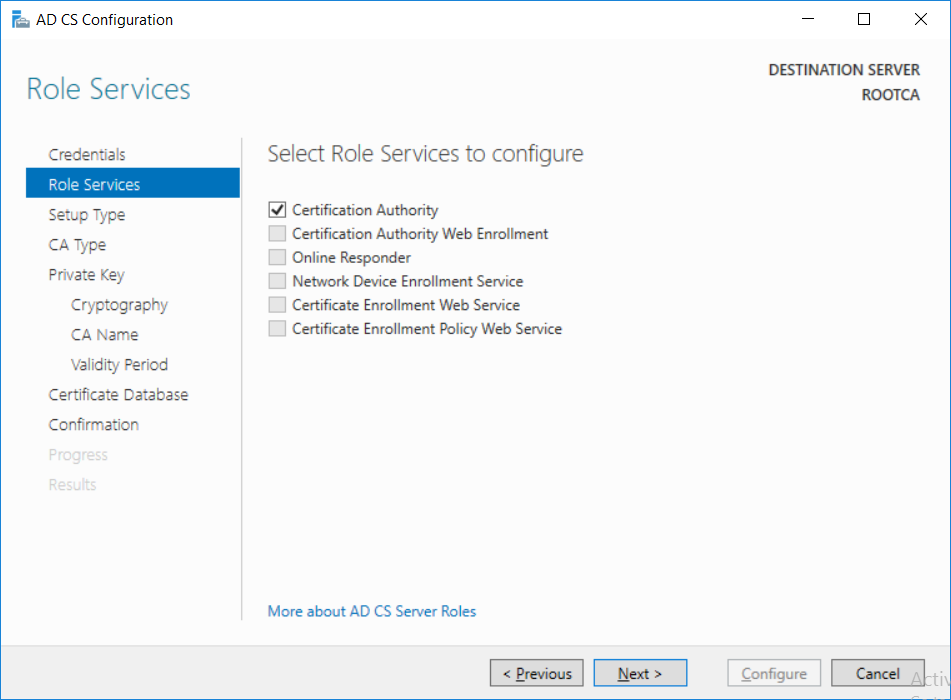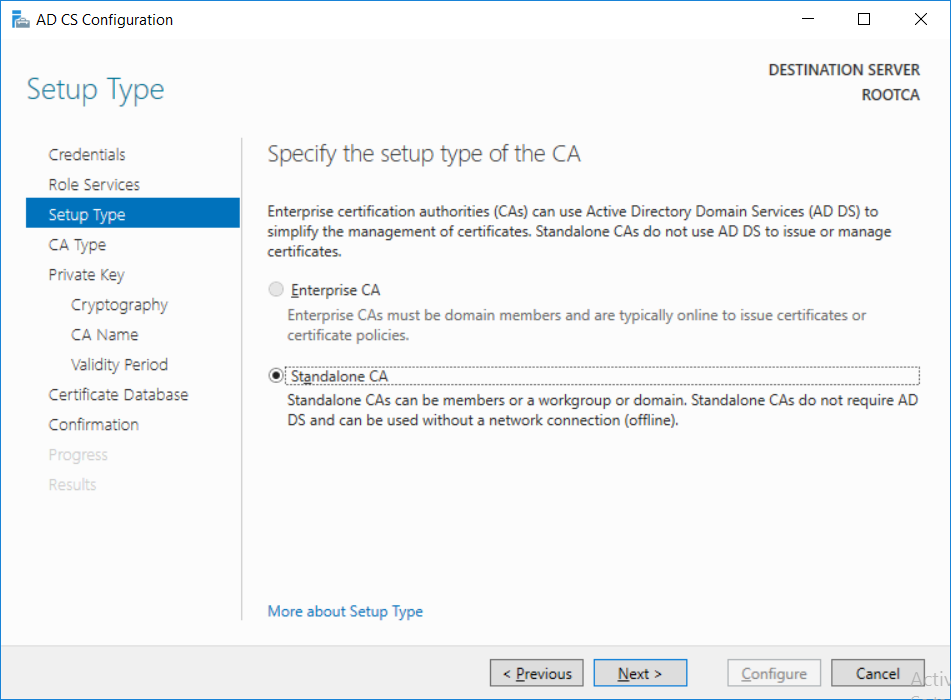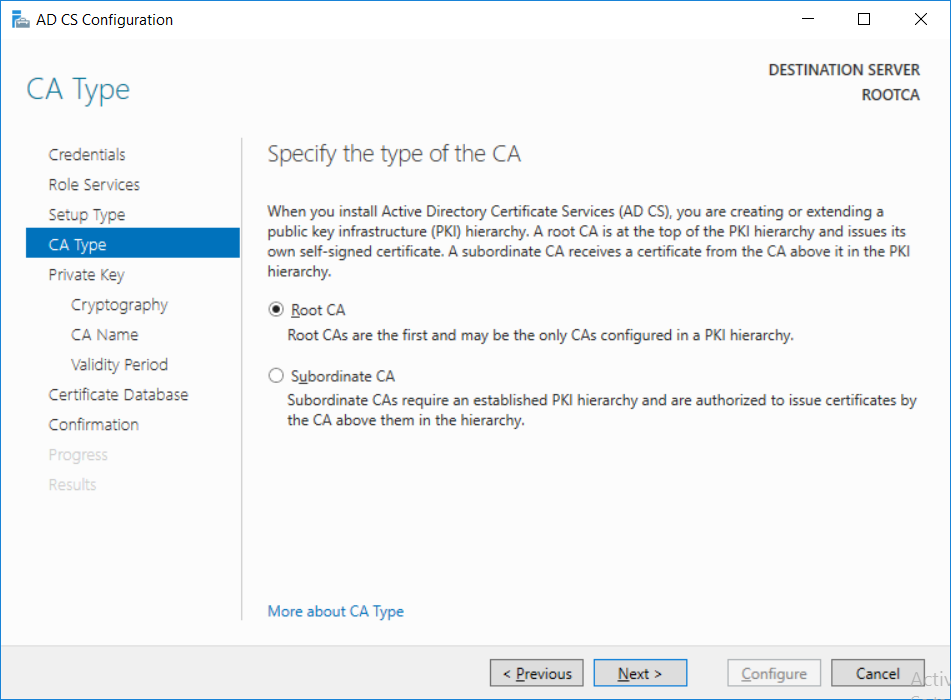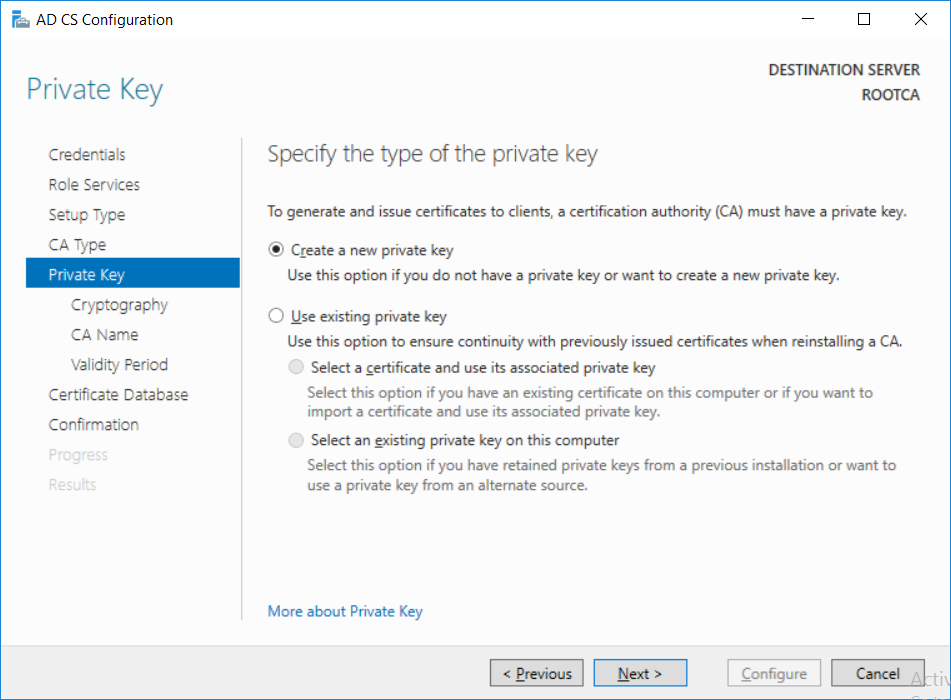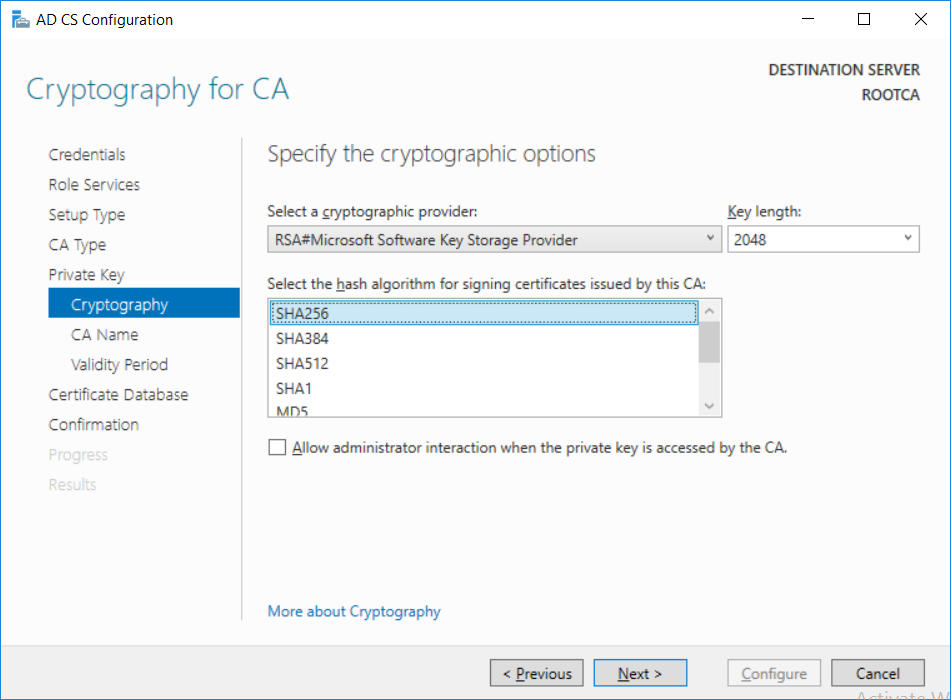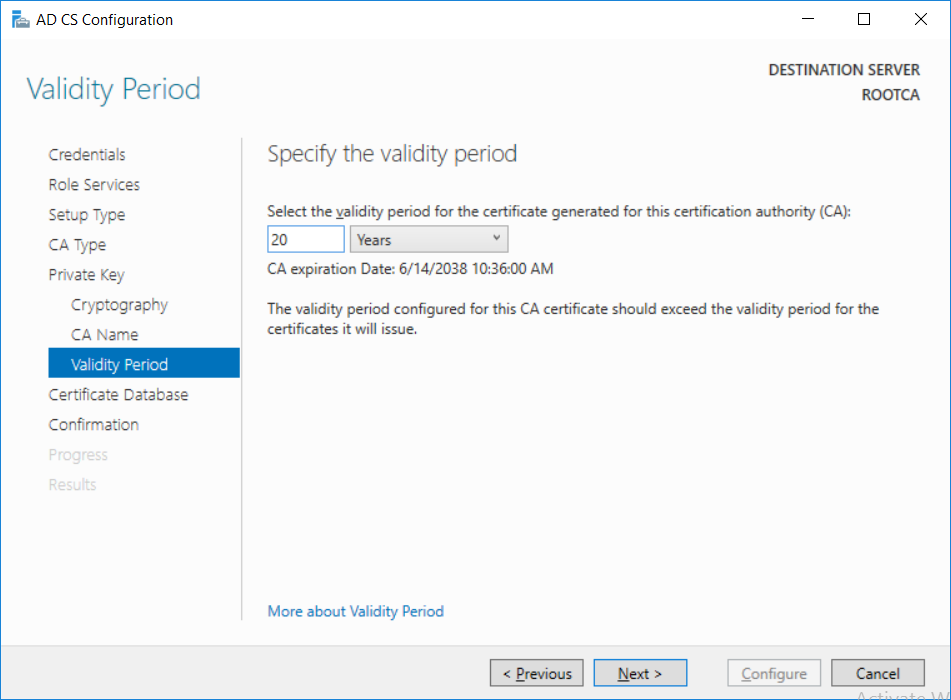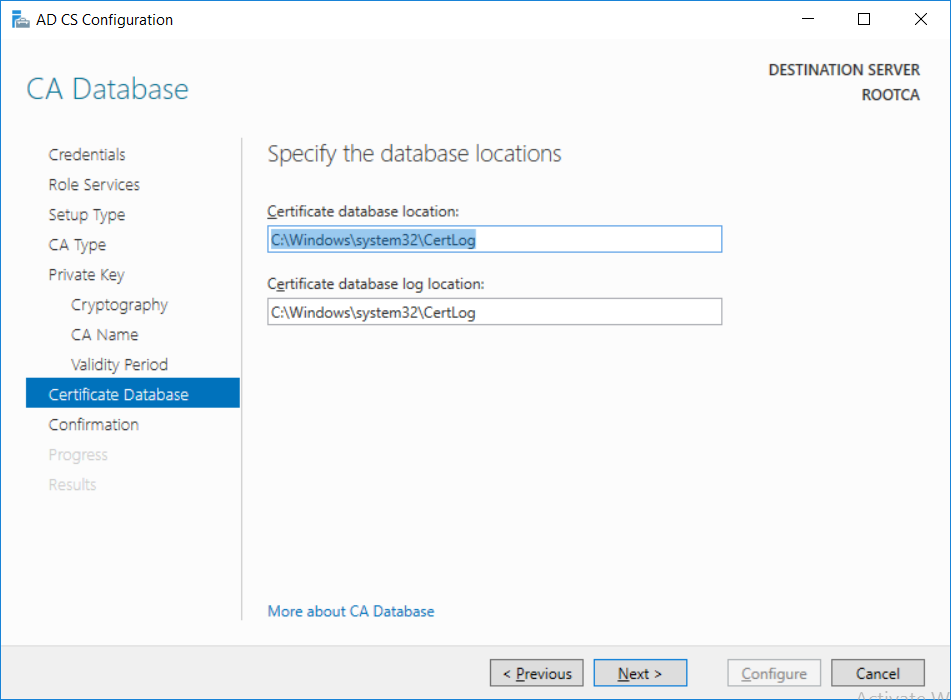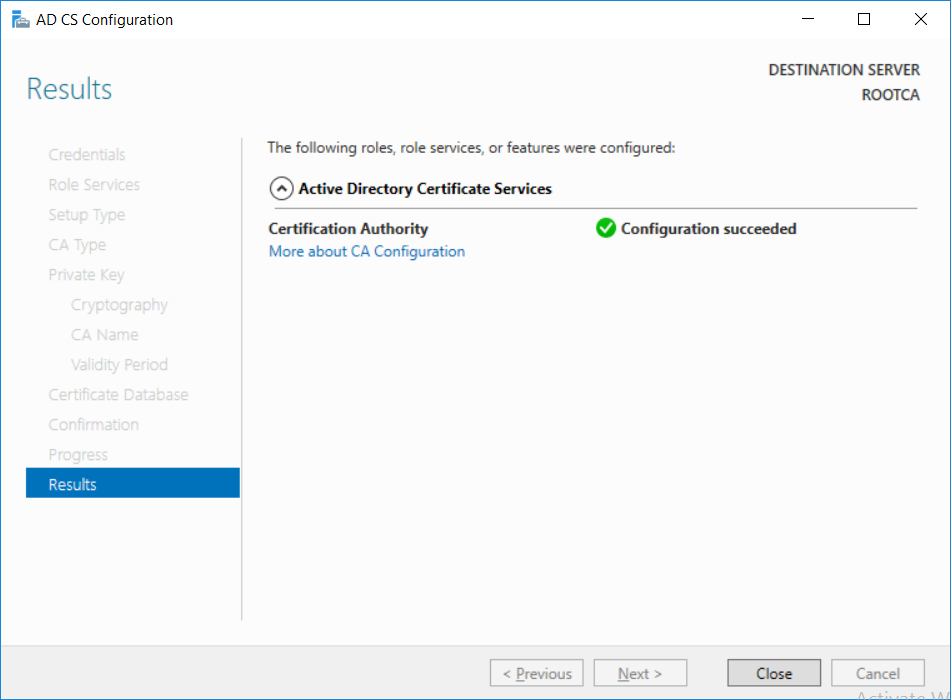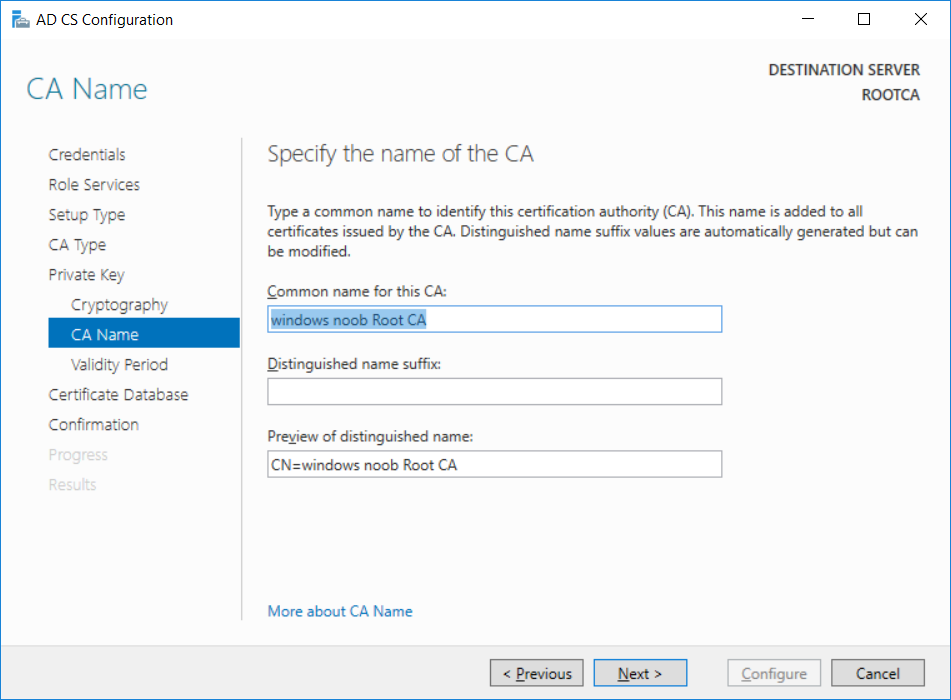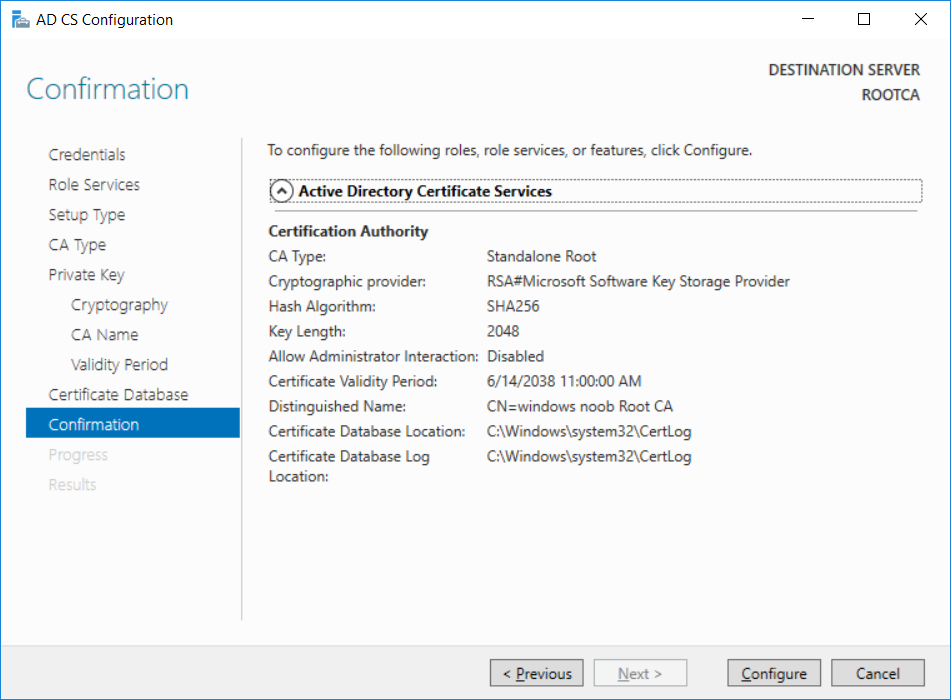-
Posts
9239 -
Joined
-
Last visited
-
Days Won
368
Everything posted by anyweb
-

PXE Boot Error "PXE-E53: No boot filename received"
anyweb replied to Newsy's topic in Configuration Manager 2012
you can't pxe boot on site B because you can't install Windows Deployment Services on Windows 7, you'll need a DP that supports WDS (Windows Server operating system) in order to PXE boot at that location. -
can you do a teamviewer session so i can remote in and see the problem ? if so, pm me the details, thanks if not, please raise a ticket with Microsoft CSS to get help thanks ! niall
- 56 replies
-
- current branch
- sccm
-
(and 1 more)
Tagged with:
-
if it's still failing, uninstall trend micro, reboot the server, and try again
- 56 replies
-
- current branch
- sccm
-
(and 1 more)
Tagged with:
-
what antivirus are you using ? can you disable it or add exclusions and try again ?
- 56 replies
-
- current branch
- sccm
-
(and 1 more)
Tagged with:
-
This series is comprised of different parts, listed below. Part 1 - Introduction and server setup Part 2 - Install and do initial configuration on the Standalone Offline Root CA Part 3 - Prepare the HTTP Web server for CDP and AIA Publication Part 4 - Post configuration on the Standalone Offline Root CA Part 5 - Installing the Enterprise Issuing CA Part 6 - Perform post installation tasks on the Issuing CA Part 7 - Install and configure the OCSP Responder role service Part 8 - Configure AutoEnroll and Verify PKI health (this part) In part 1 of this series, you configured your LAB for a 2 tier PKI hierarchy running on Windows Server 2016. You used PowerShell to create some virtual machines, and then installed Windows Server 2016, Windows 10 Enterprise version 1803 and optionally Smoothwall 3.1 before configuring the IP address scheme and Computer Names on the virtual machines. Finally you configured ADDS on DC01 so that you have a working Domain Controller for the rest of this LAB. In part 2 you installed and did the initial configuration on the Standalone Offline Root CA. In part 3 you prepared the HTTP Web Server for CDP and AIA Publication and you created a DNS record for the publicly available web server. In part 4 you performed post configuration on the Standalone Offline Root CA to set certificate revocation list (CRL) period registry settings using CertUtil, and then enabled object access Auditing and finally, you configured three locations for the Authority Information Access (AIA) and four locations for the Certificate revocation list Distribution Point (CDP), again using CertUtil. In part 5 you joined the IssuingCA computer to the windowsnoob domain before creating a new CAPolicy.inf file which was customized for the Issuing CA role. Next, you published the Root CA Certificate and CRL (both to Active Directory and the HTTP web server) and you installed the Enterprise Issuing CA before submitting a request to the StandAlone Offline Root CA. Next you installed the Issuing CA Certificate using the response files from the StandAlone Offline Root CA on the removable media. In part 6, you performed post installation and configuration of the IssuingCA server by configuring Certificate Revocation and CA Certificate Validity Periods, you then enabled auditing on the CA server, and configured the AIA and CDP. In part 7 you installed and configured the OCSP responder role service on the web server. Now you will configure Auto Enrollment and Verify PKI health. Step 1.Configure a GPO for Auto Enrollment Logon to to the Domain Controller (DC01) as windowsnoob\Administrator. Click Start, click Run, and then type gpmc.msc and press enter. Expand Forest, expand Domains, expand windowsnoob.lab.local, and then expand Group Policy Objects. Right click Default Domain Policy, then click Edit. Under Computer Configuration, expand Policies, expand Windows Settings, expand Security Settings, and then expand Public Key Policies. Select Certificate Services Client - Auto-Enrollment, right click and choose Properties. Change it from Not Configured to Enabled and enable the following 2 options. Renew expired certificates, update pending certificates, and remove revoked certificates Update certificate that use certificate templates As shown here. Click Apply when done, and close the Group Policy Management Editor and then close the Group Policy Management Console. Step 2. Configure AutoEnrollment for Workstation Authentication on the Issuing CA Ensure that you are logged on as windowsnoob\EntAdmin on the Issuing CA server (IssuingCA), start the Certification Authority console by entering certsrv.msc, ensure that windowsnoob Issuing CA is expanded. Right-click on Certificate Templates, then select Manage. In the Certificate Templates that appear, select Workstation Authentication. Right click it, and select Properties, click on the Security tab, select Domain Computers and ensure that AutoEnroll is selected, click Apply. Step 3. Join the Windows 10 computer to the domain Logon to Windows 10 version 1803 computer (Win101803) as Administrator, and copy the JoinDomain.ps1 script below to a folder called C:\Scripts. Open the script in PowerShell ISE as Administrator, then run Set-ExecutionPolicy to unrestricted before running the JoinDomain.ps1 PowerShell script by clicking on the Green Arrow in Windows PowerShell ISE. JoinDomain.ps1 Note: The computer will reboot by itself after joining the windowsnoob.lab.local domain. Step 4. Check PKI Health with Enterprise PKI To use the Enterprise PKI console to check PKI health, on the IssuingCA server, ensure that you are logged on as windowsnoob\entadmin. Run PKIView.msc from an administrative command prompt. Right click Enterprise PKI and then click Manage AD Containers. On the NTAuthCertificates tab, verify the windows noob Issuing CA certificate appears with a status of OK as shown below: On the AIA Container tab, verify both the windows noob Root CA and the windows noob Issuing CA certificates are present with a status of OK. On the CDP Container tab, verify that the windows noob Issuing CA has both Delta CRL and Base CRL, and that the windows noob Root CA has a Base CRL present and with a status of OK. On the Certification Authorities Container, verify that the windows noob Root CA certificate is present and with a status of OK. and finally on the Enrollment Services Container tab, verify that the windows noob Issuing CA certificate is present with a status of OK. Step 5. Configure Certificate Distribution on the Issuing CA To publish a certificate for computers in the enterprise do as follows. Logon to the IssuingCA computer as windowsnoob\EntAdmin. In the Certification Authority console (certsrv.msc), ensure that windows noob Issuing CA is expanded. Right-click Certificate Templates, select New and select Certificate Template to Issue. On the Enable Certificate Templates dialog box, select Workstation Authentication and then click OK. Step 6. verify certificate autoenrollment on the Windows 10 client To verify that autoenrollment of certificates on the Windows 10 compute do as follows. Log on to win101803.windowsnoob.lab.local as windowsnoob\Administrator. (Ensure that you switch user to log on as windowsnoob\Administrator) Click Start, type mmc and then press ENTER. Click File, and then click Add/Remove Snap-in. Click Certificates, then click Add, Select Computer Account, and then click Finish. Click OK. Expand Personal and select Certificates, if you do not see Certificates, in an Administrative Command prompt issue the following command gpupdate /force then refresh the view in the Certificates MMC. You should now see a Certificates folder and a certificate listed. This certificate was issued using AutoEnrollment which was configured above. Step 7. Verify PKI health on the issued certificate While logged on to W101803.windowsnoob.local.local as windowsnoob\Administrator, In the certificates console tree, expand Personal, click Certificates. In the details pane, right click the W101803.windowsnoob.lab.local certificate, click All Tasks, and then click Export. the Welcome to the certificate export wizard appears, click Next. Click Next at the No do not export the private key screen On the Export File Format page, click Next. [DER encoded binary X.509 (.CER) is the default selection]. in the File to Export, call it C:\Windows10 at the completing the certificate export wizard screen click Finish. you should be notified of the success of the export. Open an administrative command prompt and run the following commands: cd\ then certutil -URL C:\Windows10.cer The URL retrieval tool should appear. In the URL Retrieval Tool, select the OCSP (from AIA) option and then click Retrieve. Confirm that it shows status as Verified. In the URL Retrieval Tool, select the CRLs (from CDP) option and then click Retrieve. Confirm that it shows status as Verified. In the URL Retrieval Tool, select the Certs (from AIA) option and then click Retrieve. Confirm that it shows status as Verified. Click Exit to close URL Retrieval Tool. From the administrative command prompt run following command to thoroughly verify the certificate chain retrieval and revocation status. certutil -verify -urlfetch C:\Windows10.cer you'll see a lot of output similar to the following PS C:\> certutil -verify -urlfetch C:\Windows10.cer Issuer: CN=windows noob Issuing CA DC=windowsnoob DC=lab DC=local Name Hash(sha1): b500ca9b33a216fcc44492f25bb6e6b8bd6a5a78 Name Hash(md5): b0c8a9c15f77c9e2b7af24718ab3f3ec Subject: EMPTY (DNS Name=W101803.windowsnoob.lab.local) Name Hash(sha1): f944dcd635f9801f7ac90a407fbc479964dec024 Name Hash(md5): a46c3b54f2c9871cd81daf7a932499c0 Cert Serial Number: 1e000000057a5838e2727d5162000000000005 dwFlags = CA_VERIFY_FLAGS_CONSOLE_TRACE (0x20000000) dwFlags = CA_VERIFY_FLAGS_DUMP_CHAIN (0x40000000) ChainFlags = CERT_CHAIN_REVOCATION_CHECK_CHAIN_EXCLUDE_ROOT (0x40000000) HCCE_LOCAL_MACHINE CERT_CHAIN_POLICY_BASE -------- CERT_CHAIN_CONTEXT -------- ChainContext.dwInfoStatus = CERT_TRUST_HAS_PREFERRED_ISSUER (0x100) ChainContext.dwRevocationFreshnessTime: 3 Weeks, 1 Hours, 35 Minutes, 37 Seconds SimpleChain.dwInfoStatus = CERT_TRUST_HAS_PREFERRED_ISSUER (0x100) SimpleChain.dwRevocationFreshnessTime: 3 Weeks, 1 Hours, 35 Minutes, 37 Seconds CertContext[0][0]: dwInfoStatus=102 dwErrorStatus=0 Issuer: CN=windows noob Issuing CA, DC=windowsnoob, DC=lab, DC=local NotBefore: 7/6/2018 4:04 AM NotAfter: 7/6/2019 4:04 AM Subject: Serial: 1e000000057a5838e2727d5162000000000005 SubjectAltName: DNS Name=W101803.windowsnoob.lab.local Template: Workstation Authentication Cert: 9eae120ea27c064e609df51cacda77e286a223d6 Element.dwInfoStatus = CERT_TRUST_HAS_KEY_MATCH_ISSUER (0x2) Element.dwInfoStatus = CERT_TRUST_HAS_PREFERRED_ISSUER (0x100) ---------------- Certificate AIA ---------------- Verified "Certificate (0)" Time: 0 33daad0a6923fdbd02300d703264d13d70eedf42 [0.0] ldap:///CN=windows%20noob%20Issuing%20CA,CN=AIA,CN=Public%20Key%20Services,CN=Services,CN=Configuration,DC=windowsnoob,DC=lab,DC=local?cACertificate?base?objectClass=certificationAuthority Verified "Certificate (0)" Time: 0 33daad0a6923fdbd02300d703264d13d70eedf42 [1.0] http://pki.windows-noob.com/CertEnroll/IssuingCA.windowsnoob.lab.local_windows%20noob%20Issuing%20CA.crt ---------------- Certificate CDP ---------------- Verified "Base CRL (05)" Time: 0 7cf12cea65a271e322dcd148dafca9890381d68c [0.0] ldap:///CN=windows%20noob%20Issuing%20CA,CN=IssuingCA,CN=CDP,CN=Public%20Key%20Services,CN=Services,CN=Configuration,DC=windowsnoob,DC=lab,DC=local?certificateRevocationList?base?objectClass=cRLDistributionPoint Verified "Delta CRL (05)" Time: 0 b27c6e817abccb07e6d18c37c808013cc1377c1d [0.0.0] ldap:///CN=windows%20noob%20Issuing%20CA,CN=IssuingCA,CN=CDP,CN=Public%20Key%20Services,CN=Services,CN=Configuration,DC=windowsnoob,DC=lab,DC=local?deltaRevocationList?base?objectClass=cRLDistributionPoint Verified "Delta CRL (05)" Time: 0 b27c6e817abccb07e6d18c37c808013cc1377c1d [0.0.1] http://pki.windows-noob.com/CertEnroll/windows%20noob%20Issuing%20CA+.crl Verified "Base CRL (05)" Time: 0 7cf12cea65a271e322dcd148dafca9890381d68c [1.0] http://pki.windows-noob.com/CertEnroll/windows%20noob%20Issuing%20CA.crl Verified "Delta CRL (05)" Time: 0 b27c6e817abccb07e6d18c37c808013cc1377c1d [1.0.0] ldap:///CN=windows%20noob%20Issuing%20CA,CN=IssuingCA,CN=CDP,CN=Public%20Key%20Services,CN=Services,CN=Configuration,DC=windowsnoob,DC=lab,DC=local?deltaRevocationList?base?objectClass=cRLDistributionPoint Verified "Delta CRL (05)" Time: 0 b27c6e817abccb07e6d18c37c808013cc1377c1d [1.0.1] http://pki.windows-noob.com/CertEnroll/windows%20noob%20Issuing%20CA+.crl ---------------- Base CRL CDP ---------------- OK "Delta CRL (07)" Time: 0 b27c6e817abccb07e6d18c37c808013cc1377c1d [0.0] ldap:///CN=windows%20noob%20Issuing%20CA,CN=IssuingCA,CN=CDP,CN=Public%20Key%20Services,CN=Services,CN=Configuration,DC=windowsnoob,DC=lab,DC=local?deltaRevocationList?base?objectClass=cRLDistributionPoint OK "Delta CRL (07)" Time: 0 b27c6e817abccb07e6d18c37c808013cc1377c1d [1.0] http://pki.windows-noob.com/CertEnroll/windows%20noob%20Issuing%20CA+.crl ---------------- Certificate OCSP ---------------- Verified "OCSP" Time: 0 f7d32928b44de5b419a11bac19cc56fad7d4f9ee [0.0] http://webserver.windowsnoob.lab.local/ocsp -------------------------------- CRL 05: Issuer: CN=windows noob Issuing CA, DC=windowsnoob, DC=lab, DC=local ThisUpdate: 7/3/2018 7:02 AM NextUpdate: 7/10/2018 7:22 PM CRL: 7cf12cea65a271e322dcd148dafca9890381d68c Delta CRL 07: Issuer: CN=windows noob Issuing CA, DC=windowsnoob, DC=lab, DC=local ThisUpdate: 7/5/2018 7:02 AM NextUpdate: 7/6/2018 7:22 PM CRL: b27c6e817abccb07e6d18c37c808013cc1377c1d Application[0] = 1.3.6.1.5.5.7.3.2 Client Authentication CertContext[0][1]: dwInfoStatus=102 dwErrorStatus=0 Issuer: CN=windows noob Root CA NotBefore: 6/19/2018 4:34 AM NotAfter: 6/19/2028 4:44 AM Subject: CN=windows noob Issuing CA, DC=windowsnoob, DC=lab, DC=local Serial: 5600000002ff2362e624faf00a000000000002 Template: SubCA Cert: 33daad0a6923fdbd02300d703264d13d70eedf42 Element.dwInfoStatus = CERT_TRUST_HAS_KEY_MATCH_ISSUER (0x2) Element.dwInfoStatus = CERT_TRUST_HAS_PREFERRED_ISSUER (0x100) ---------------- Certificate AIA ---------------- Verified "Certificate (0)" Time: 0 1c2e0479a69623ffddcec692d01af64996b2b6e9 [0.0] ldap:///CN=windows%20noob%20Root%20CA,CN=AIA,CN=Public%20Key%20Services,CN=Services,CN=Configuration,DC=windowsnoob,DC=lab,DC=local?cACertificate?base?objectClass=certificationAuthority Verified "Certificate (0)" Time: 0 1c2e0479a69623ffddcec692d01af64996b2b6e9 [1.0] http://pki.windows-noob.com/CertEnroll/ROOTCA_windows%20noob%20Root%20CA.crt ---------------- Certificate CDP ---------------- Verified "Base CRL (02)" Time: 0 22cafd2ae550e12401696bac4a424652050c55a2 [0.0] ldap:///CN=windows%20noob%20Root%20CA,CN=ROOTCA,CN=CDP,CN=Public%20Key%20Services,CN=Services,CN=Configuration,DC=windowsnoob,DC=lab,DC=local?certificateRevocationList?base?objectClass=cRLDistributionPoint Verified "Base CRL (02)" Time: 0 22cafd2ae550e12401696bac4a424652050c55a2 [1.0] http://pki.windows-noob.com/CertEnroll/windows%20noob%20Root%20CA.crl ---------------- Base CRL CDP ---------------- No URLs "None" Time: 0 (null) ---------------- Certificate OCSP ---------------- No URLs "None" Time: 0 (null) -------------------------------- CRL 02: Issuer: CN=windows noob Root CA ThisUpdate: 6/15/2018 3:12 AM NextUpdate: 6/14/2019 3:32 PM CRL: 22cafd2ae550e12401696bac4a424652050c55a2 CertContext[0][2]: dwInfoStatus=10c dwErrorStatus=0 Issuer: CN=windows noob Root CA NotBefore: 6/14/2018 11:03 AM NotAfter: 6/14/2038 11:13 AM Subject: CN=windows noob Root CA Serial: 3d0d623b5abd19b34640212c87d45269 Cert: 1c2e0479a69623ffddcec692d01af64996b2b6e9 Element.dwInfoStatus = CERT_TRUST_HAS_NAME_MATCH_ISSUER (0x4) Element.dwInfoStatus = CERT_TRUST_IS_SELF_SIGNED (0x8) Element.dwInfoStatus = CERT_TRUST_HAS_PREFERRED_ISSUER (0x100) ---------------- Certificate AIA ---------------- No URLs "None" Time: 0 (null) ---------------- Certificate CDP ---------------- No URLs "None" Time: 0 (null) ---------------- Certificate OCSP ---------------- No URLs "None" Time: 0 (null) -------------------------------- Exclude leaf cert: Chain: d5f425d64a9d41434507a599da1260fdced44873 Full chain: Chain: 0c69840fda437706dd390c3d120ab496038c2564 ------------------------------------ Verified Issuance Policies: None Verified Application Policies: 1.3.6.1.5.5.7.3.2 Client Authentication Leaf certificate revocation check passed CertUtil: -verify command completed successfully. PS C:\> Review the output and make sure all the chain retrieval and revocation status are successfully verified. Job done ! That's it for this mini-series about setting up PKI in a lab, thanks for joining me, I hope you completed everything successfully and have a better understanding of how PKI works and how to set it up in a lab. Next steps If you'd like to see how SCCM works with HTTPS, see below:- How can I configure System Center Configuration Manager in HTTPS mode (PKI) - Part 1 How can I configure System Center Configuration Manager in HTTPS mode (PKI) - Part 2 cheers niall.
-
thanks, part 2 is linked at the bottom of the post, and you can see the other parts here
- 5 replies
-
- sccm
- windows server 2016
-
(and 2 more)
Tagged with:
-
hi and welcome, thanks for buying the book ! and your kind words, i appreciate it, i'd suggest you bookmark this link and use the guides contained within to advance your knowledge, the book is still valid for many things like OSD and MBAM, however the link below contains guides that are up to date with the current branch infrastructure, https://www.windows-noob.com/forums/topic/13288-step-by-step-guides-system-center-configuration-manager-current-branch-and-technical-preview/ nowaday's, I build all my labs using Windows Server 2016 based on the following scripts and posts · How can I install System Center Configuration Manager (Current Branch) version 1802 on Windows Server 2016 with SQL Server 2017 – Part 1 · How can I install System Center Configuration Manager (Current Branch) version 1802 on Windows Server 2016 with SQL Server 2017 – Part 2 · How can I install System Center Configuration Manager (Current Branch) version 1802 on Windows Server 2016 with SQL Server 2017 – Part 3 · How can I install System Center Configuration Manager (Current Branch) version 1802 on Windows Server 2016 with SQL Server 2017 – Part 4 I hope this helps, if not, ask away here cheers niall
-

Configuring BitLocker in Intune - Part 2. Automating Encryption
anyweb replied to anyweb's topic in Microsoft Intune
do you have a possibility to do a teamviewer session with me so that i can see how you are testing this / -
This series is comprised of different parts, listed below. Part 1 - Introduction and server setup Part 2 - Install and do initial configuration on the Standalone Offline Root CA Part 3 - Prepare the HTTP Web server for CDP and AIA Publication Part 4 - Post configuration on the Standalone Offline Root CA Part 5 - Installing the Enterprise Issuing CA Part 6 - Perform post installation tasks on the Issuing CA Part 7 - Install and configure the OCSP Responder role service (this part) Part 8 - Configure AutoEnroll and Verify PKI health In part 1 of this series, you configured your LAB for a 2 tier PKI hierarchy running on Windows Server 2016. You used PowerShell to create some virtual machines, and then installed Windows Server 2016, Windows 10 Enterprise version 1803 and optionally Smoothwall 3.1 before configuring the IP address scheme and Computer Names on the virtual machines. Finally you configured ADDS on DC01 so that you have a working Domain Controller for the rest of this LAB. In part 2 you installed and did the initial configuration on the Standalone Offline Root CA. In part 3 you prepared the HTTP Web Server for CDP and AIA Publication and you created a DNS record for the publicly available web server. In part 4 you performed post configuration on the Standalone Offline Root CA to set certificate revocation list (CRL) period registry settings using CertUtil, and then enabled object access Auditing and finally, you configured three locations for the Authority Information Access (AIA) and four locations for the Certificate revocation list Distribution Point (CDP), again using CertUtil. In part 5 you joined the IssuingCA computer to the windowsnoob domain before creating a new CAPolicy.inf file which was customized for the Issuing CA role. Next, you published the Root CA Certificate and CRL (both to Active Directory and the HTTP web server) and you installed the Enterprise Issuing CA before submitting a request to the StandAlone Offline Root CA. Next you installed the Issuing CA Certificate using the response files from the StandAlone Offline Root CA on the removable media. In part 6, you performed post installation and configuration of the IssuingCA server by configuring Certificate Revocation and CA Certificate Validity Periods, you then enabled auditing on the CA server, and configured the AIA and CDP. In this part you will install and configure the OCSP responder role service on the web server. The use of Online Responders that distribute OCSP responses (1) along with the use of CRLs, is one of two common methods for conveying information about the validity of certificates. Unlike CRLs, which are distributed periodically and contain information about all certificates that have been revoked or suspended, an Online Responder receives and responds only to requests from clients for information about the status of a single certificate. The amount of data retrieved per request remains constant regardless of the number of revoked certificate. For more information about why having an OCSP is a good thing in your PKI environment read here (2). Step 1. Install the Online Responder Role Service on the web server Ensure that you are logged on to webserver.windowsnoob.lab.local as windowsnoob\Administrator. Open Server Manager. Right click on Roles, click Add Roles. On the Before You Begin page, then select Next. On the Select Server Roles page, select Active Directory Certificate Services and then click Next. If you are prompted to add features, click Add features. On the Features page, click Next, on the introduction to Active Directory Certificate Services page, click Next. On the Select Role Services page, clear the Certification Authority option, and then select Online Responder as shown below: Note: You do not want to install a Certification Authority on the web server, so make sure you clear that checkbox. if you are prompted to add features required for the online responder, click Add features. On the confirmation screen, click Install and wait for the installation to complete successfully. When you see it has completed successfully, click close. Note: You must complete the post-deployment configuration. Click on the yellow exclamation mark in Server manager to start the post deployment configuration. On the specify credentials page, ensure you are logged on with a user account that has local administrator permissions before clicking next. on the Specify role services to configure, select Online Responder and click Next. On the Confirmation screen click Configure. That's it. On the configuration succeeded screen, click Close. Step 2. Add the OCSP URL to the windowsnoob Issuing CA To add the OCSP URL to the windowsnoob Issuing CA ensure that you are logged on to the IssuingCA server as windowsnoob\EntAdmin. In the Certification Authority console (certsrv.msc), in the console tree, right-click windowsnoob Issuing CA, and then click Properties. On the Extensions tab, under Select extension, select Authority Information Access (AIA), and then click Add. In Location, type http://webserver.windowsnoob.lab.local/ocsp and then click OK. Place a check mark in Include in the online certificate status protocol (OCSP) extension. Do not select the other option. Click Apply, when prompted by the Certification Authority dialog box to restart Active Directory Certificate Services, click Yes. Note: The windowsnoob Issuing CA will now include the http://webserver.windowsnoob.lab.local/ocsp URL as part of Authority Information Access (AIA) extension in all newly issued certificates issued or renewed or re-enrolled certificates, however, certificates enrolled from the windowsnoob Issuing CA prior to this change will not have this URL. Step 3. Configure and Publish the OCSP Response Signing Certificate on the Issuing CA To configure the OCSP response signing certificate on the windowsnoob Issuing CA server, do as follows. Ensure that you are logged on as windowsnoob\Entadmin. In the Certification Authority console, ensure that the windowsnoob Issuing CA is expanded in the console tree. Right-click on Certificate Templates and then click Manage. Note: If you do not use the EntAdmin account you'll see the following error: "windows could not create the object identifier list. the specified domain either does not exist or could not be contacted. certificate templates are not available". The Certificate Templates window should open and display the certificate templates stored in Active Directory. In the details pane (middle pane), scroll down and right-click on the OCSP Response Signing certificate template and then click Properties. On the Security tab click Add. Click Object Types. In the Object Types dialog box, select Computers and then click OK.In Enter the object names to select, type webserver and then click Check Names. Click OK Ensure that webserver is selected and in the Allow column, ensure that both the Read and Enroll permissions are selected before clicking Apply. Close the Certificate Templates MMC console. In the certsrv.msc console, right-click Certificate Templates, then select New and then select Certificate Template to Issue. In the Enable Certificate Templates dialog box, click OCSP Response Signing and then click OK Step 4. Configure Revocation Configuration on the Online Responder Logon to the web server as windowsnoob\administrator. Open Server Manager. In the console tree, click on Tools, expand Active Directory Certificate Services, and then expand Online Responder management. Right-click Revocation Configuration and then click Add Revocation Configuration. On the Getting Started with Adding a Revocation Configuration page click Next. In Name, enter windowsnoob Issuing CA, and then click Next. On the Select a CA Certificate Location page ensure that Select a certificate for an Existing enterprise CA is selected, then click Next. On the Choose CA Certificates page, ensure that Browse CA certificates published in Active Directory is selected, and then click Browse. On the Select Certification Authority dialog box, ensure that the windowsnoob Issuing CA is selected, and then click OK. Click Next. Leave the defaults on the Select Signing Certificate page, and then click Next. On the Revocation Provider page, click Provider. You can review the choices listed for the OCSP Responder in terms of where to download CRLs in the form of LDAP and HTTP locations, do not change the base CRL's. Clear the Refresh CRLs based on their validity periods check box. In the Update CRLs at this refresh interval (min) box, type 15, and then click OK. Click Finish. Note: Modifying this setting to download CRLs at a faster rate than the CRLs normal expiration makes it possible for the OCSP responder to rapidly download new CRLs rather than use the last downloaded CRLs normal expiration date. If you are setting up PKI in Production, consult with a PKI expert to determine if you should change the value chosen here. In the Certification Authority console, expand Array Configuration and then click the webserver.windowsnoob.lab.local computer. Verify that the Revocation Configuration Status in the middle pane is OK to ensure that there is a signing certificate present and that the status reports as OK. It should state: Type: Microsoft CRL-based revocation status provider The revocation provider is successfully using the current configuration Step 5. Configure Group Policy to Provide the OCSP URL for the windowsnoob Issuing CA on DC01 This configuration should only be needed to allow existing certificate holders to take advantage of a new OCSP responder without having to re-enroll new certificates with the required OCSP URL added in them. To do this configuration ensure you are logged on to DC01.windowsnoob.lab.local as windowsnoob\Administrator. Open an administrative command prompt and run the following commands: cd \ press Enter then, certutil -config "IssuingCA.windowsnoob.lab.local\windows noob Issuing CA" -ca.cert windowsnoobissuingca.cer the output should be something like this Tip: If you get an error from the above command line, you can verify the correct certutil syntax for your lab by simply typing certutil and make note of the Config line as shown below. Click Start, click Run, and then type gpmc.msc and press enter. Expand Forest, expand Domains, expand windowsnoob.lab.local, and then expand Group Policy Objects. Right click Default Domain Policy, then click Edit. Under Computer Configuration, expand Policies, expand Windows Settings, expand Security Settings, and then expand Public Key Policies. Right-click Intermediate Certification Authorities, and then click Import. On the Welcome to Certificate Import Wizard page, click Next. In File name, type C:\windowsnoobissuingca.cer, and then click Next. On the Certificate Store page, click Next. On the Completing the Certificate Import Wizard, click Finish, and then click OK. You should see "The import was successful". In the console tree, select Intermediate Certification Authorities. In the details pane, right-click the windowsnoob Issuing CA, then click Properties. On the OCSP tab, in the Add URL box enter http://webserver.windowsnoob.lab.local/ocsp, and then click Add URL. Click OK. You can now close the Group Policy Management Editor and then close the Group Policy Management console. That's all for this part, please join me in Part 8 where you will Configure AutoEnroll and verify PKI health. Recommended reading (1) - OCSP responses https://www.ietf.org/rfc/rfc2560.txt (2) - Introducing OCSP - https://blogs.technet.microsoft.com/askds/2009/06/24/implementing-an-ocsp-responder-part-i-introducing-ocsp/
-

Configuring BitLocker in Intune - Part 2. Automating Encryption
anyweb replied to anyweb's topic in Microsoft Intune
are you using the User version of the MSI or the other one ? -
Make sure you check out Altaro's contest where they'll be giving away Amazon eGift Cards to the first 100 eligible entries and 1 Grand Prize for 1 lucky winner. They have some fantastic options for the grand prize including a Playstation 4 Pro, a Microsoft Xbox One X, a 3-year membership of Amazon Prime and more, but it will be up to the Grand Prize winner to choose his/her Grand Prize. So in total, there will be 101 winners (if all are eligible entries). You can enter the contest by clicking here cheers niall
-
it's failing to run the windowssetupcompatibilityscanresults.psq step here. Command line "C:\_SMSTaskSequence\Packages\00100224\ServiceUI.exe" -process:TSProgressUI.exe C:\Windows\sysnative\WindowsPowerShell\v1.0\powershell.exe -WindowStyle Hidden -NoProfile -ExecutionPolicy bypass -nologo -file WindowsSetupCompatibilityScanResults.ps1 returned 4294967295 probably because you are using the wrong version of serviceui.exe OR you made a mistake/edit in the powershell script which it does not understand,
-
This series is comprised of different parts, listed below. Part 1 - Introduction and server setup Part 2 - Install and do initial configuration on the Standalone Offline Root CA Part 3 - Prepare the HTTP Web server for CDP and AIA Publication Part 4 - Post configuration on the Standalone Offline Root CA Part 5 - Installing the Enterprise Issuing CA Part 6 - Perform post installation tasks on the Issuing CA (this part) Part 7 - Install and configure the OCSP Responder role service Part 8 - Configure AutoEnroll and Verify PKI health In part 1 of this series, you configured your LAB for a 2 tier PKI hierarchy running on Windows Server 2016. You used PowerShell to create some virtual machines, and then installed Windows Server 2016, Windows 10 Enterprise version 1803 and optionally Smoothwall 3.1 before configuring the IP address scheme and Computer Names on the virtual machines. Finally you configured ADDS on DC01 so that you have a working Domain Controller for the rest of this LAB. In part 2 you installed and did the initial configuration on the Standalone Offline Root CA. In part 3 you prepared the HTTP Web Server for CDP and AIA Publication and you created a DNS record for the publicly available web server. In part 4 you performed post configuration on the Standalone Offline Root CA to set certificate revocation list (CRL) period registry settings using CertUtil, and then enabled object access Auditing and finally, you configured three locations for the Authority Information Access (AIA) and four locations for the Certificate revocation list Distribution Point (CDP), again using CertUtil. In part 5 you joined the IssuingCA computer to the windowsnoob domain before creating a new CAPolicy.inf file which was customized for the Issuing CA role. Next, you published the Root CA Certificate and CRL (both to Active Directory and the HTTP webserver) and you installed the Enterprise Issuing CA before submitting a request to the StandAlone Offline Root CA. Next you installed the Issuing CA Certificate using the response files from the StandAlone Offline Root CA on the removable media. In this part, you will perform post installation and configuration of the IssuingCA server. Step 1. Configure Certificate Revocation and CA Certificate Validity Periods To configure certificate revocation and CA certificate validity periods ensure that you are logged on to the IssuingCA server as windowsnoob\EntAdmin (you can use whoami in the command prompt to verify which user is logged on). Configure the CRL and Delta CRL settings Enter the following commands from an administrative command prompt: Certutil -setreg CA\CRLPeriodUnits 1 Press enter when done, then enter the following: Certutil -setreg CA\CRLPeriod "Weeks" Press enter when done, then enter the following: Certutil -setreg CA\CRLDeltaPeriodUnits 1 Press enter when done, then enter the following: Certutil -setreg CA\CRLDeltaPeriod "Days" The output of the above commands is shown below. Define CRL overlap settings Enter the following commands from an administrative command prompt: Certutil -setreg CA\CRLOverlapPeriodUnits 12 Press enter when done, then enter the following: Certutil -setreg CA\CRLOverlapPeriod "Hours" The output of the above commands is shown below. Configure the certificate validity period The default setting for ValidityPeriodUnits for certificates issued from the IssuingCA server is 2 years in the registry as shown here (HKLM\System\CurrentControlSet\Services\CertSvc\Configuration\windows noob Issuing CA). You can adjust this setting depending on your needs to define the lifetime of certificates issued from the IssuingCA server. It is recommended that you don't configure validity periods that are longer than half the total lifetime of the windows noob Issuing CA certificate (which was issued to be valid for 10 years based upon settings configured in the CAPolicy.inf you created on the IssuingCA in part 5, in particular, this line). RenewalValidityPeriodUnits=10 To limit issued certificates to 5 years, enter the following commands from an administrative command prompt: Certutil -setreg CA\ValidityPeriodUnits 5 Press enter when done, then enter the following: Certutil -setreg CA\ValidityPeriod "Years" Press enter. The output of the above commands is shown below. Step 2. Enable Auditing on the Issuing CA CA auditing requires system Audit Object Access to be enabled. To use Local Security Policy to enable object access auditing do as follows. Click Start, click Administrative Tools, and then select Local Security Policy. Expand Local Policies and then select Audit Policy. Double click Audit Object Access and then select Success and Failure then click OK. Close Local Security Policy editor. Configure Auditing for all CA related events Enable auditing for the CA by selecting which group of events to audit in the Certificate Authority MMC snap-in or by configuring AuditFilter registry key setting. To configure Auditing for all CA related events, run the following command from an administrative command prompt: Certutil -setreg CA\AuditFilter 127 The results of that command are shown below. Step 3. Configure the AIA The AIA is used to point to the public key for the certification authority (CA). Using a certutil command is a quick and common method for configuring the AIA. When you run the following certutil command, you'll configure the following: a static file system location a lightweight directory access path (LDAP) location a http location for the AIA. To configure AIA using certutil, open an administrative command prompt and enter the following command, pay close attention to the http address it's currently pointing to my http webserver. certutil -setreg CA\CACertPublicationURLs "1:C:\Windows\system32\CertSrv\CertEnroll\%1_%3%4.crt\n2:ldap:///CN=%7,CN=AIA,CN=Public Key Services,CN=Services,%6%11\n2:http://pki.windows-noob.com/CertEnroll/%1_%3%4.crt" The output of that command is shown below: After you have run that command, run the following command to confirm your settings: certutil -getreg CA\CACertPublicationURLs The result of that command is shown below: You can also confirm these settings in the registry by using regedit and browsing to the following path: HKEY_LOCAL_MACHINE\System\CurrentControlSet\Services\CertSvc\Configuration\windows noob Issuing CA you can confirm the CACertPublicationURLs by opening that REG_MULTI_SZ value. You should see the following: 1:C:\Windows\system32\CertSrv\CertEnroll\%1_%3%4.crt 2:ldap:///CN=%7,CN=AIA,CN=Public Key Services,CN=Services,%6%11 2:http://pki.windows-noob.com/CertEnroll/%1_%3%4.crt as shown below: You can also see this in the the CA (certsrv.msc) console. Click Start, select Administrative Tools, and then click Certification Authority. In the navigation pane, expand the Certificate Authority (Local). Right-click windows noob Issuing CA and then click Properties. On the Extensions tab, under Select extension, click Authority Information Access (AIA) and you will see the graphical representation of the AIA settings. Copy the windows noob Issuing CA certificate to the http AIA location To copy the windows noob Issuing CA certificate (crt file) to the http AIA location, use the following command on the IssuingCA server while logged in as windowsnoob\EntAdmin, your CRT file will more than likely be named differently, so change the command below accordingly. copy "c:\Windows\System32\certsrv\certenroll\IssuingCA.windowsnoob.lab.local_windows noob Issuing CA.crt" \\webserver.windowsnoob.lab.local\certenroll\ as shown below: Step 4. Configure the CDP Clients will use the CDP to locate the CRL and delta CRLs for certificates issued by the CA. This allows clients to ensure that the certificates have not been revoked. You can also configure the CDP using the user interface (certsrv.msc), certutil, and the registry. Using a certutil command is a quick and common method for configuring the CDP. When you run the following certutil command, you'll configure: a static file system location a LDAP location a http location a file system location Note: The file system location that you set will allow the CRL to be copied over the network to the web server (webserver.windowsnoob.lab.local), which is why we earlier allowed the Cert Publishers group access to the share and folder. All CAs are members of the Cert Publishers group, so we effectively allowed all CAs to copy to the CertEnroll folder on the webserver. Some administrators decide to configure a separate group of specific computers for that purpose or even grant permissions to the CAs individually. Adjust this command so that it points to your public web server http and file location address, then open a command prompt as Administrator and enter the following: certutil -setreg CA\CRLPublicationURLs "65:C:\Windows\system32\CertSrv\CertEnroll\%3%8%9.crl\n79:ldap:///CN=%7%8,CN=%2,CN=CDP,CN=Public Key Services,CN=Services,%6%10\n6:http://pki.windows-noob.com/CertEnroll/%3%8%9.crl\n65:\\webserver.windowsnoob.lab.local\CertEnroll\%3%8%9.crl" as shown below: After you run that command, run the following certutil command to verify your settings: certutil -getreg CA\CRLPublicationURLs as shown below: and of course, you can also verify it in the registry by browsing to : HKEY_LOCAL_MACHINE\SYSTEM\CurrentControlSet\Services\CertSvc\Configuration\windows noob Issuing CA using regedit, you should see the following values: 65:C:\Windows\system32\CertSrv\CertEnroll\%3%8%9.crl 79:ldap:///CN=%7%8,CN=%2,CN=CDP,CN=Public Key Services,CN=Services,%6%10 6:http://pki.windows-noob.com/CertEnroll/%3%8%9.crl 65:\\webserver.windowsnoob.lab.local\CertEnroll\%3%8%9.crl as shown below: Using an administrative command prompt, start PowerShell, then run the following commands to restart Active Directory Certificate Services and to publish the CRL. Restart-Service certsvc followed by: certutil -crl as shown below: That's it for this part, join me in Part 7 where you will Install and configure the OCSP Responder role service.
-

HPMIK...Worth it?
anyweb replied to itrider's topic in System Center Configuration Manager (Current Branch)
I'd recommend you install it to get a feel, and make sure to get your HP tam to guide you through it, i mean, that's what you are paying them for, it has some nice features and integrates nicely into SCCM when it works, have fun cheers niall- 1 reply
-
- 1
-

-
This series is comprised of different parts, listed below. Part 1 - Introduction and server setup Part 2 - Install and do initial configuration on the Standalone Offline Root CA Part 3 - Prepare the HTTP Web server for CDP and AIA Publication Part 4 - Post configuration on the Standalone Offline Root CA Part 5 - Installing the Enterprise Issuing CA (this part) Part 6 - Perform post installation tasks on the Issuing CA Part 7 - Install and configure the OCSP Responder role service Part 8 - Configure AutoEnroll and Verify PKI health In part 1 of this series, you configured your LAB for a 2 tier PKI hierarchy running on Windows Server 2016. You used PowerShell to create some virtual machines, and then installed Windows Server 2016, Windows 10 Enterprise version 1803 and optionally Smoothwall 3.1 before configuring the IP address scheme and Computer Names on the virtual machines. Finally you configured ADDS on DC01 so that you have a working Domain Controller for the rest of this LAB. In part 2 you installed and did the initial configuration on the Standalone Offline Root CA. In part 3 you prepared the HTTP Web Server for CDP and AIA Publication and you created a DNS record for the publicly available web server. In part 4 you performed post configuration on the Standalone Offline Root CA to set certificate revocation list (CRL) period registry settings using CertUtil, and then enabled object access Auditing and finally, you configured three locations for the Authority Information Access (AIA) and four locations for the Certificate revocation list Distribution Point (CDP), again using CertUtil. In this part you will install and do initial configuration on the Enterprise Issuing CA. This is a long blog post so make sure you've got lots of coffee or beer handy (depending on your preference). Step 1. Add EntAdmin user to groups We'll be using a special user called EntAdmin (an Enterprise Admin and a member of Cert Publishers) for some tasks on the IssuingCA computer, but before doing so, we need to add that user as a member of the Enterprise Admins group and the Cert Publishers on the domain controller. You could do so simply by issuing the following in Windows PowerShell ISE on DC01. Import-Module ActiveDirectory Add-ADGroupMember -Identity "Enterprise Admins" -Members "EntAdmin" Add-ADGroupMember -Identity "Cert Publishers" -Members "EntAdmin" Alternatively you can run this script in Windows PowerShell ISE as windowsnoob\Administrator on DC01. Create Users Usergroups and OUs in AD.ps1 Step 2. join IssuingCA to the domain When you installed the Issuing CA virtual machine (#11_IssuingCA) in part 1, it was workgroup joined. To join the domain do as follows. Logon to the web server virtual machine as Administrator. In Windows File Explorer, right click on This PC and choose Properties. Click on Change Settings beside Computer name, domain and workgroup settings. You can follow the instructions in Part 3, Step 1 for how to join a domain manually or use the JoinDomain.ps1 PowerShell script here. JoinDomain.ps1 1. Copy the script to C:\Scripts on the IssuingCA server. 2. Edit the variables (lines 16-18) as desired before running. 3. Start Windows PowerShell ISE as Administrator and run the script by clicking on the green triangle. Note: After running the script, the computer will restart automatically. Step 3. Add EntAdmin as a local admin on IssuingCA Next, logon to the IssuingCA domain joined computer as windowsnoob\administrator. Once logged in, start compmgmt.msc and add EntAdmin as to the Local Administrators group by expanding System Tools, Local Users or Groups, Administrators, Members tab and clicking Add, Enter EntAdmin as the user. Alternatively use this PowerShell command to do it for you on the IssuingCA computer while logged in as windowsnoob\administrator. Add-LocalGroupMember -Group Administrators -Member windowsnoob\EntAdmin Press Enter. The output of the above command is shown below. The user is now listed as a member of Local Administrators group on IssuingCA. After doing the above, logoff (Sign out) from IssuingCA. Step 4. Create an OID Before creating the CAPolicy.inf file in the next step, we should use our own OID rather than the default Microsoft one (OID= 1.2.3.4.1455.67.89.5). I'm using a PowerShell script found here for that purpose (1). You can download that script below: createOID.ps1 Step 5. Create a CAPolicy.inf file for the Enterprise Issuing CA. Before installing the Issuing CA, you should create a CAPolicy.inf to define 'default' settings for CA templates, some of these settings cannot be changed later and you want them in place before creating any certificates on the Issuing CA. On the #11_IssuingCA virtual machine (IssuingCA), login as windowsnoob\Entadmin using the password specified. Open an administrative command prompt and type the following: notepad C:\Windows\CAPolicy.inf and press ENTER, when prompted to create new file, click Yes. Paste in the following text into the new CAPolicy.inf file. [Version] Signature="$Windows NT$" [PolicyStatementExtension] Policies=InternalPolicy [InternalPolicy] OID=1.2.3.4.1455.67.89.5 URL=http://pki.windows-noob.com/cps.txt [Certsrv_Server] RenewalKeyLength=2048 RenewalValidityPeriod=Years RenewalValidityPeriodUnits=10 LoadDefaultTemplates=0 AlternateSignatureAlgorithm=0 Once done, paste in the OID created in Step 4 and then save the file as C:\Windows\CAPolicy.inf. Note: The OID in the CAPolicy.inf pasted above uses Microsoft's own OID, you should use the one generated in Step 4 or obtain one from here (2). Step 6. Publish the Root CA Certificate and CRL In this step, you will copy CER and CRT files from the Standalone Offline Root CA virtual machine to the IssuingCA virtual machine before publishing the Root CA Certificate and CRL. I'm showing you a few methods how to copy the files (PowerShell or manually) but you are doing so using a 1GB VHDX disk. The reason for this is you should not connect the StandAlone Offline Root CA to the network. On your Hyper-V host (the computer that you use to host this LAB), run the following PowerShell script (after adjusting the variables as necessary) to create a 1GB VHDX disk which we will use to copy CER and CRL files between the StandAlone Offline Root CA (RootCA) to the IssuingCA virtual machines. Note: The first time your run this script it will automatically attach the VHDX to the #11_RootCA virtual machine. You may need to open disk administrator on that virtual machine and change the disk to Online before use. Download the PowerShell script - create_PKI_vhdx.ps1 Note: Before taking any new snapshots (checkpoints) of your virtual machines, please ensure that you have first offlined the PKI disk and then removed it from the respective vm's. Logon to the StandAlone Offline Root CA (RootCA) as Administrator, and if necessary, change the just attached vhdx disk to Online using Disk Management. Using a command prompt, copy the StandAlone Offline Root CA Certificate (ROOTCA_windows noob Root CA.crt) and Root CA CRL (windows noob Root CA.crl) files from the C:\Windows\System32\CertSrv\CertEnroll directory on RootCA server to the VHDX removable media (probably E:\). copy C:\Windows\System32\CertSrv\CertEnroll\*.cr* E:\ Now, using Disk Management, set the PKI disk to Offline Using the virtual machine settings GUI for #11_RootCA (RootCA), remove the previously attached PKI disk. or alternatively, use the following PowerShell (on the Hyper-v host), where $TargetVM="#11_RootCA" Remove-VMHardDiskDrive -VMName $TargetVM -ControllerType SCSI -ControllerNumber 1 -ControllerLocation 1 On the #11_IssuingCA virtual machine, use the Virtual Machine GUI settings to attach the PKI disk, or use Powershell where $TargetVM="#11_IssuingCA" and $path=the path to the VHDX file Add-VMHardDiskDrive -VMName $TargetVM -ControllerType SCSI -ControllerNumber 1 -ControllerLocation 1 -Path $path On the #11_IssuingCA virtual machine, login as windowsnoob\EntAdmin and using Disk Management, change the PKI disk to Online. Issue the following command as windowsnoob\EntAdmin where E:\somefile.crt is the path to the CRT file. Note: Pay close attention when doing this step, getting it wrong will cause problems with PKIview and other areas. RootCA in this case is not the host name here, but the DS Trusted Root store store name, see this comment for more details. certutil -f -dspublish "E:\ROOTCA_windows noob Root CA.crt" RootCA Press Enter. The output of the above command is shown below. You should see "Certificate added to DS store". Next, issue the following command as windowsnoob\EntAdmin where E:\somefile.crl is the path to the CRL file and where RootCA is the HOSTNAME of your Standalone Offline Root CA server. certutil -f -dspublish "E:\windows noob Root CA.crl" RootCA Press Enter. The output of the above command is shown below. You should see "Base CRL added to DS store". Using Windows File Explorer on IssuingCA as windowsnoob\Entadmin, copy the CR* files on E:\ (or whatever drive letter the PKI disk is mounted as) to \\webserver.windowsnoob.lab.local\CertEnroll On the IssuingCA, to add the windows noob Root CA Certificate and CRL to the IssuingCA local store, run the following command from an administrative command prompt as windowsnoob\EntAdmin. Ensure that you substitute the correct drive letter of your removable media (for E:) in the command below: certutil -addstore -f root "E:\ROOTCA_windows noob Root CA.crt" Press Enter. The output of the above command is shown below. You should see "CertUtil: -addstore command completed successfully". Next, run the following command from an administrative command prompt as windowsnoob\EntAdmin. Ensure that you substitute the correct drive letter of your removable media (for E:) in the command below: certutil -addstore -f root "E:\windows noob Root CA.crl" Press Enter. The output of the above command is shown below. You should see "CertUtil: -addstore command completed successfully". Step 7. Install the Subordinate Issuing CA Now that you've created the CAPolicy.inf file and published the CRT and CRL files (from the StandAlone Offline Root CA) to Active Directory, copied them to the Webserver CertEnroll folder and to the local store on the Issuing CA, you are ready to install Active Directory Certificate Services (on the Issuing CA). To do so, open Server Manager and select Add Roles and Features, on the Before You Begin page select Next. On the Select Server Roles page select Active Directory Certificate Services and then click Next, if prompted to Add features that are required for Active Directory Certificate Services, click Add features. On the Introduction to Active Directory Certificate Services page, click Next. On the Select Role Services page (shown below), select Certification Authority and Certification Authority Web Enrollment. If you see the Add Roles Wizard, click Add Required Role Services. Click Next. Continue through the wizard and click on Install. Leave the wizard open until the feature installation completes successfully, then click Close. In Server Manager, click on Configure Active Directory Certificate Services (yellow exclamation mark). Ensure that your credentials are windowsnoob\EntAdmin click Next. On the Select roles to configure, ensure that both Certification Authority and Certification Authority Web Enrollment are selected. On the Specify the setup type of the CA page, ensure that Enterprise is selected, and then click Next. Note: The Enterprise option will be greyed out if you are not logged on as Enterprise Admin (windowsnoob\EntAdmin) or do not have local administrator permission. On the Specify the type of CA page, select Subordinate CA, and then click Next. On the Set Up Private Key page, ensure that Create a new private key is selected, and then click Next. Ensure that Sha256 is selected on the Specify the cryptographic options page, then click Next. Note: When installing in a production environment, the CSP, Hash Algorithm and Key length selected must support application compatibility requirements of your organization. On the Specify the name of the CA page, clear the existing entry for Common name for this CA box, and enter windows noob Issuing CA, then click Next. On the Request certificate from a parent CA page, select Save a certificate request to file and manually send it later to a parent CA option then click Next Continue through the wizard and finally click on Configure in the Confirm Installation Selections page, finally, click on Close at the Configuration Succeeded screen. Take note of the warning, it is expected. Step 8. Copy the certificate request file to the StandAlone Offline Root CA Run the following command from an administrative command prompt as windowsnoob\EntAdmin on the IssuingCA computer. Ensure that you substitute the correct drive letter of your removable media (for E:) in the command below: copy c:\IssuingCA.windowsnoob.lab.local_windowsnoob-ISSUINGCA-CA.req E:\ Next, take the PKI disk offline in Disk Management on the IssuingCA Next, Remove the PKI disk from the IssuingCA virtual machine using the GUI settings or use the PowerShell commands shown earlier to do it. And insert the PKI disk into the StandAlone Offline Root CA virtual machine, then make if Online in Disk Management (on RootCA). Step 9. Submit the Request and Issue windows noob Issuing CA Certificate On the StandAlone Offline Root CA, login as Administrator and use the following command in an Administrative command prompt where E:\ is the PKI disk certreq -submit E:\IssuingCA.windowsnoob.lab.local_windowsnoob-ISSUINGCA-CA.req When prompted which CA to use, select the windows noob Root CA and click OK. Take note of the certificate requestID On the StandAlone Offline Root CA, start CertSrv.msc and click on Pending requests, right click the matching RequestID, choose All Tasks then select Issue. Return to the administrative command prompt to accept the issued certificate by running the following command. Make sure you are using the correct drive letter for your removable media for E: as well as the correct RequestID for 2: Note: Notice the .crt in the command line below, you must make sure it's typed correctly. certreq -retrieve 2 E:\IssuingCA.windowsnoob.lab.local_windowsnoob-ISSUINGCA-CA.crt When prompted which CA to use, select the windows noob Root CA and click OK. If everything went ok you'll see output like the below. If you now do a DIR on the PKI disk you'll see new files have been generated. Next, take the PKI disk offline in Disk Management on the StandAlone Offline Root CA Finally, Remove the PKI disk from the StandAlone Offline Root CA virtual machine using the GUI settings or use the PowerShell commands shown earlier to do it. Step 10. Install the windows noob Issuing CA Certificate on IssuingCA Once again, add the PKI disk to the IssuingCA virtual machine, and take it Online in Disk Management. Ensure you are logged on to IssuingCA as windowsnoob\EntAdmin. Next, open the Certification Authority console (CertSrv.msc) and in the Certification Authority console tree, right-click windows noob Issuing CA, and then click Install CA Certificate. In the Select file to complete CA installation, navigate to your removable media (PKI disk). Ensure that you are displaying All Files (*.*) and click the IssuingCA.windowsnoob.lab.local_windowsnoob-ISSUINGCA-CA.rsp, (response file), click Open. The CertSrv console will reload itself. Next, In the console tree, right-click windows noob Issuing CA, click All Tasks, and then click Start Service. In the console tree, expand windows noob Issuing CA and then click Certificate Templates. Notice there are no certificates shown in the details pane. This is because the CAPolicy.inf specified not to install the default templates in the line LoadDefaultTemplates=0. Next, take the PKI disk offline in Disk Management on the IssuingCA and finally, Remove the PKI disk from the IssuingCA virtual machine using the GUI settings or use the PowerShell commands shown earlier to do it. That's all for this Part, phew... Please join me in Part 6 when you will perform post installation tasks on the Subordinate Issuing CA. Recommended reading (1) - https://gallery.technet.microsoft.com/scriptcenter/56b78004-40d0-41cf-b95e-6e795b2e8a06#content (2) - http://msdn.microsoft.com/library/windows/desktop/ms677621.aspx
-
This series is comprised of different parts, listed below. Part 1 - Introduction and server setup Part 2 - Install and do initial configuration on the Standalone Offline Root CA Part 3 - Prepare the HTTP Web server for CDP and AIA Publication Part 4 - Post configuration on the Standalone Offline Root CA (this part) Part 5 - Installing the Enterprise Issuing CA Part 6 - Perform post installation tasks on the Issuing CA Part 7 - Install and configure the OCSP Responder role service Part 8 - Configure AutoEnroll and Verify PKI health In part 1 of this series, you configured your LAB for a 2 tier PKI hierarchy running on Windows Server 2016. You used PowerShell to create some virtual machines, and then installed Windows Server 2016, Windows 10 Enterprise version 1803 and optionally Smoothwall 3.1 before configuring the IP address scheme and Computer Names on the virtual machines. Finally you configured ADDS on DC01 so that you have a working Domain Controller for the rest of this LAB. In part 2 you installed and did the initial configuration on the Standalone Offline Root CA. In part 3 you prepared the HTTP Web Server for CDP and AIA Publication and you created a DNS record for the publicly available web server. Now you will perform post configuration on the Standalone Offline Root CA to set certificate revocation list (CRL) period registry settings using CertUtil, and then enable object access Auditing and finally, to configure three locations for the Authority Information Access (AIA) and four locations for the Certificate revocation list Distribution Point (CDP), again using CertUtil. Step 1. Configure CRL period registry settings using CertUtil In this step, you'll use CertUtil to set various related registry settings for the Certificate Revocation List periods in the registry on the Standalone Offline Root CA. Logon to the Standalone Offline Root CA as RootCA\Administrator. Right-click on Start, and choose Command Prompt (admin). I'll show screenshots of the output of each command separately so that you can compare it to your environment. To start off, you need to define the Active Directory Configuration Partition Distinguished Name, and to do that using certutil enter the following command: Certutil -setreg CA\DSConfigDN "CN=Configuration,DC=windowsnoob,DC=lab,DC=local" Note: You can determine what the configuration path should be (for your LAB) for the command above by logging on to the Domain Controller (DC01), and by opening Adsi Edit, and click on Action then select Connect to. In the window that appears, change Select a well known naming context to Configuration. In the Adsi Edit pane, right click on CN=Configuration,DC=windowsnoob,DC=lab,DC=local and choose Properties, scroll down and double click on Distinguished Name, copy the Value listed in the String attribute editor. The results of the certutil -setreg command on the Standalone Offline Root CA are shown below. Be sure that it states CertUtil: -setreg command completed successfully. Next you will define the Certificate Revocation List (CRL) Period Units, CRL Period and CRL Delta Period Units. To do so run the following commands from an administrative command prompt: Certutil -setreg CA\CRLPeriodUnits 52 Press Enter. The output of the above command is shown below. Certutil -setreg CA\CRLPeriod "Weeks" Press Enter. The output of the above command is shown below. Certutil -setreg CA\CRLDeltaPeriodUnits 0 Press Enter. The output of the above command is shown below. To define the CRL Overlap Period Units and the CRL Overlap Period, run the following commands from an administrative command prompt: Certutil -setreg CA\CRLOverlapPeriodUnits 12 Press Enter. The output of the above command is shown below. Certutil -setreg CA\CRLOverlapPeriod "Hours" Press Enter. The output of the above command is shown below. To define the Validity Period Units for all certificates issued by this CA, type following command and then press Enter. In this lab, the Enterprise Issuing CA should receive a 10 year lifetime for its CA certificate. To configure this, run the following commands from an administrative command prompt: Certutil -setreg CA\ValidityPeriodUnits 10 Press Enter. The output of the above command is shown below. Certutil -setreg CA\ValidityPeriod "Years" Press Enter. The output of the above command is shown below. Note: You can confirm all these 8 settings that you have just set on the Standalone Offline Root CA, by using CertUtil -getreg (and query the appropriate setting, for example Certutil -getreg CA\CRLPeriod), or simply browse the registry using RegEdit to the following address. HKLM\SYSTEM\CurrentControlSet\Services\CertSvc\Configuration\windows noob Root CA You can see those values highlighted in the screenshot below. Can the above all be done with PowerShell ? yup, and i'll add the commands later, check back for that. Step 2. Enable Auditing on the Standalone Offline Root CA Note: You cannot configure these setting via Group Policy as the Standalone Offline Root CA should not be connected to any Domain and is Offline (disconnected from the network). Auditing is the ability to log successful or failed attempts when performing certain actions, and as the Standalone Offline Root CA is an important security resource, you want to enable auditing. To enable auditing on the Standalone Offline Root CA click start, select Administrative Tools, and then select Local Security Policy. Expand Local Policies and then select Audit Policy. Double click Audit Object Access and then select Success and Failure then click OK (2). After configuring this, you'll see the following. To enable auditing for the CA you can select which group of events to audit in the Certificate Authority MMC snap-in or by configuring the AuditFilter registry key setting. To configure Auditing for all CA related events, run the following command from an administrative command prompt: Certutil -setreg CA\AuditFilter 127 Press Enter. The output of the above command is shown below. Step 3. Configure the AIA There are multiple different methods for configuring the Authority Information Access (AIA) and certificate revocation list distribution point (CDP) locations. You can use the user interface (in the Properties of the CA object), the certutil command, or directly edit the registry. The Authority Information Access (AIA) is used to point to the public key for the certification authority (CA). To configure the Authority Information Access (AIA) using certutil to set the following three locations on the Standalone Offline Root CA: Static file system LDAP (lightweight directory access path) HTTP Note: Edit the command below to use your public facing HTTP web server address, I'm using http://pki.windows-noob.com, you should use your own address. Open an administrative command prompt and do as follows: certutil -setreg CA\CACertPublicationURLs "1:C:\Windows\system32\CertSrv\CertEnroll\%1_%3%4.crt\n2:ldap:///CN=%7,CN=AIA,CN=Public Key Services,CN=Services,%6%11\n2:http://pki.windows-noob.com/CertEnroll/%1_%3%4.crt" Press Enter. The output of the above command is shown below. To confirm the output you can issue the following command: certutil -getreg CA\CACertPublicationURLs Press Enter. The output of the above command is shown below. If you look in the registry, under the following path: HKEY_LOCAL_MACHINE\System\CurrentControlSet\Services\CertSvc\Configuration\windows noob RootCA, you can confirm the CACertPublicationURLs by opening that REG_MULTI_SZ value. You should see the following: 1:C:\Windows\system32\CertSrv\CertEnroll\%1_%3%4.crt 2:ldap:///CN=%7,CN=AIA,CN=Public Key Services,CN=Services,%6%11 2:http://pki.windows-noob.com/CertEnroll/%1_%3%4.crt as shown in the screenshot below. You can also see this in the the Certification Authority console (certsrv) . To open the console, click Start, click Administrative Tools, and then click Certification Authority. In the navigation pane, expand the Certificate Authority (Local). Right-click windows noob Root CA and then click Properties. On the Extensions tab, under Select extension, click Authority Information Access (AIA) and you will see the graphical representation of the AIA settings that you've just configured using certutil. In the above step, you have used the following three different methods to confirm the specified settings. certutil registry certsrv.msc Step 4. Configure the CDP The CDP is where the certificate revocation list is maintained, which allows client computers to determine if a certificate has been revoked. To configure the Certificate revocation list Distribution Point (CDP) using certutil to set the following four locations on the Standalone Offline Root CA: Static file system LDAP (lightweight directory access path) HTTP File system The file system location (4th option) that you will set will allow the CRL to be copied over the network to the web server (webserver), which is why we earlier allowed the Cert Publishers group access to the share and folder. All CAs are members of the Cert Publishers group, so we effectively allowed all CAs to copy to the CertEnroll folder on the webserver computer. You may wish to grant a specific group rights to access this share instead, it's up to you. Note: Edit the command below to use your public facing HTTP web server address, I'm using http://pki.windows-noob.com, you should use your own address. certutil -setreg CA\CRLPublicationURLs "1:C:\Windows\system32\CertSrv\CertEnroll\%3%8%9.crl\n10:ldap:///CN=%7%8,CN=%2,CN=CDP,CN=Public Key Services,CN=Services,%6%10\n2:http://pki.windows-noob.com/CertEnroll/%3%8%9.crl" Press Enter. The output of the above command is shown below. After you run that command, run the following certutil command to verify your settings: certutil -getreg CA\CRLPublicationURLs Press Enter. The output of the above command is shown below. You can also verify it in the following registry location: HKEY_LOCAL_MACHINE\SYSTEM\CurrentControlSet\Services\CertSvc\Configuration\windows noob Root CA and in CertSrv.msc Step 5. restart the CertSvc service On the Standalone Offline Root CA, open an Administrative command prompt and type PowerShell. In the PowerShell command prompt issue the following command: Restart-Service certsvc Press Enter. The output of the above command is shown below. Step 6. Publish the CRL On the Standalone Offline Root CA, open an Administrative command prompt and type PowerShell. In the PowerShell command prompt issue the following command: certutil -crl Press Enter. The output of the above command is shown below. That's it for this part, please continue to Part 5 where you will Install the Enterprise Issuing CA. Recommended reading (1) - https://docs.microsoft.com/en-us/windows-server/administration/windows-commands/certutil (2) - https://docs.microsoft.com/en-us/previous-versions/windows/it-pro/windows-server-2003/cc776774(v=ws.10)
-
This series is comprised of different parts, listed below. Part 1 - Introduction and server setup Part 2 - Install and do initial configuration on the Standalone Offline Root CA Part 3 - Prepare the HTTP Web server for CDP and AIA Publication (this part) Part 4 - Post configuration on the Standalone Offline Root CA Part 5 - Installing the Enterprise Issuing CA Part 6 - Perform post installation tasks on the Issuing CA Part 7 - Install and configure the OCSP Responder role service Part 8 - Configure AutoEnroll and Verify PKI health In part 1 of this series, you configured your LAB for a 2 tier PKI hierarchy running on Windows Server 2016. You used PowerShell to create some virtual machines, and then installed Windows Server 2016, Windows 10 Enterprise version 1803 and optionally Smoothwall 3.1 before configuring the IP address scheme and Computer Names on the virtual machines. Finally you configured ADDS on DC01 so that you have a working Domain Controller for the rest of this LAB. In part 2 you installed and did the initial configuration on the Standalone Offline Root CA. In this part you will prepare the HTTP Web Server for CDP and AIA Publication. But before you get started with that, please have a read below of what a CDP and AIA actually are. What is a CDP ? A CDP (CRL Distribution Point) is an extension that contains links to the CRL of the issuer of the certificate which is being verified (1). What is an AIA ? An AIA (Authority Information Access) is an extension that contains links to the certificate of the issuer of the certificate which is being verified. Step 1. Join the web server computer to the domain When you installed the web server virtual machine (#11_Webserver) in part 1, it was workgroup joined. To join the domain do as follows. Logon to the web server virtual machine as Administrator. In Windows File Explorer, right click on This PC and choose Properties. Click on Change Settings beside Computer name, domain and workgroup settings. In the System Properties screen, click on Change. In the Member of field select Domain and enter the domain name you configured in part 1. enter credentials required for Domain join membership (eg: windowsnoob\administrator) click OK and click OK again when prompted with the welcome click OK Click OK, click Close then click Restart Now. After the reboot login to the domain as windowsnoob\administrator Alternatively, to join the domain automatically, use the joindomain.ps1 PowerShell script which you can download from here. JoinDomain.ps1 1. Copy the script to C:\Scripts on the webserver. 2. Edit the variables (lines 16-18) as desired before running. 3. Start Windows PowerShell ISE as Administrator and run the script by clicking on the green triangle. Step 2. Install the Web Server (IIS) Role Logon to the web server as windowsnoob\administrator and open Server Manager, select Add Roles and Features. In the wizard that appears click Next. Click Next and select Role-based or feature-based installation. Click Next and Select Select a server from the server pool, ensure that webserver.windowsnoob.lab.local is selected. Click Next and select Web Server(IIS) from the choices available on the Select server roles page, if prompted to Add features that are required for Active Directory Certificate Services, click Add features. Here you can see the Web Server (IIS) role selected. On Select features click Next. In the introduction to Web Server (IIS) screen, select Next. Accept the defaults and click Next. on the Confirm Installation Selections screen click Install. Click Close when the installation succeeds. Step 3. Create a CertEnroll Folder and grant Share & NTFS Permissions to the Cert Publishers group Create the CertEnroll Folder Now you need to create a shared folder where certificates and delta certificates can be stored from the PKI infrastructure. Open Windows File Explorer and then browse to the C:\ drive, Create a folder called CertEnroll at the root of the drive. Share the CertEnroll folder Right-click on the CertEnroll folder and select Properties. On the CertEnroll Properties page select the Sharing tab to configure share permissions. Click on the Advanced Sharing option and then select Share this folder. Click on Permissions and then click Add, on the Select Users or Groups page, in the Enter the object names to select, type windowsnoob\Cert Publishers and then click OK. On Permissions for CertEnroll dialog box, select the Cert Publishers group and then in the Allow column select Change permission. Click OK twice to go back to the CertEnroll Properties page. Edit NTFS permissions on the CertEnroll folder Select the Security tab and click Edit to configure NTFS permissions. On Permissions for CertEnroll page click Add. On the Select Users or Groups page, under the Enter the object names to select, enter windowsnoob\Cert Publishers and then click OK. On the Permissions for CertEnroll page highlight the Cert Publishers group and then under the Allow column select the Modify permission and then click OK. On the Permissions for CertEnroll page, click OK to close the window and click OK again to close CertEnrolls properties page. Step 4. Create a Virtual Directory in IIS Ensure you are logged on to webserver as windowsnoob\Administrator. Click Start, select Administrative Tools and then select Internet Information Services (IIS) Manager. In the Connections pane, expand WEBSERVER and then expand Sites. Right-click on Default Web Site and select Add Virtual Directory. On the Add Virtual Directory page, in Alias, type CertEnroll and for Physical path, type C:\Certenroll, and then click OK. In the Connections pane, under the Default Web Site, ensure the CertEnroll virtual directory is selected then in the CertEnroll Home pane, double-click on Directory Browsing. In the Actions pane click Enable. Step 4. Enable Double Escaping on the IIS Server Allowing double escaping makes it possible for the web server to host Delta CRLs. For more information about this see KB Article 942076 (3). Ensure you are logged on to the webserver as windowsnoob\Administrator. Open an Administrative Command Prompt. Then enter the following cd %windir%\system32\inetsrv\ and press ENTER. Type following command and press Enter. Appcmd set config "Default Web Site" /section:system.webServer/Security/requestFiltering -allowDoubleEscaping:True Type the following to restart IIS. iisreset and press ENTER. Step 5. Create a DNS record for externally accessible website address To answer requests for OCSP and CRL, AIA via a publicly available URL, login to your DNS provider and create a new DNS record for your chosen public URL, eg: http://pki.windows-noob.com Note: http://pki.windows-noob.com is a website address that I own and use, and I'm using it in this guide to show you what you need to do, obviously you need to use your own website address, for example http://pki.yourdomain.com. This should point to the IP address of your internet connection that is being shared via the smoothwall. Once it's setup, you can verify pinging the URL Lastly, you need to configure your Smoothwall (or use another method) to port forward port 80 (http) internet requests to the webserver. To do that, login to https://192.168.11.199:441 (the Smoothwall IP address) via the Internet Explorer Web browser on the WebServer. Note that you may have to disable IE enhanced security information temporarily to allow access. Once connected, login as Admin/password, which you defined when you installed the Smoothwall. Below you can see the Port Forward I've configured for port 80 requests. After doing so, anyone can browse to http://pki.windows-noob.com using a web browser which means they'll be able to retrieve CRL's when they are published to http://pki.windows-noob.com/certenroll Join me in part 4 to further configure the Standalone Offline Root CA. Recommended reading (1) - https://www.sysadmins.lv/blog-en/root-certification-authority-ca-cdp-and-aia-extension-question.aspx (2) - https://blogs.technet.microsoft.com/nexthop/2012/12/17/updated-creating-a-certificate-revocation-list-distribution-point-for-your-internal-certification-authority/ (3) - http://support.microsoft.com/kb/942076
-
This series is comprised of different parts, listed below. Part 1 - Introduction and server setup Part 2 - Install and do initial configuration on the Standalone Offline Root CA (this part) Part 3 - Prepare the HTTP Web server for CDP and AIA Publication Part 4 - Post configuration on the Standalone Offline Root CA Part 5 - Installing the Enterprise Issuing CA Part 6 - Perform post installation tasks on the Issuing CA Part 7 - Install and configure the OCSP Responder role service Part 8 - Configure AutoEnroll and Verify PKI health In part 1 of this series, you configured your LAB for a 2 tier PKI hierarchy running on Windows Server 2016. You used PowerShell to create some virtual machines, and then installed Windows Server 2016, Windows 10 Enterprise version 1803 and optionally Smoothwall 3.1 before configuring the IP address scheme and Computer Names on the virtual machines. Finally you configured ADDS on DC01 so that you have a working Domain Controller for the rest of this LAB. In this part you'll install and do initial configuration on the Standalone Offline Root CA. What is a Standalone Offline Root CA ? If you've never dealt with PKI before you are probably wondering what a Standalone Offline Root CA is and why do you need it. I'll quote the following paragraph from the excellently written article about a Standalone Offline Root CA here. If you don't read the article itself, at least read the Quote below. To cut a long story short, you should use a Standalone Offline Root CA because it lowers the possibility of compromise and ensures reliability of your Certificate Authority infrastructure. Step 1. Create a CAPolicy.inf file Before installing the Standalone Offline Root CA, you should create a CAPolicy.inf to define 'default' settings for CA templates, some of these settings cannot be changed later and you want them in place before creating any certificates on the Standalone Offline Root CA. So now that you know that you should create the file as a first step, let's go and do that. On the #11_RootCA virtual machine (RootCA), login as Administrator using the password specified. Open an administrative command prompt and type the following: notepad C:\Windows\CAPolicy.inf and press ENTER, when prompted to create new file, click Yes. Paste in the following text into the new CAPolicy.inf file. [Version] Signature="$Windows NT$" [Certsrv_Server] RenewalKeyLength=4096 RenewalValidityPeriod=Years RenewalValidityPeriodUnits=20 AlternateSignatureAlgorithm=0 Once done, save the file. Note: Any misspellings or mistakes will be ignored, so please copy/paste carefully. To understand what these values are, and why you are using them please see the following link, but in a nutshell, you are telling the CA that by default the Root CA should issue certificates that are valid for 20 years, feel free to adjust accordingly if you think it's appropriate but be aware of the consequences (having to re-issue certificates etc.). I'd recommend your verify that the file is indeed correctly named and in the C:\Windows folder. You don't want .TXT appended to it or it will be ignored. To verify, do the following: dir C:\Windows\Capolicy.* The file has the right name and is in the right location. Step 2. Install Active Directory Certificate Services Now that you've created the CAPolicy.inf file you are ready to install Active Directory Certificate Services on the Standalone Offline Root CA. To do so, open Server Manager and select Add Roles and Features. Click Next and select Role-based or feature-based installation. Click Next and Select Select a server from the server pool, ensure that ROOTCA is selected. Click Next and select Active Directory Certificate Services from the choices available on the Select server roles page, if prompted to Add features that are required for Active Directory Certificate Services, click Add features. And here you see the Active Directory Certificate Services role is selected. Click Next to continue. on the Select features screen, click Next. Click Next, On the Active Directory Certificate Services introduction page, read the Things to note before clicking on Next. Insure that Certificate Authority is selected on the Confirmation screen, click on Install. Wait for the installation progress to finish successfully before clicking on Close. Click Close to close the wizard. Step 3. Configure Active Directory Certificate Services After the installation succeeded in the previous step, click on Configure Active Directory Certificate Services on the destination server in Server Manager. On the Specify credentials to configure role services screen, ensure your credentials are ROOTCA\Administrator and then click Next. Select the Certificate Authority role to configure… by default it is not selected. Click Next and select Standalone CA Click Next and on the Specify the type of the CA select Root CA Click Next. On the Specify the type of private key select Create a new private key and click Next. On the Specify the cryptographic options screen pay attention to the settings before clicking Next. For example, ensure that sha-256 is selected as sha-1 is dead (3). The key length defaults to 2048 but only change to 4096 if you are sure it doesn't break communication with your Switches and legacy applications. On the Specify the name for this CA, change Common Name for this CA to suit your needs, for example enter the following windows noob Root CA but do not change the other values. For more info about the CA Name see here (4). Click Next. On the Specify the validity period page, select 20 years instead of the default of 5. Click Next. On the Specify the database locations click Next. On the Confirmation screen review the details and change if necessary or if you are satisfied, click Configure. and you should see Configuration Succeeded. Click Close when done. Configuring the above with PowerShell To configure the above using PowerShell, use the following commands. First install the ADCS role Add-WindowsFeature Adcs-Cert-Authority -IncludeManagementTools Edit as necessary before running the below (which configures the ADCS role). Install-AdcsCertificationAuthority -CAType StandaloneRootCA -CACommonName "windows noob Root CA" -KeyLength 2048 -HashAlgorithm SHA256 -CryptoProviderName "RSA#Microsoft Software Key Storage Provider" -ValidityPeriod Years -ValidityPeriodUnits 20 -Force That's it for this part, in Part 3 you'll configure the Web server for CDP and AIA Publication. Recommended reading (1) - https://social.technet.microsoft.com/wiki/contents/articles/2900.offline-root-certification-authority-ca.aspx (2) - https://docs.microsoft.com/en-us/windows-server/networking/core-network-guide/cncg/server-certs/prepare-the-capolicy-inf-file (3) - https://blogs.technet.microsoft.com/askpfeplat/2015/03/15/sha-1-deprecation-and-changing-the-root-cas-hash-algorithm/ (4) - http://go.microsoft.com/fwlink/?LinkId=218063
-
- common name
- sha-1
-
(and 4 more)
Tagged with:



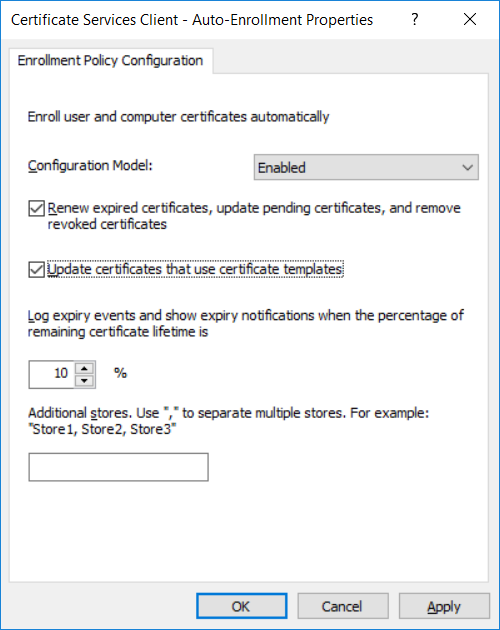
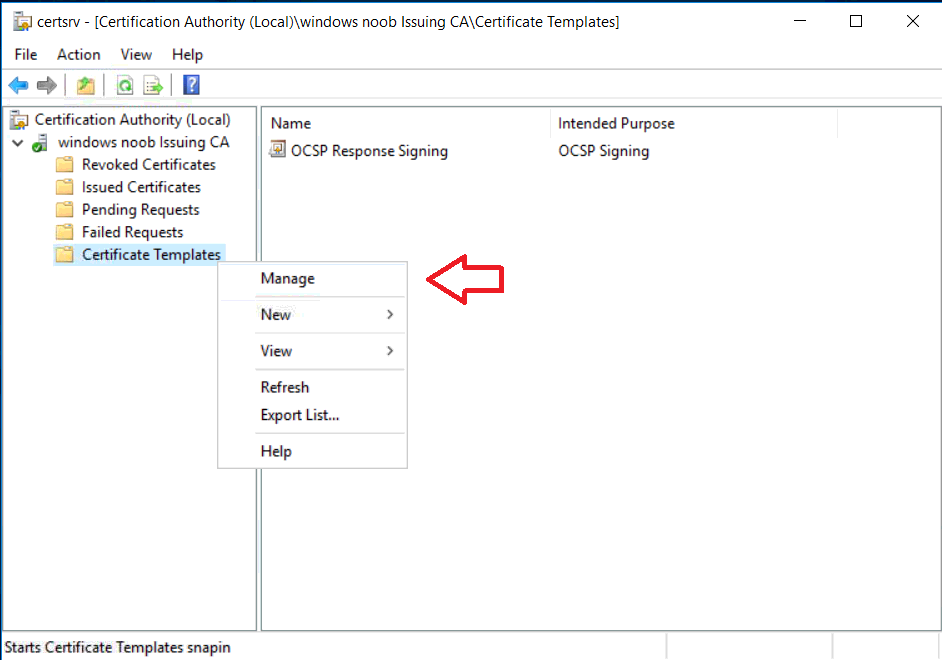
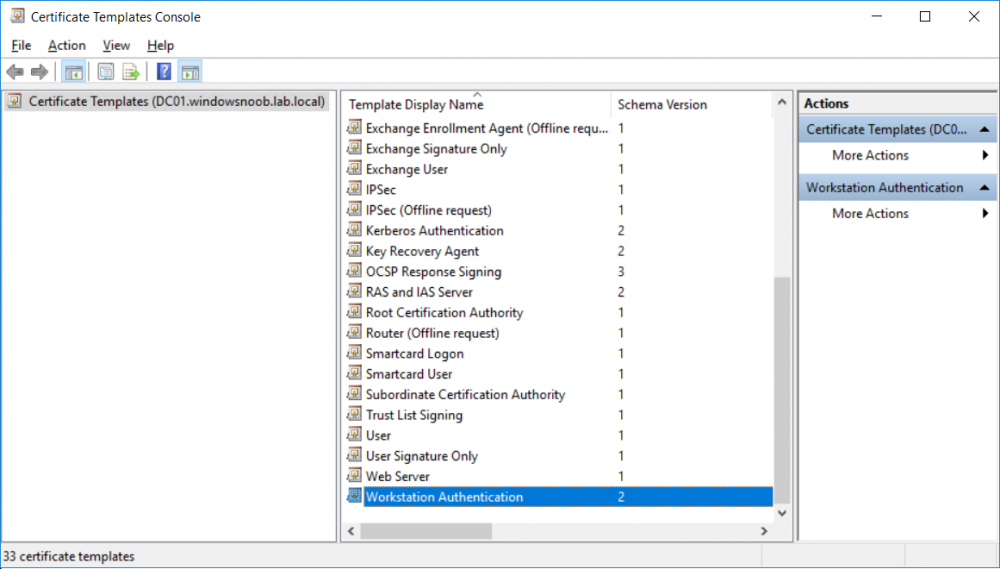
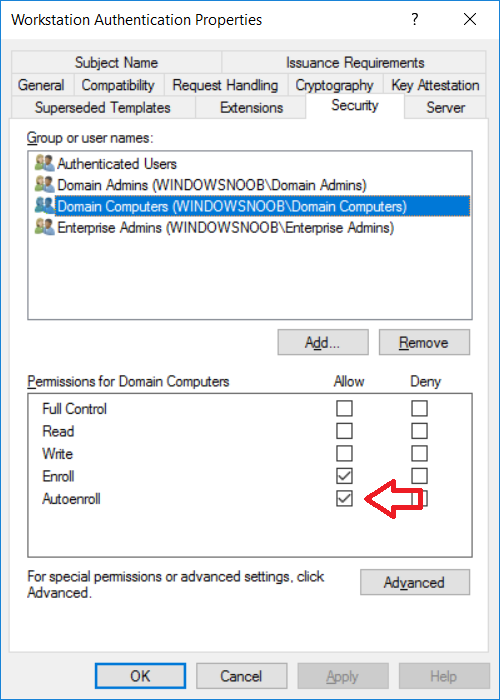
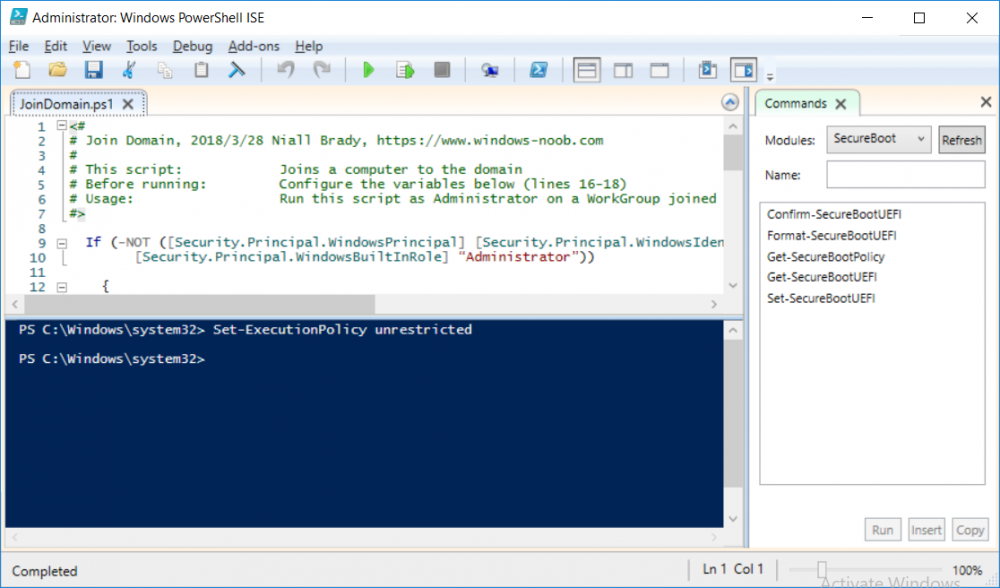
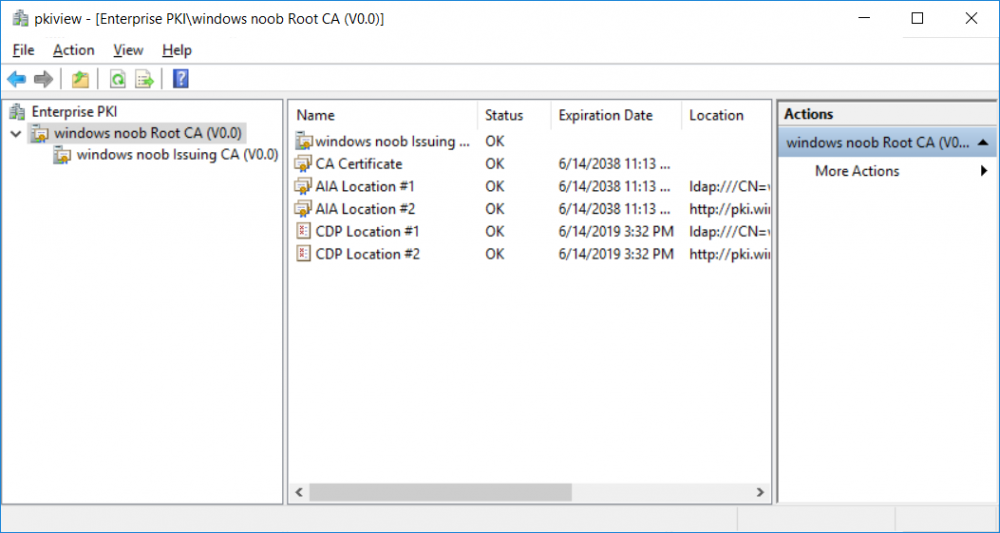
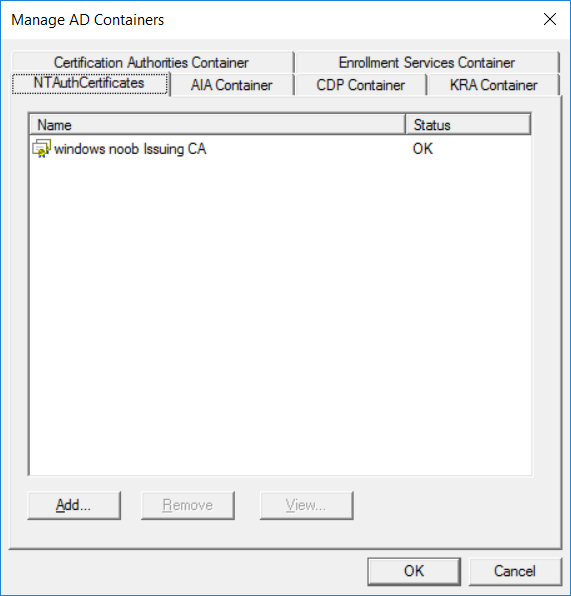
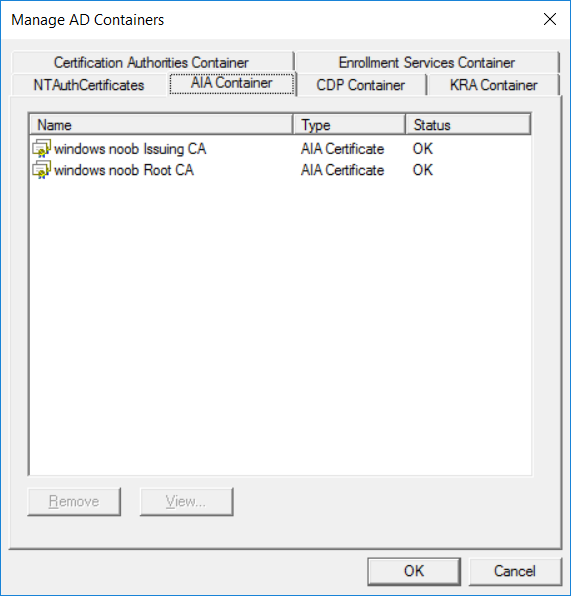


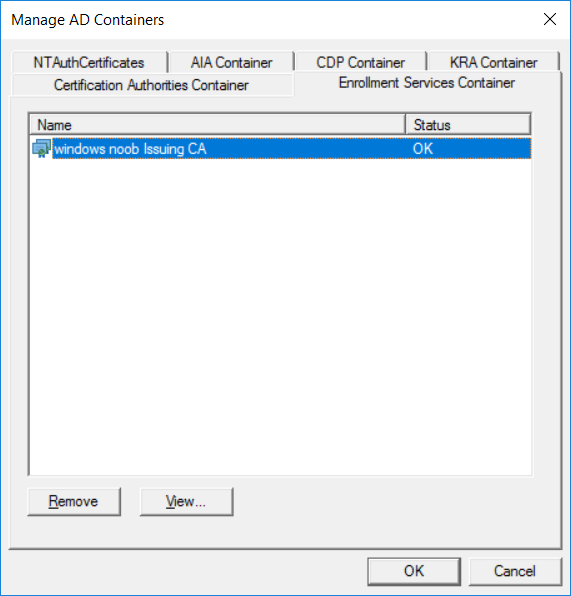
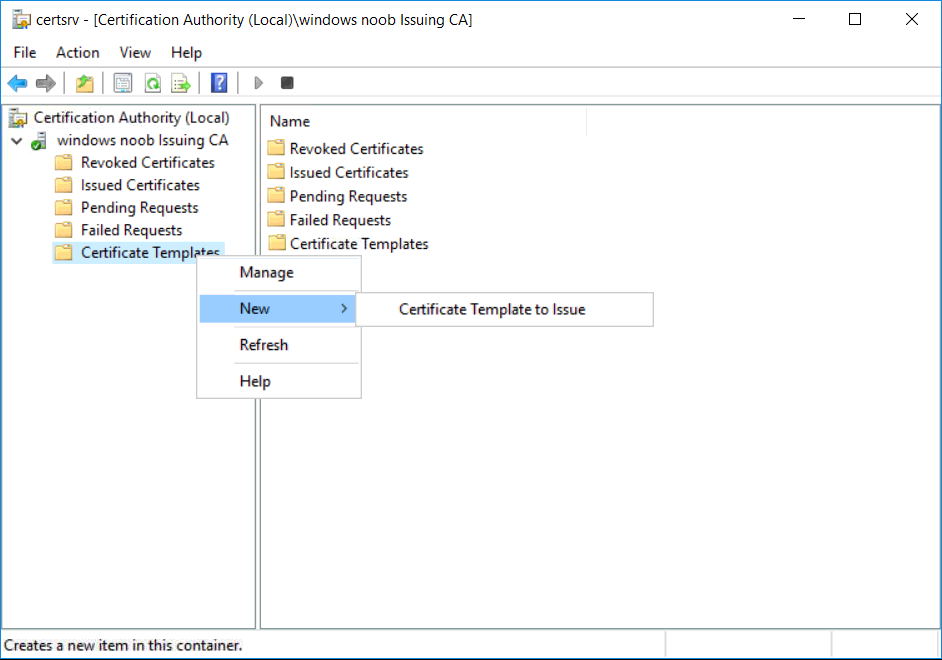
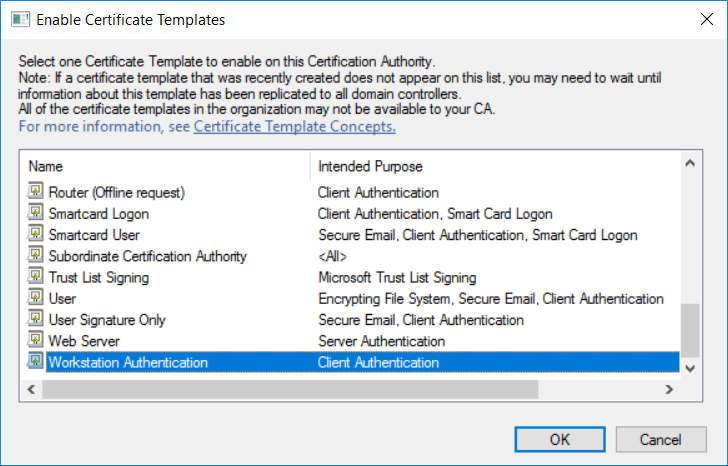
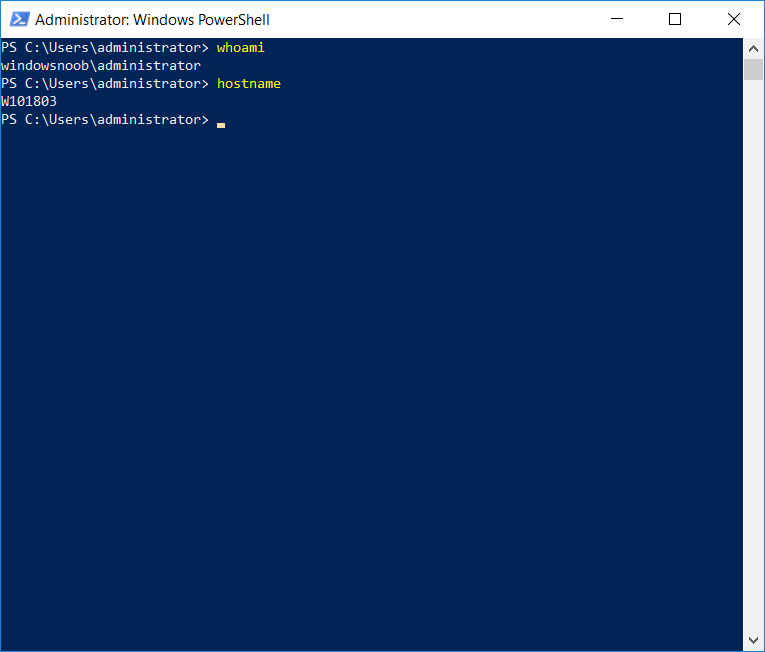
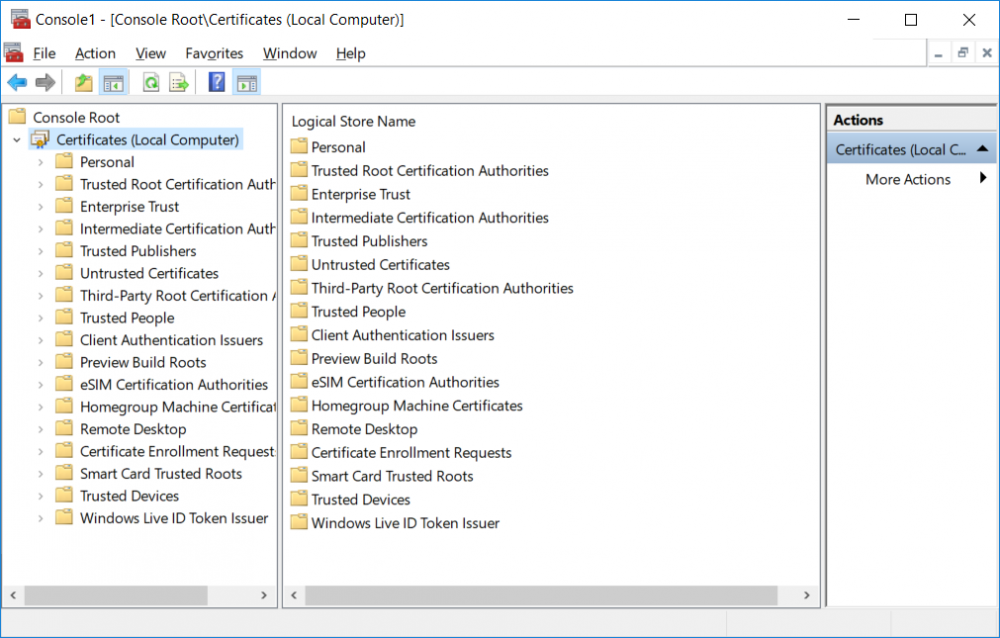
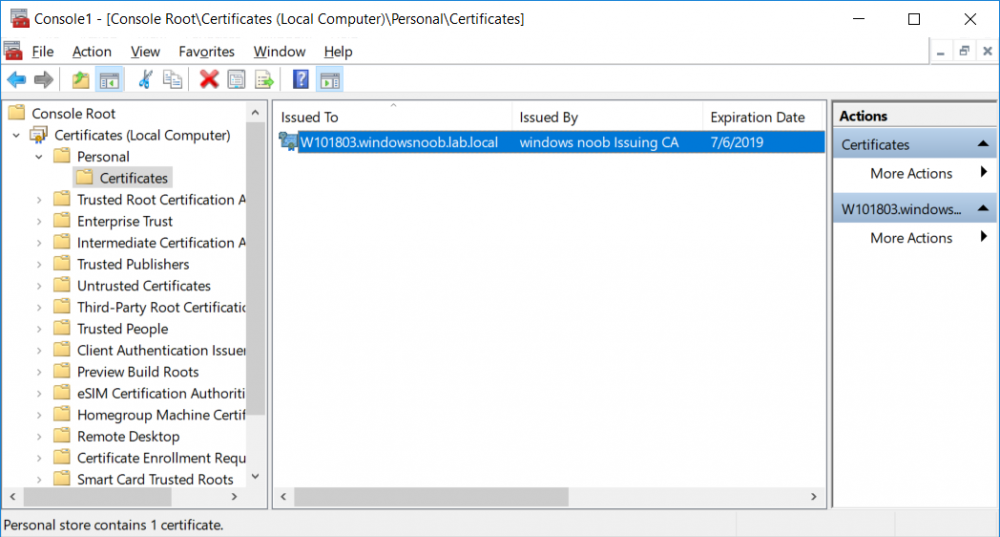
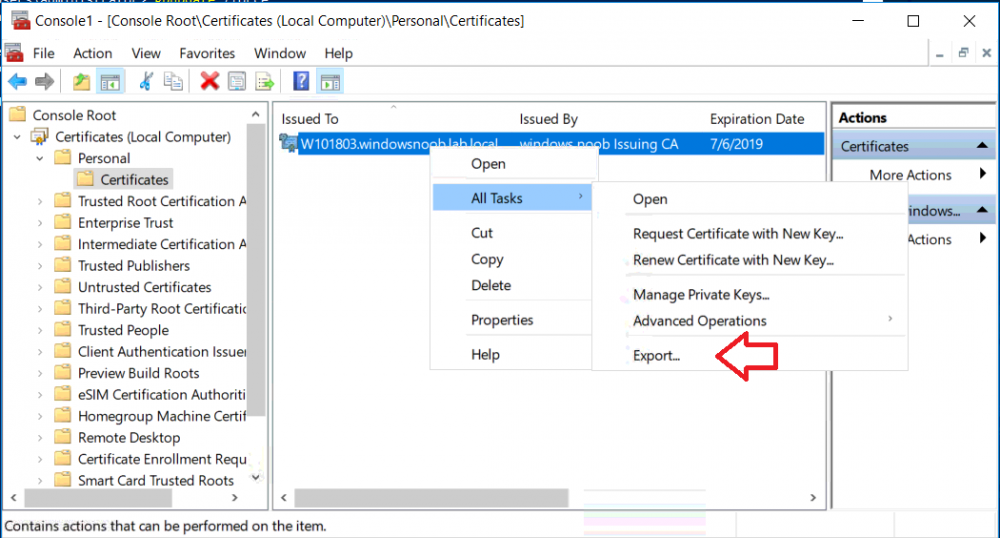
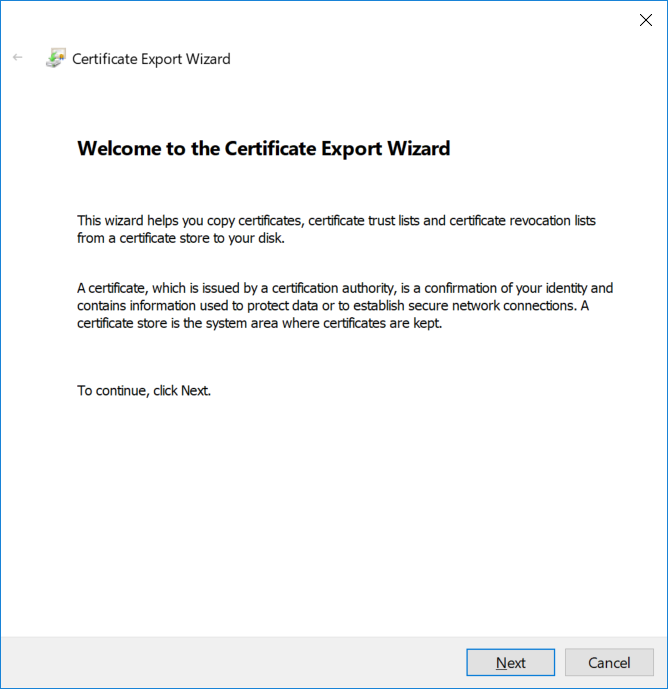
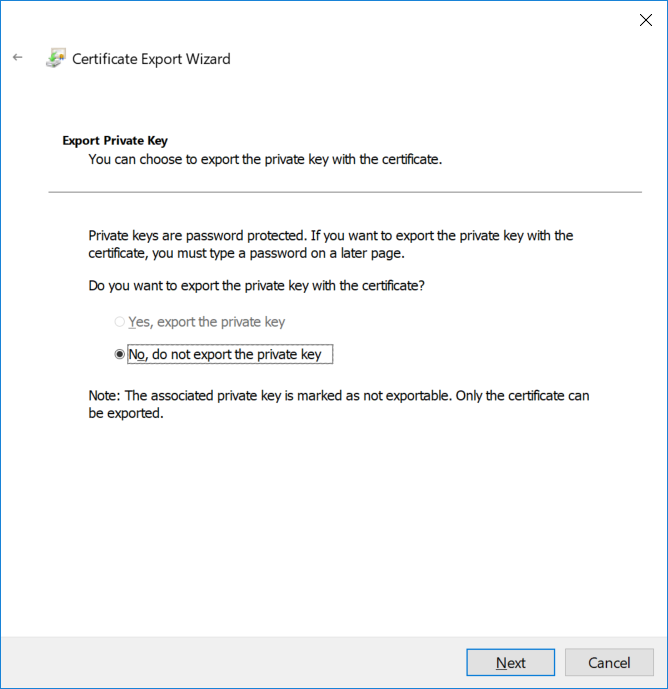
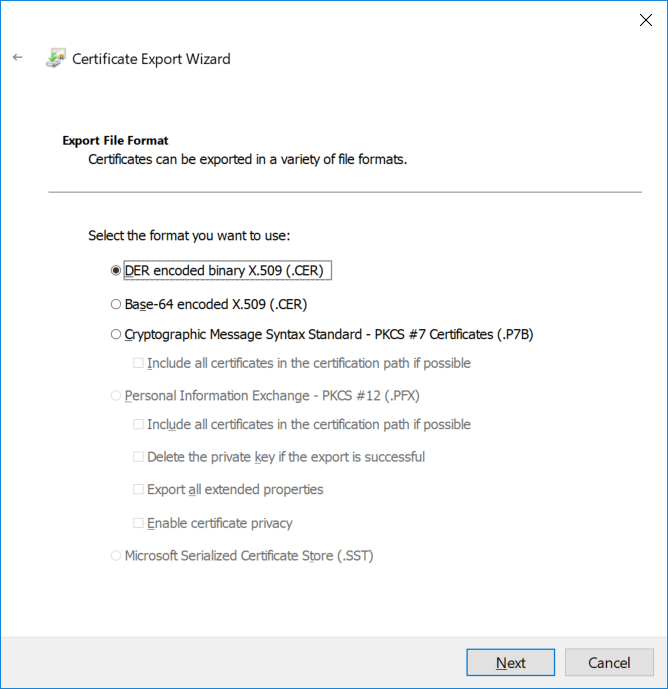
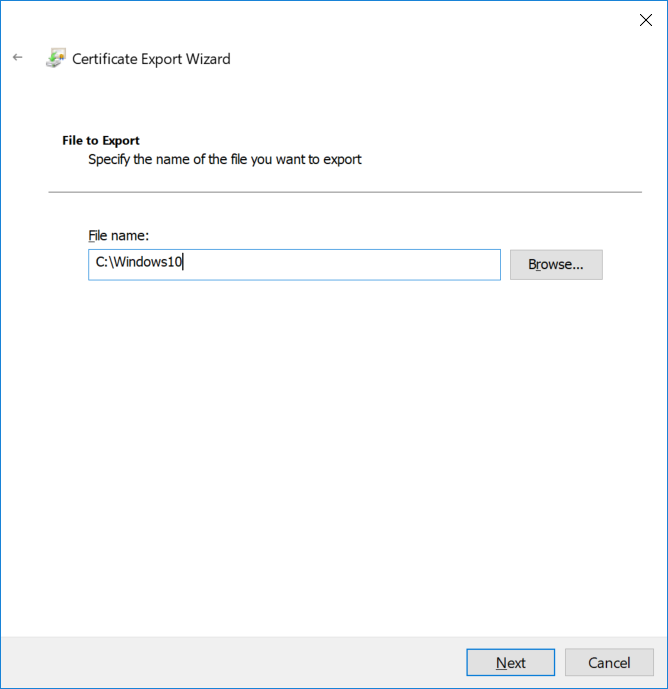
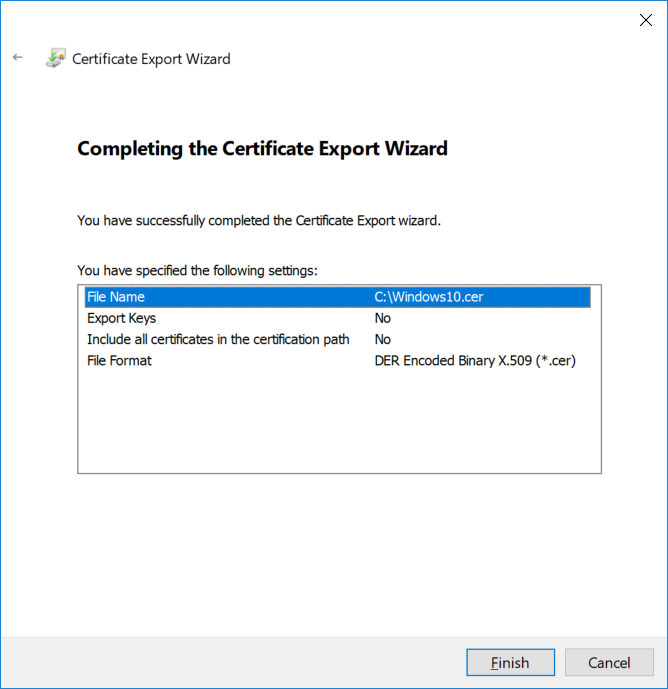
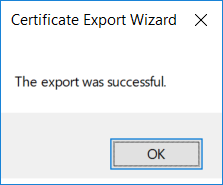
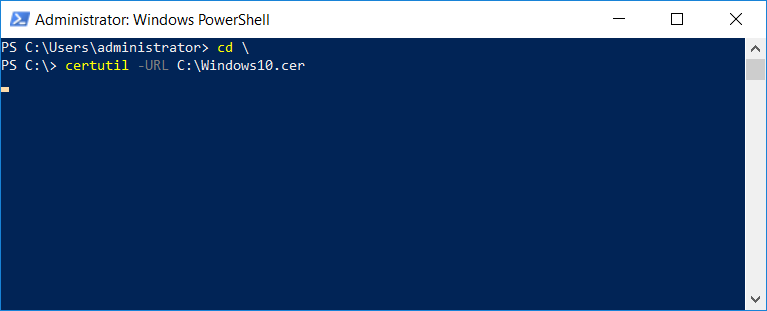
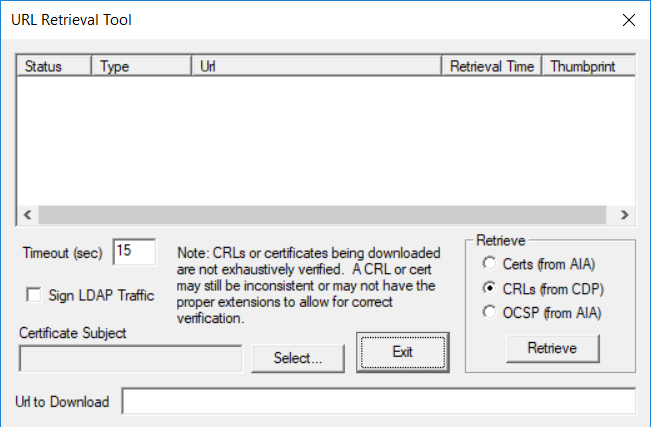
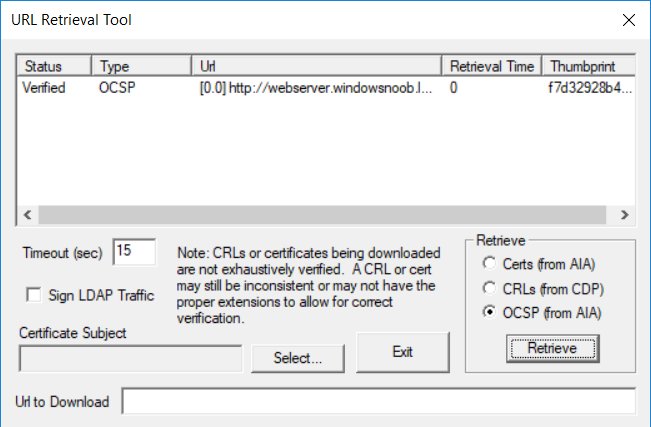
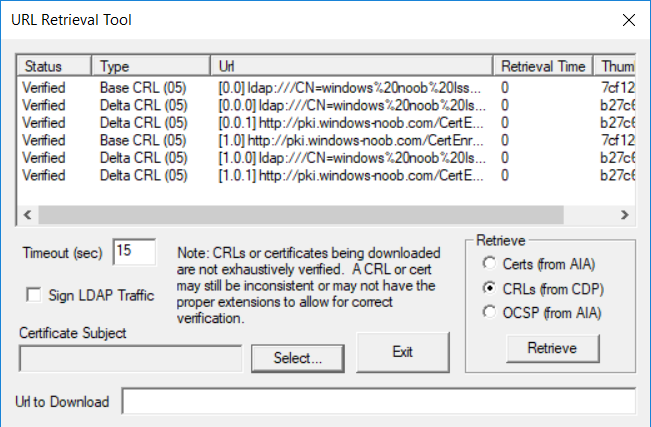
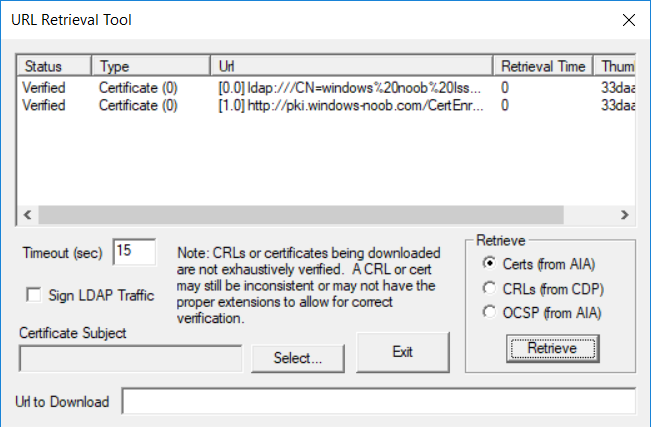
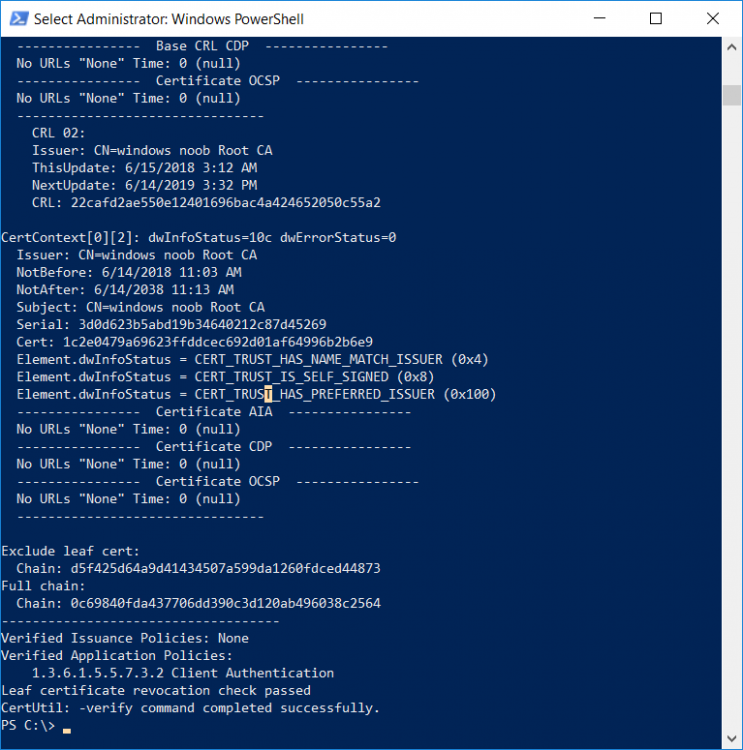

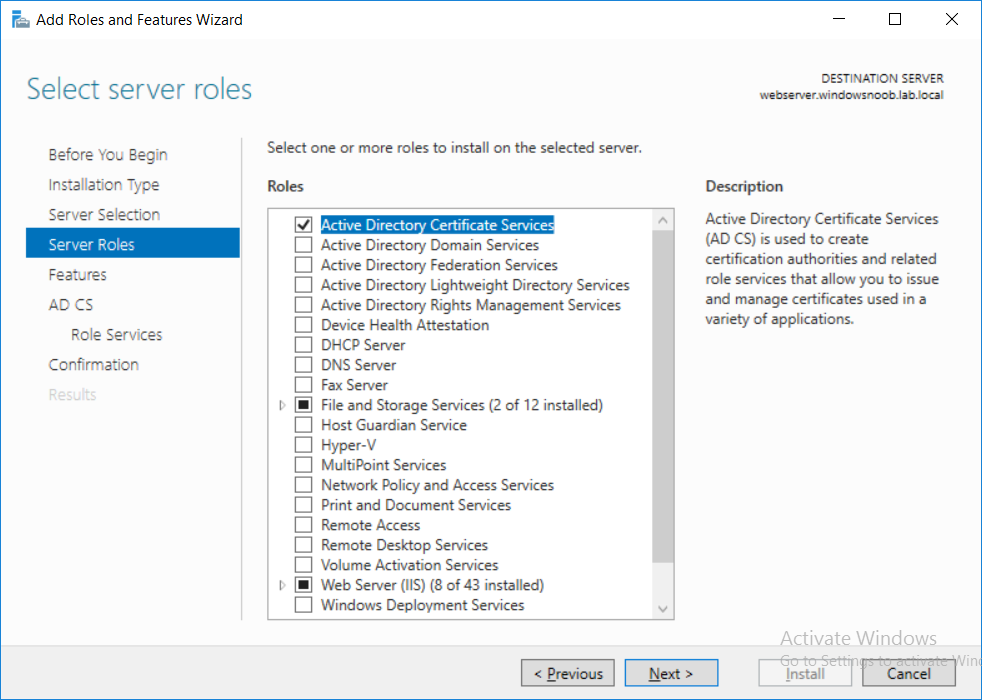

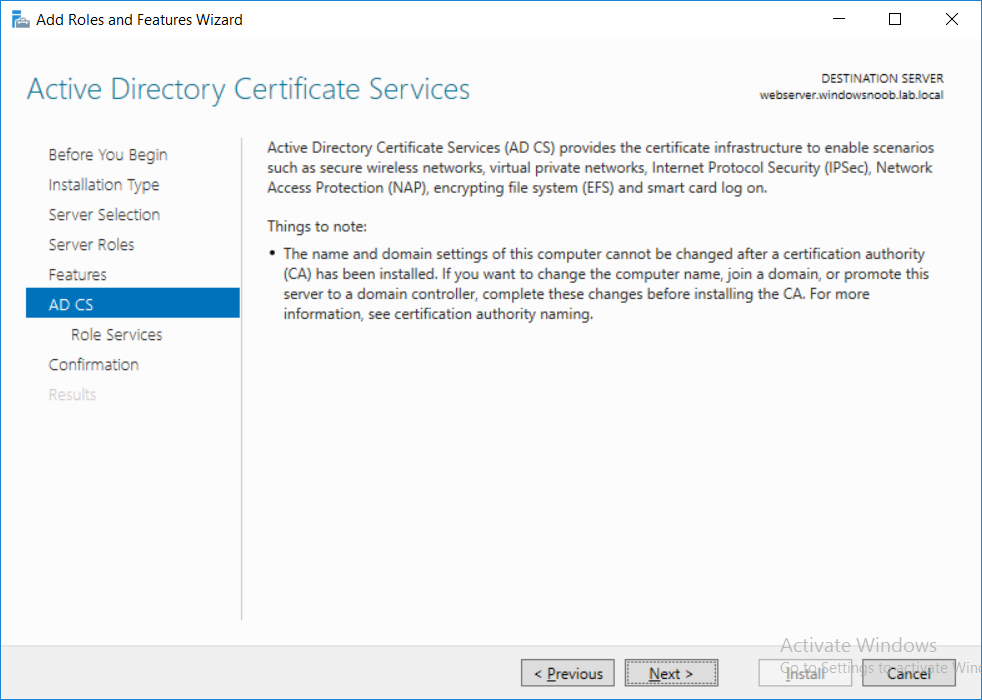
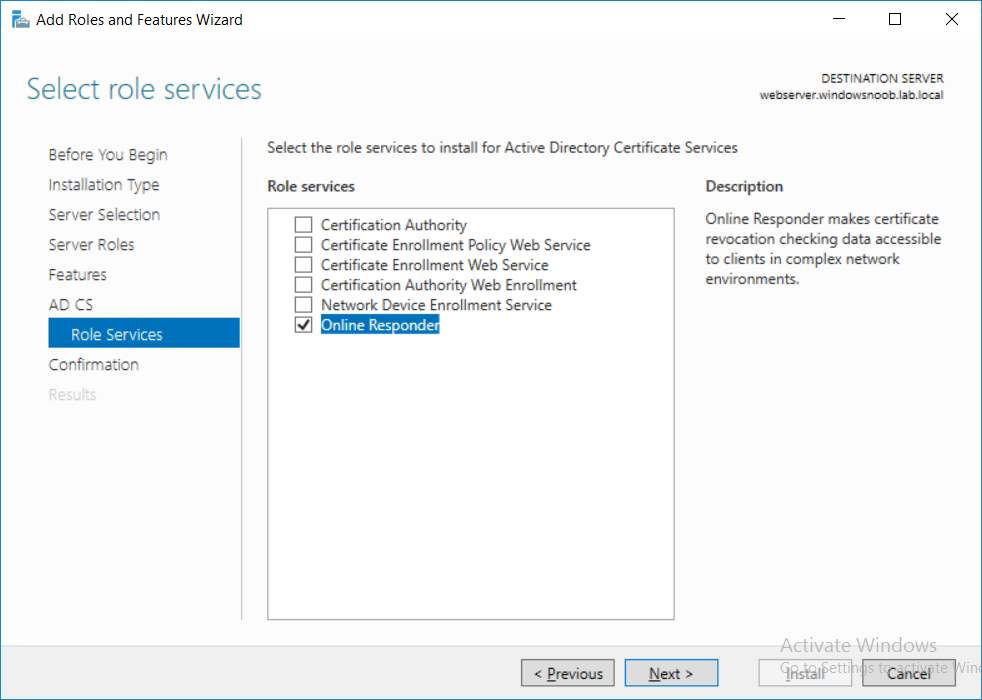
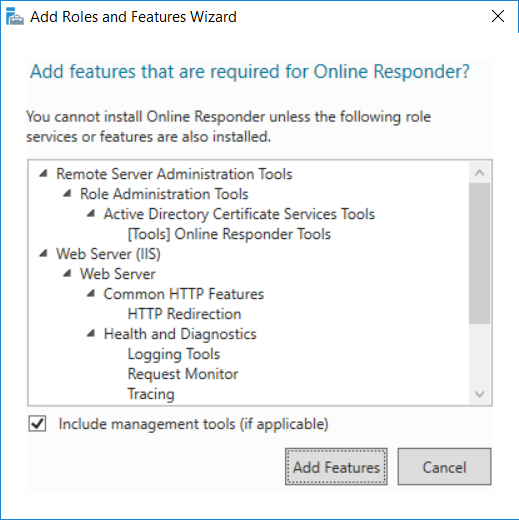
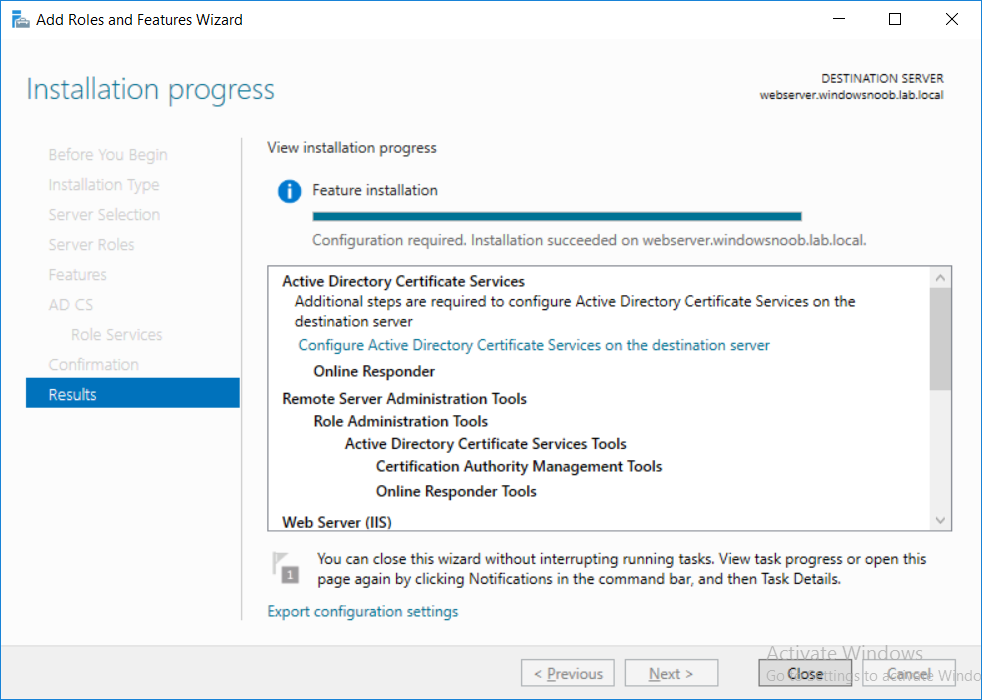
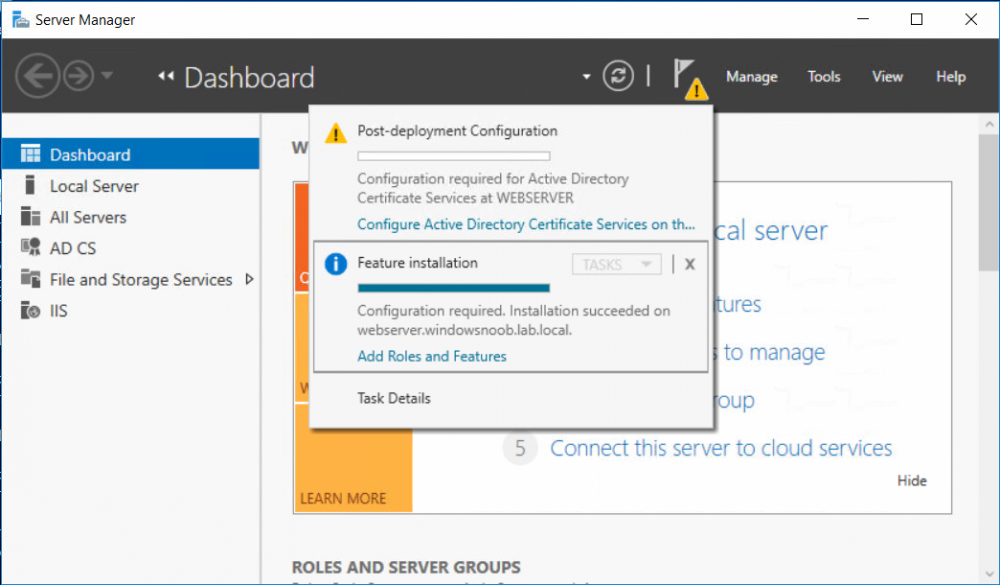
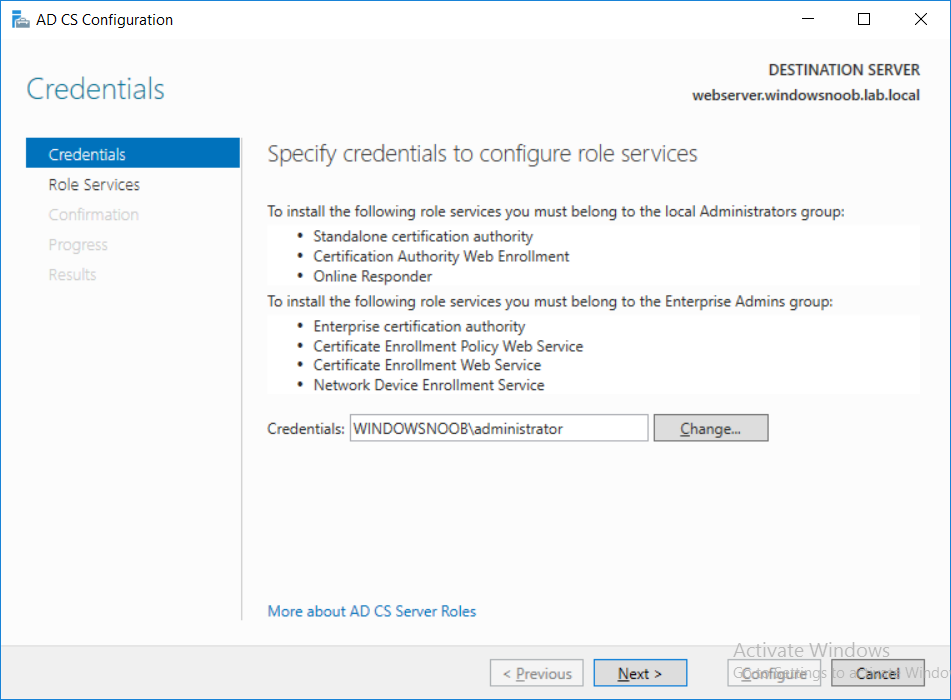
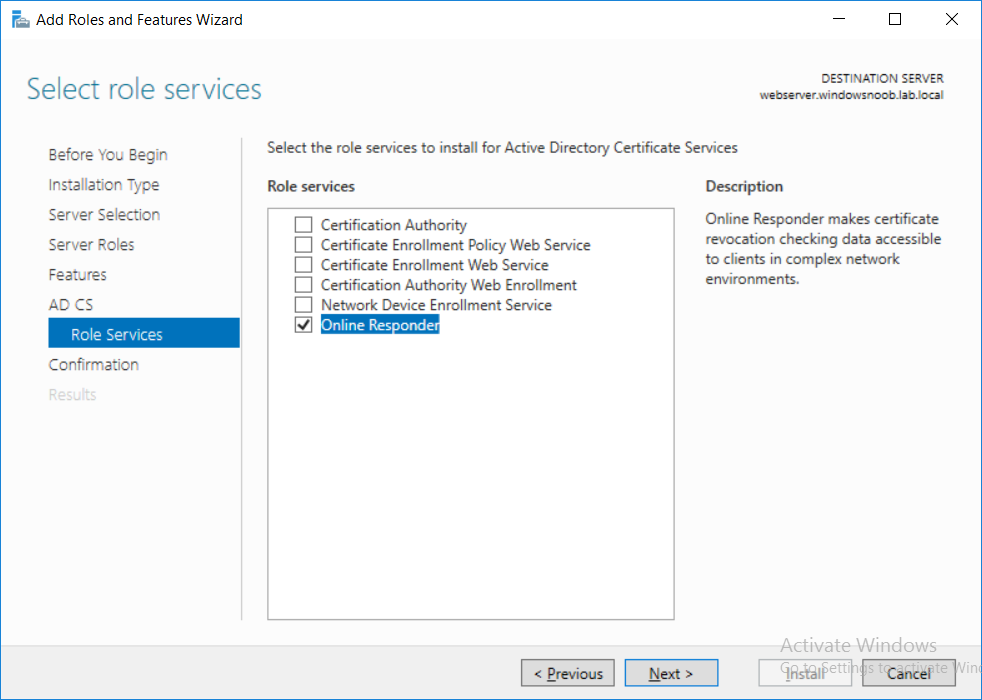
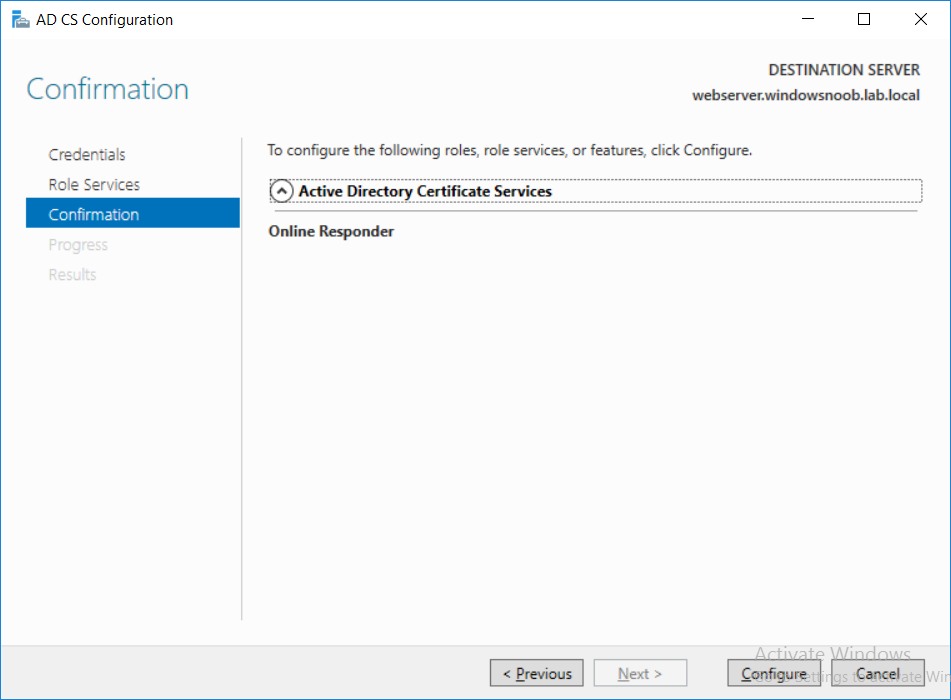
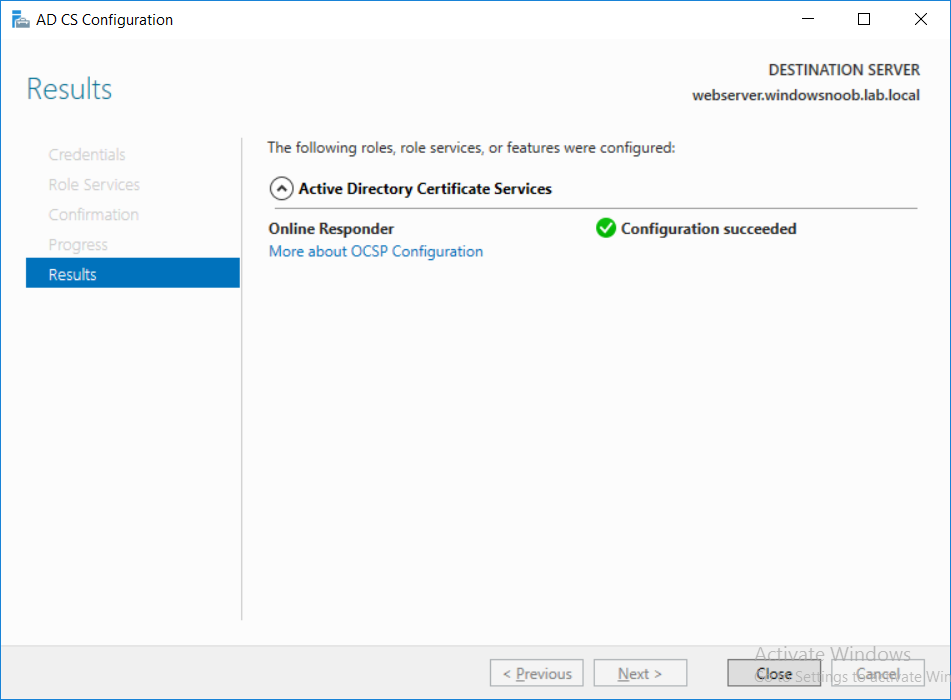
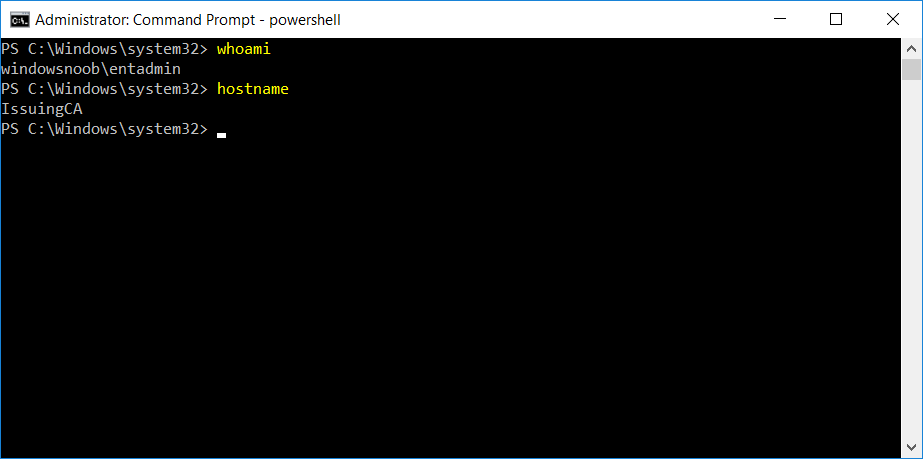
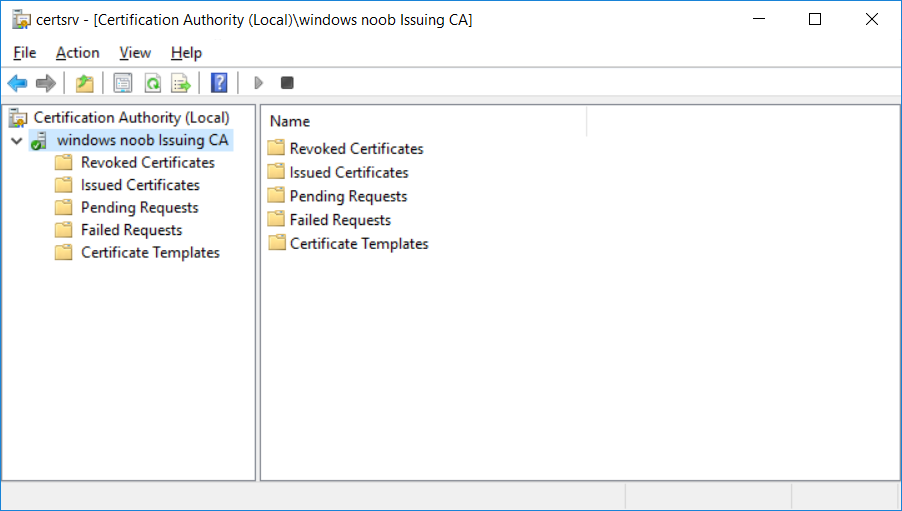
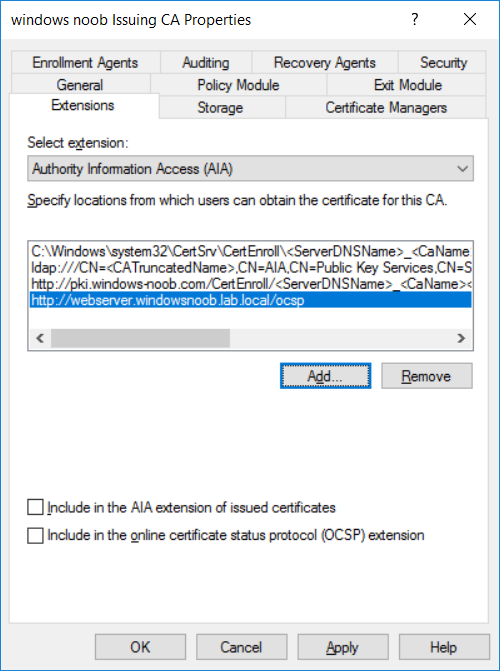
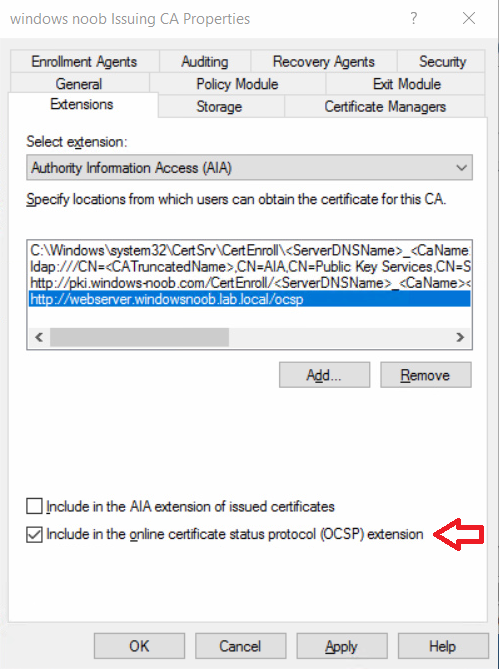
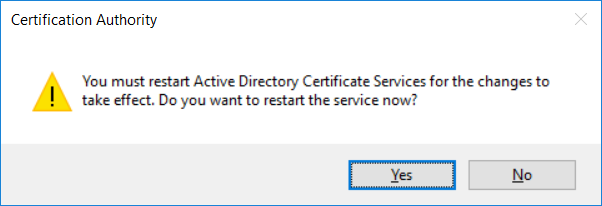
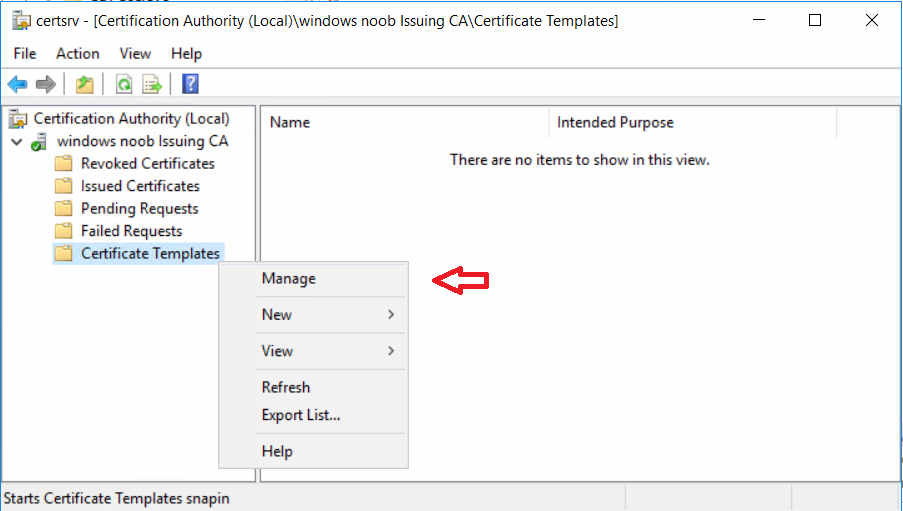
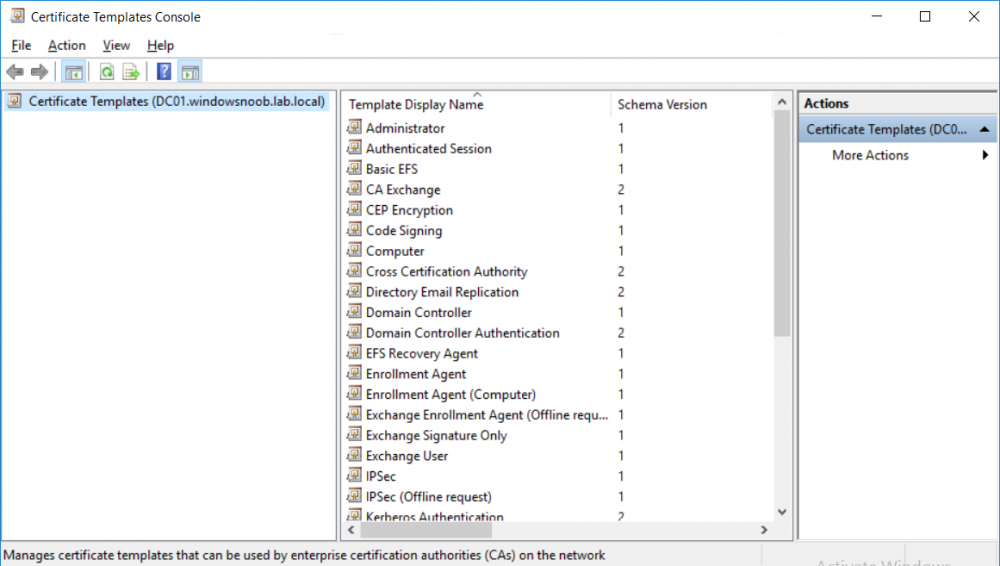
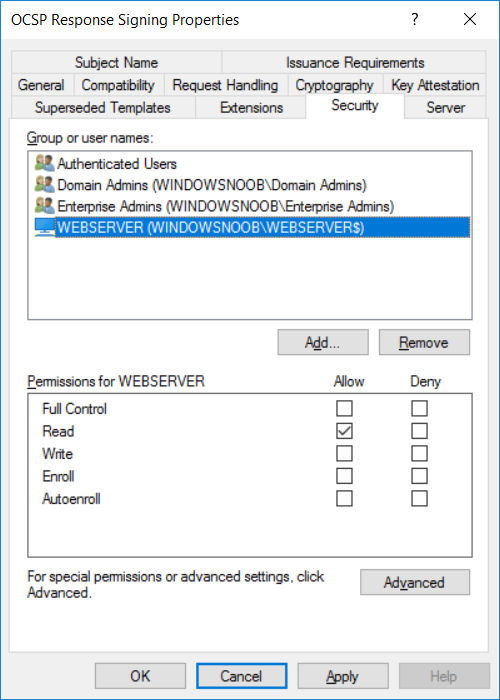
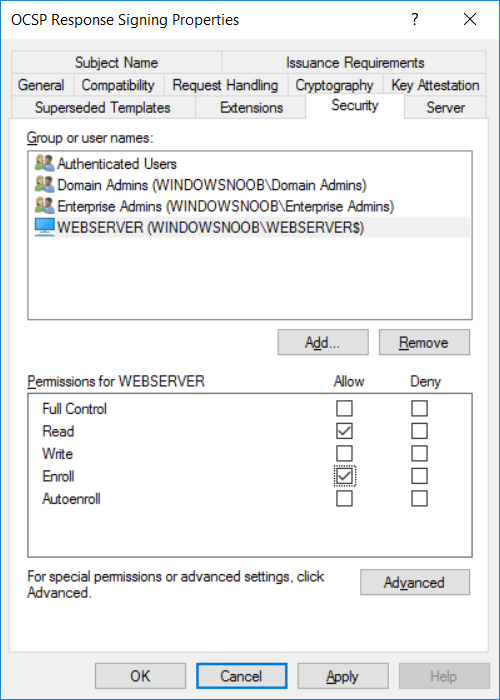
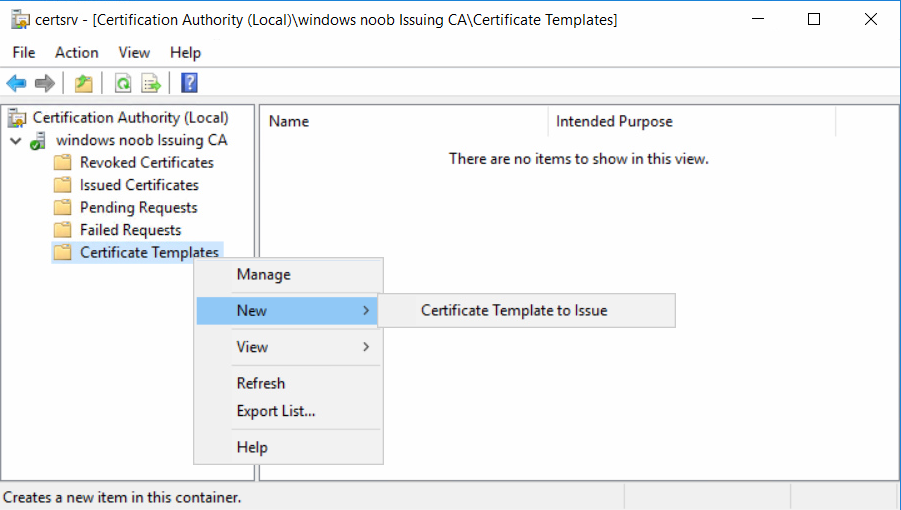
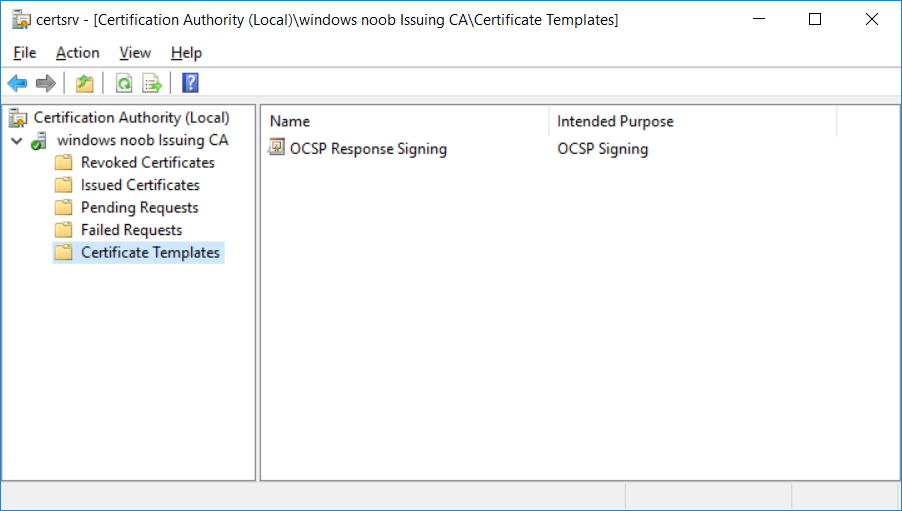
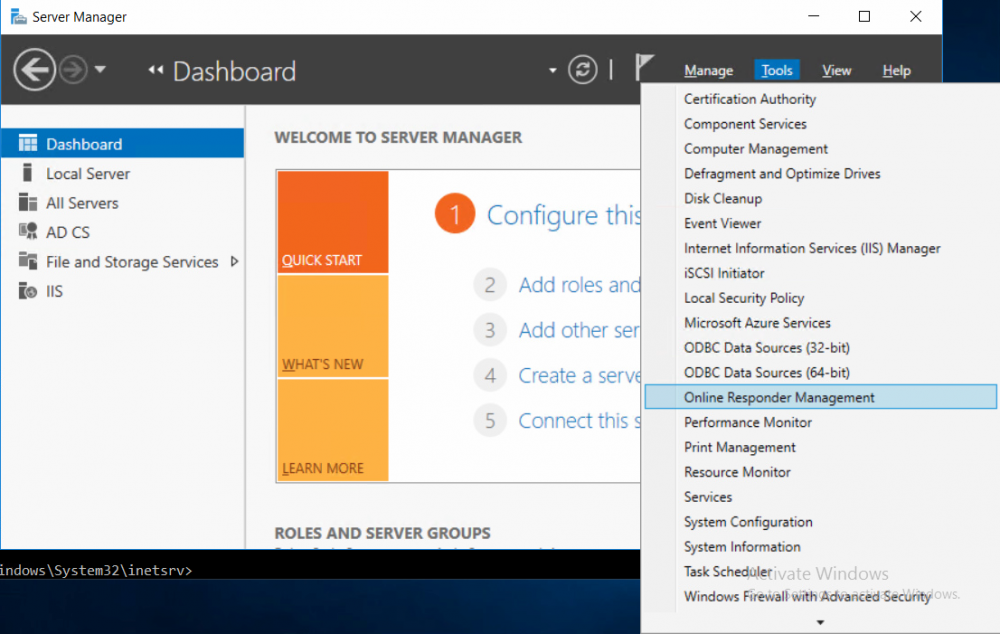

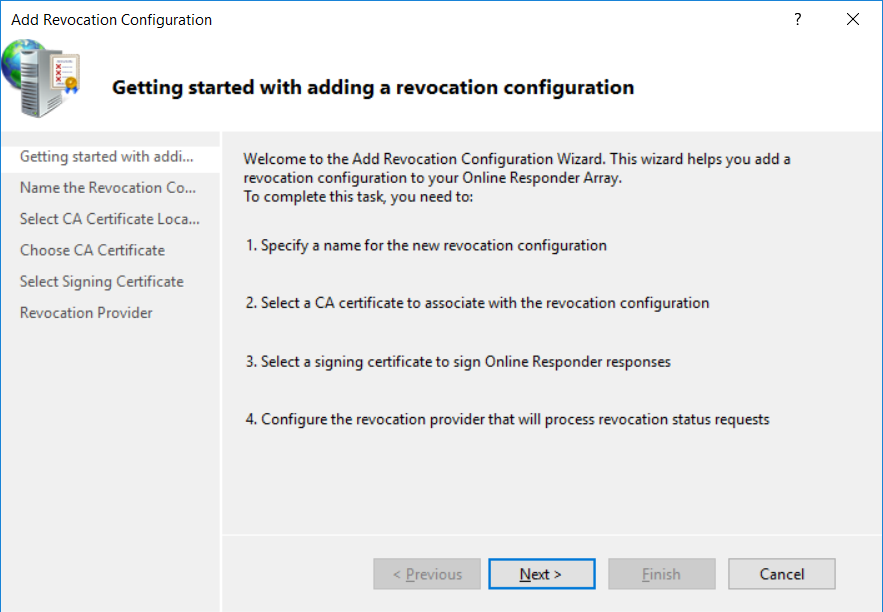
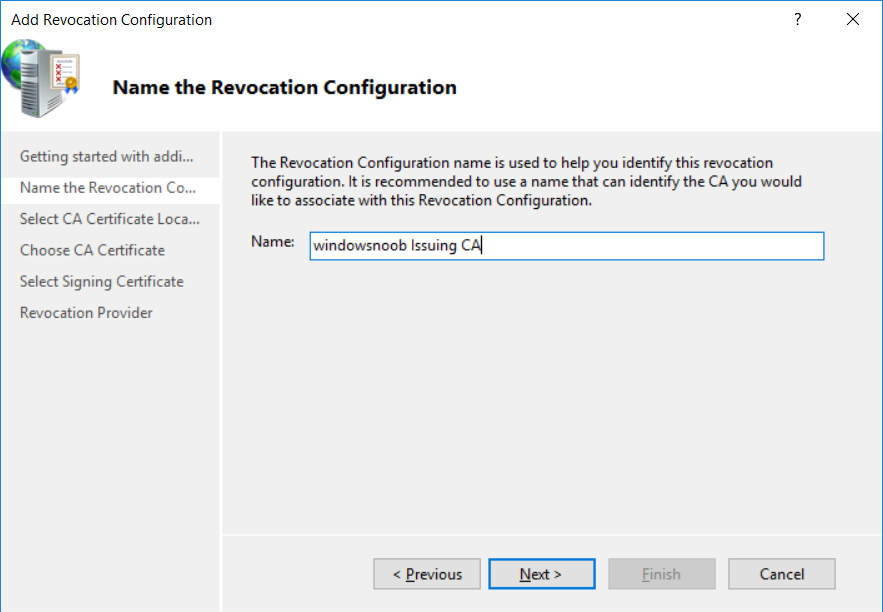

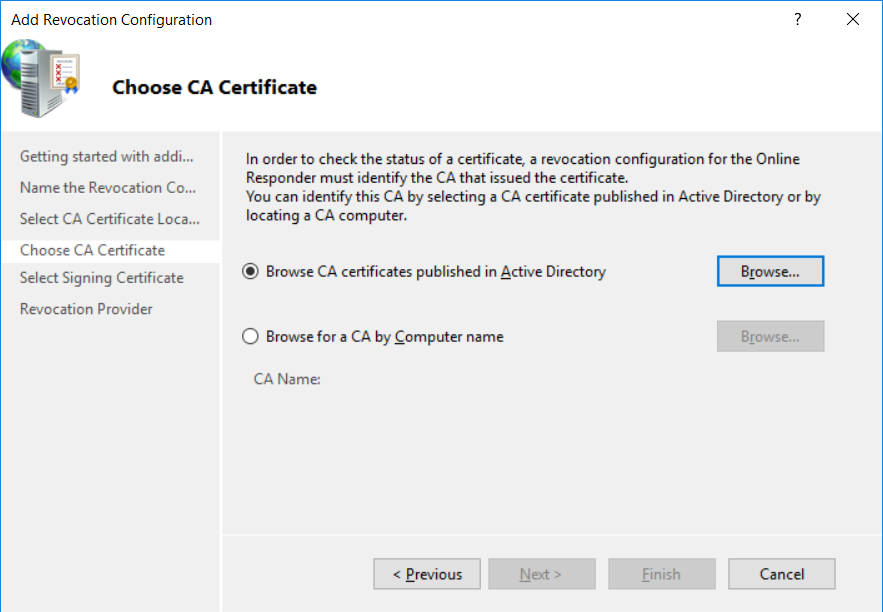
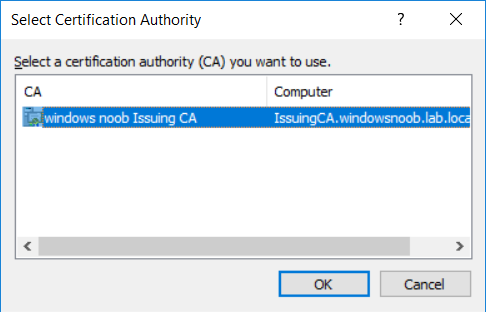
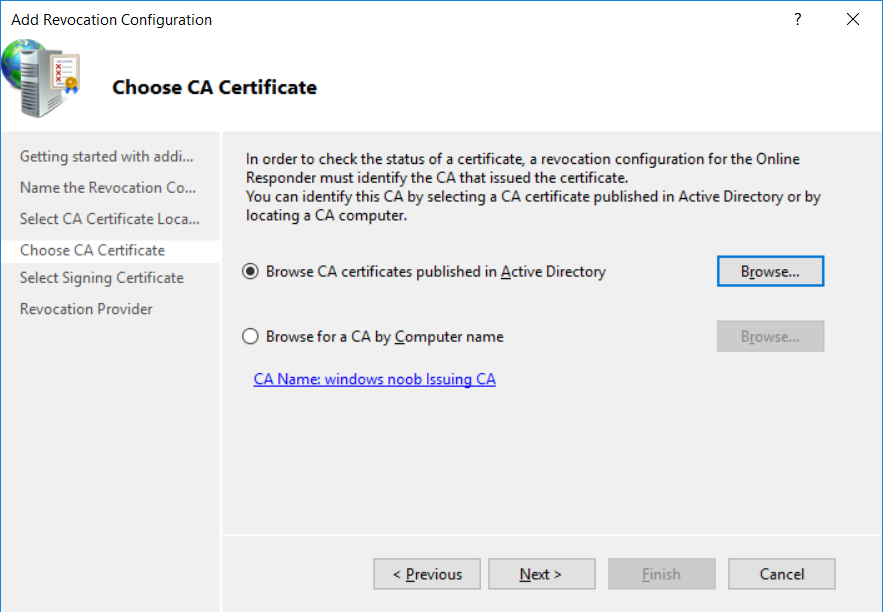
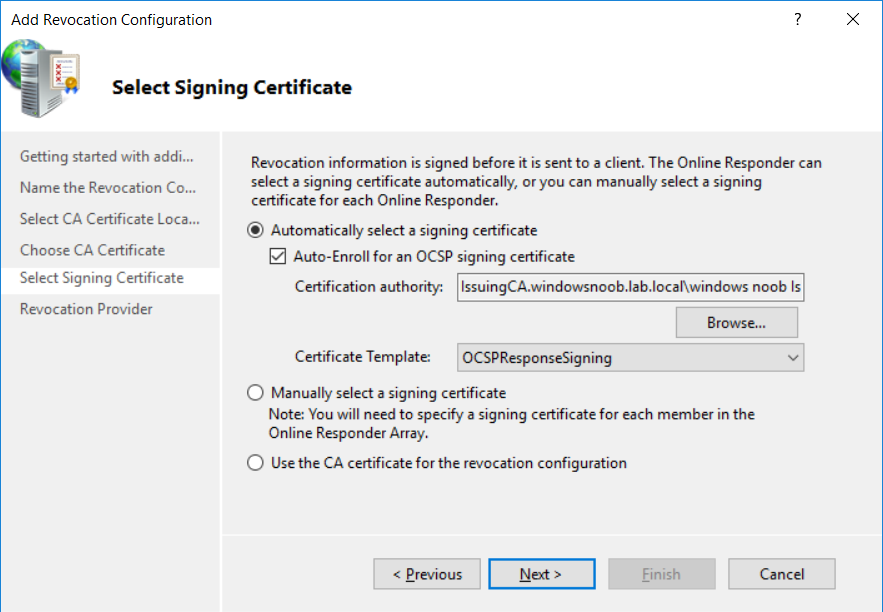
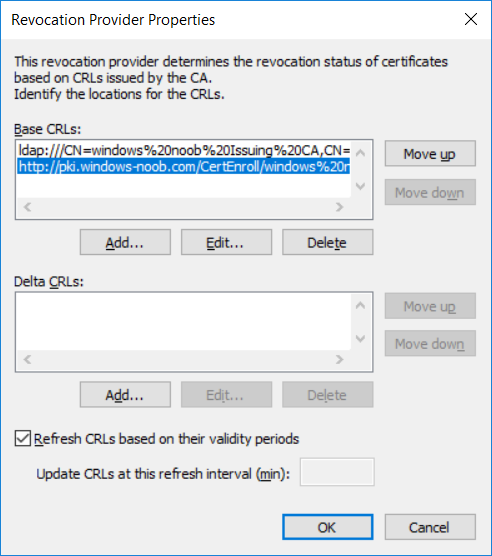
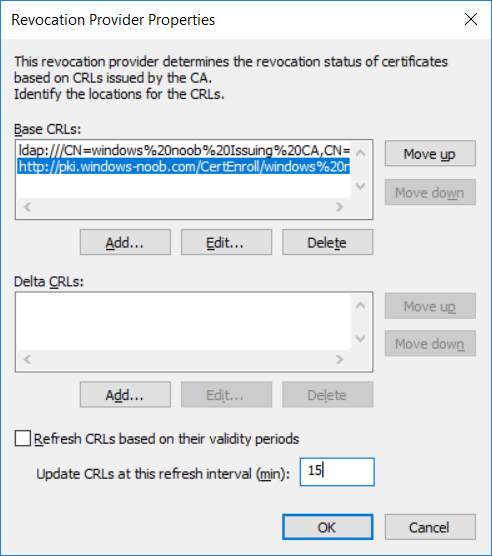
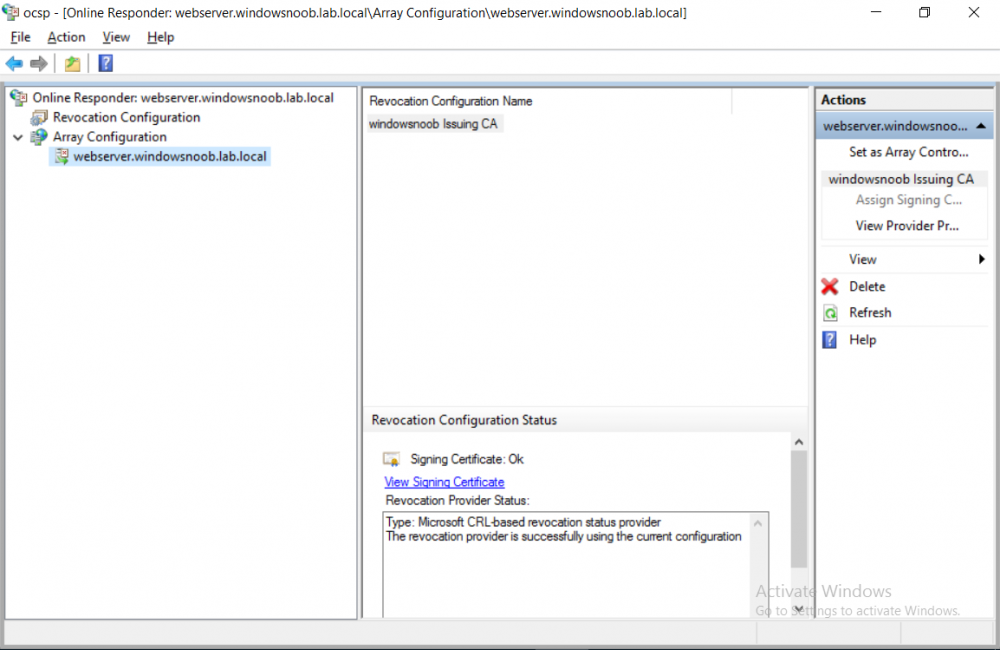
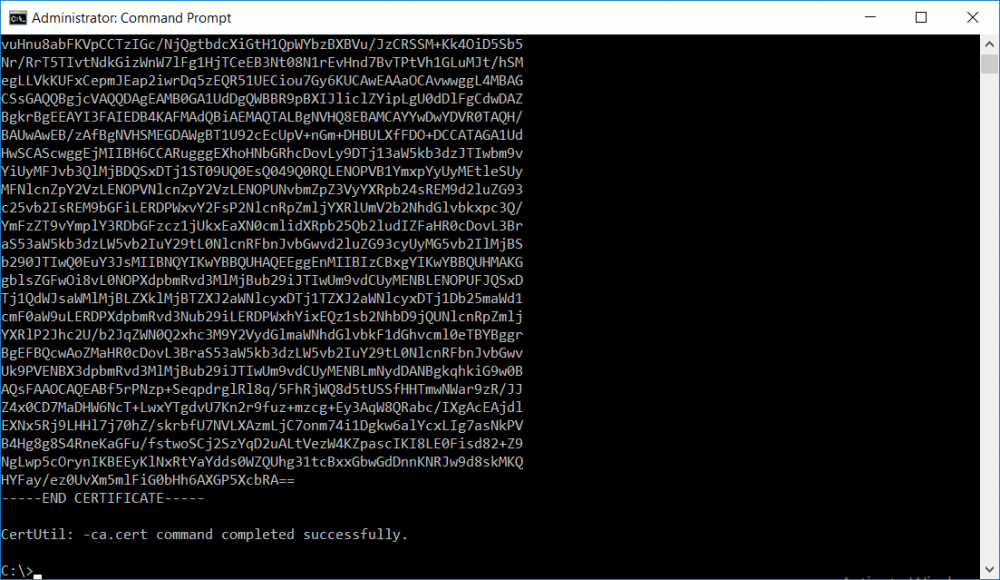
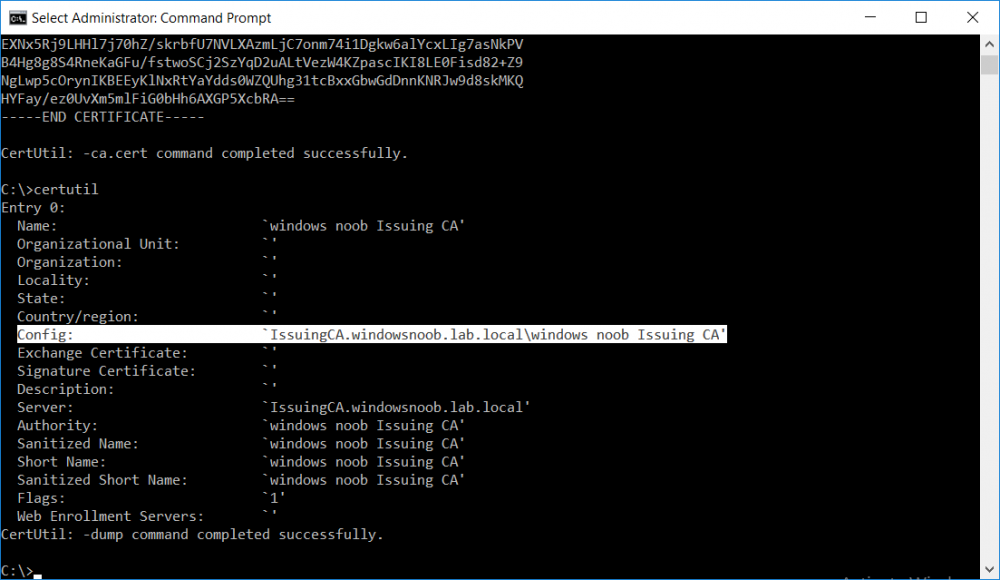
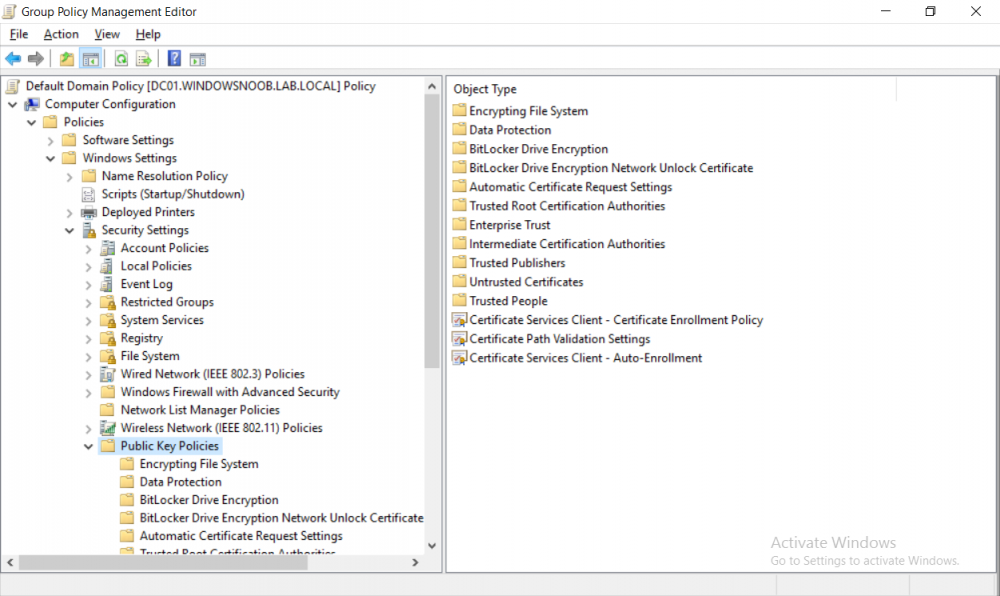
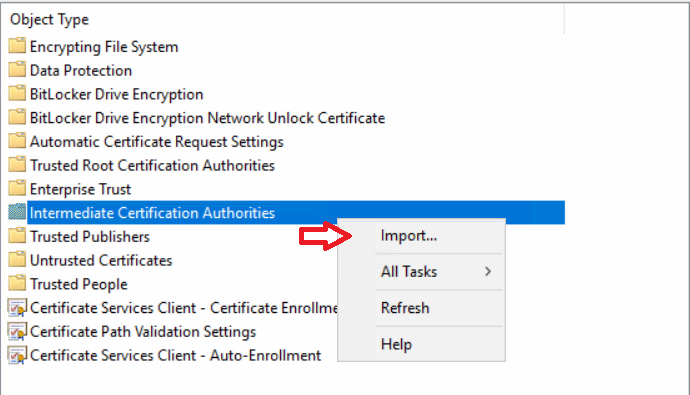

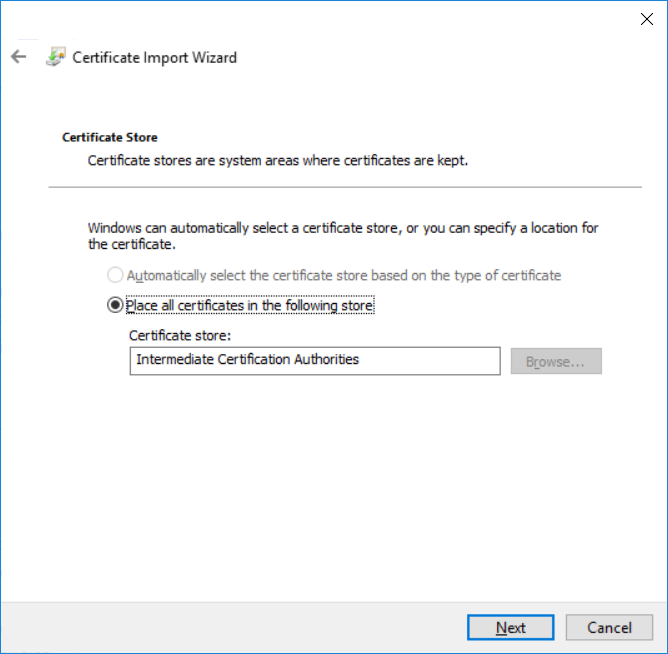
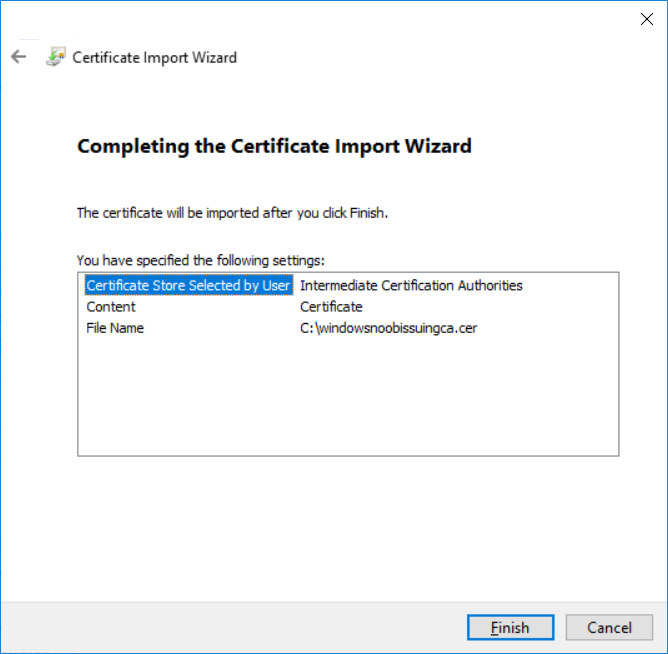
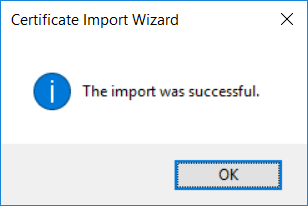
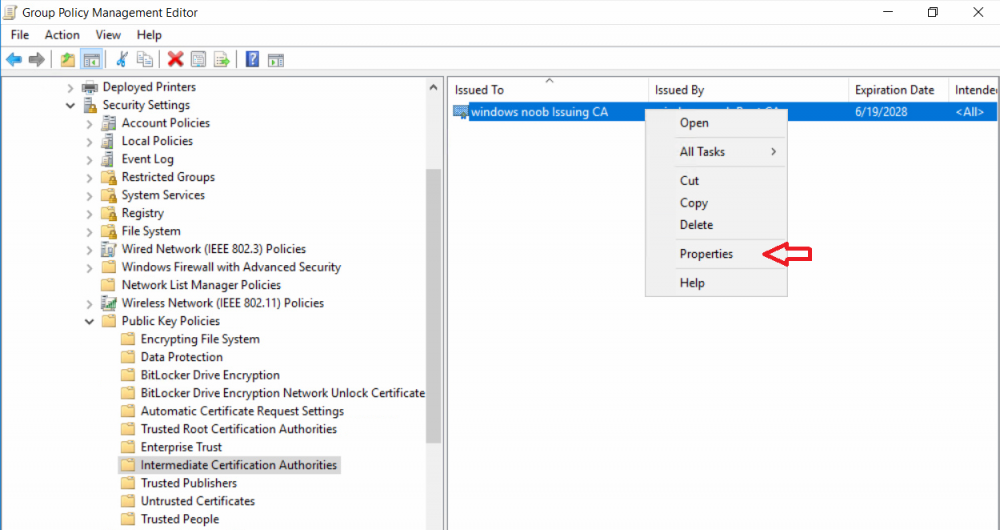
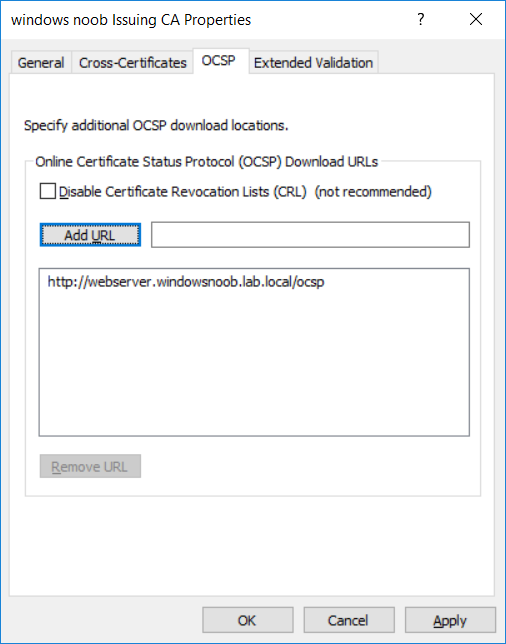

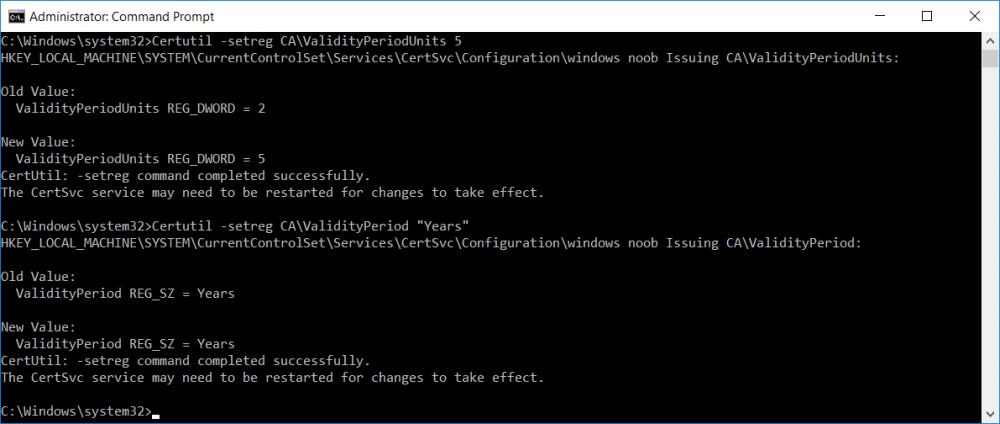
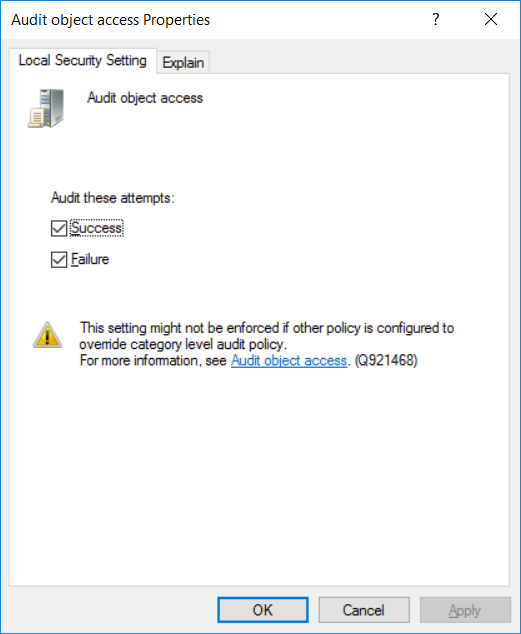
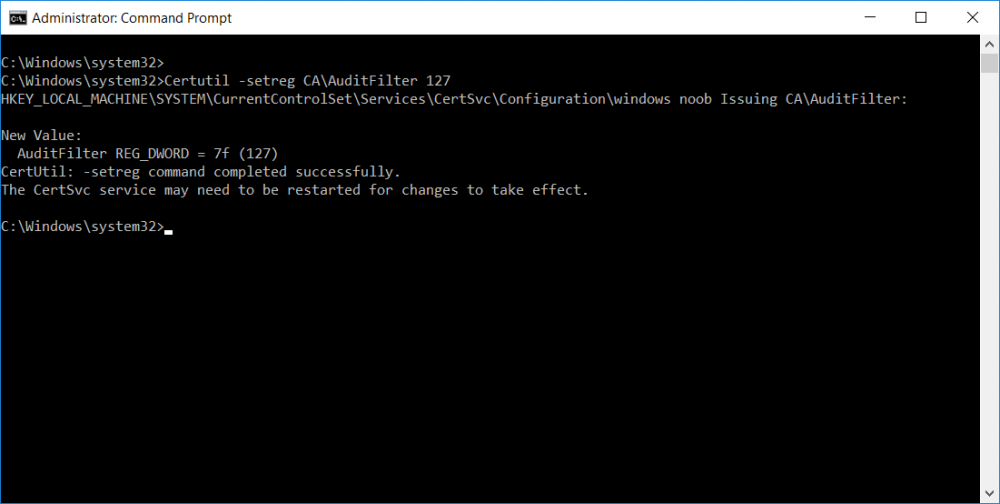
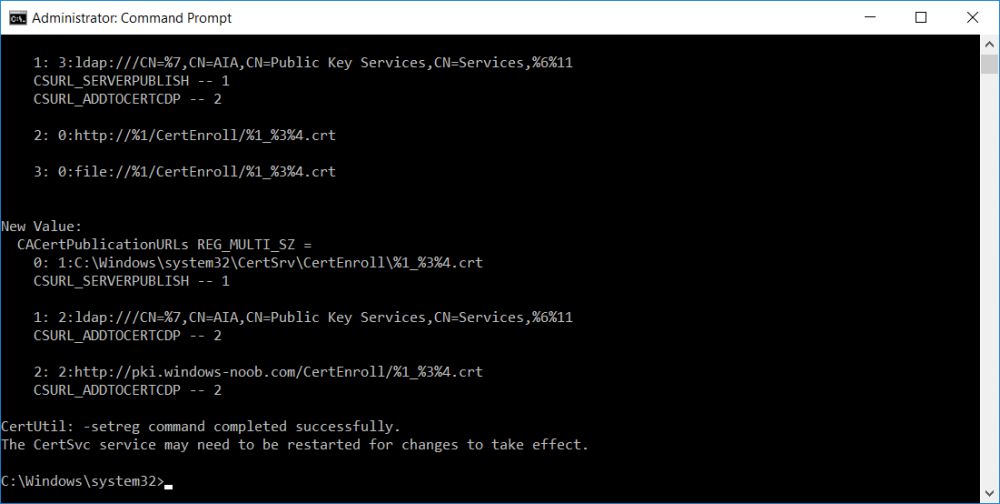
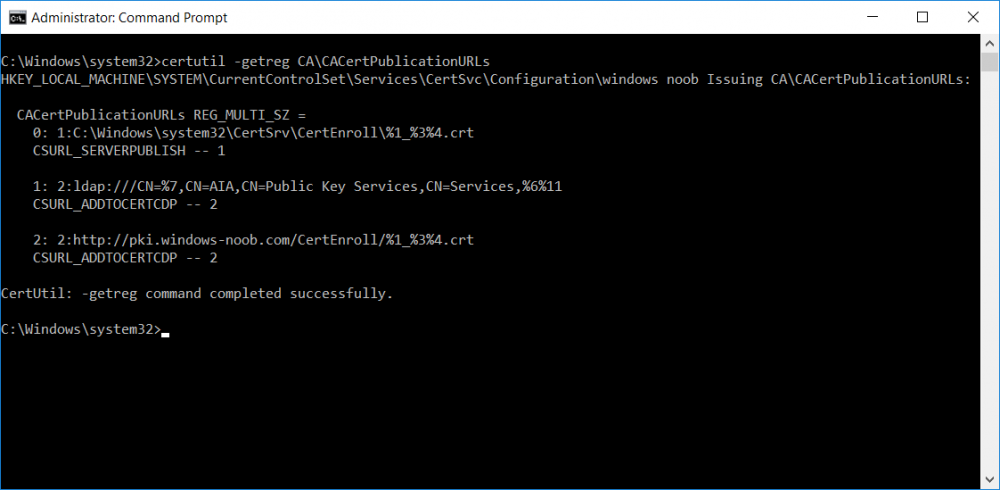
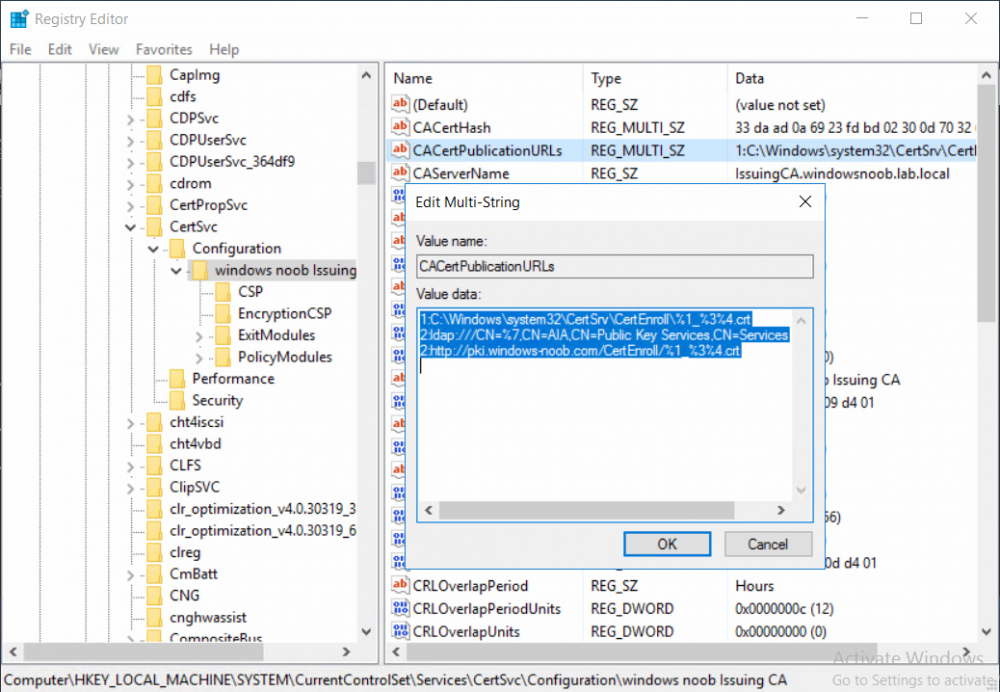

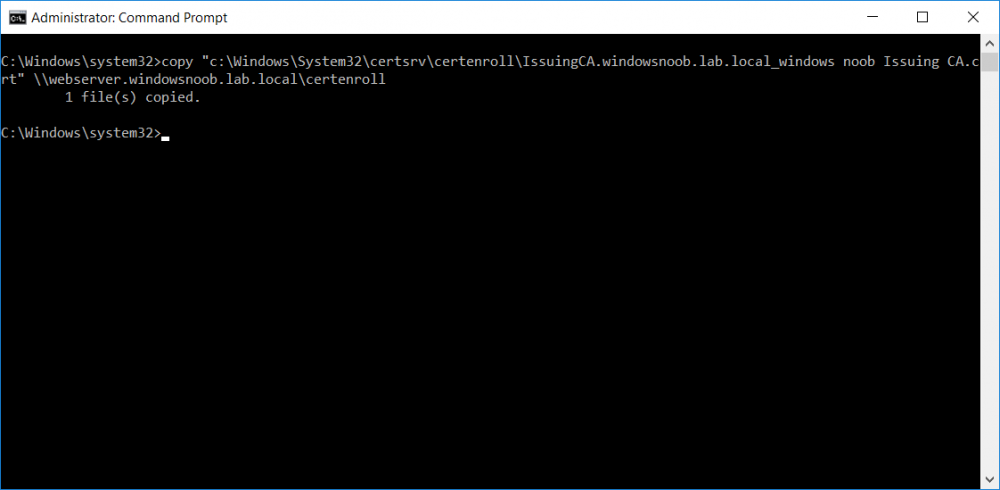
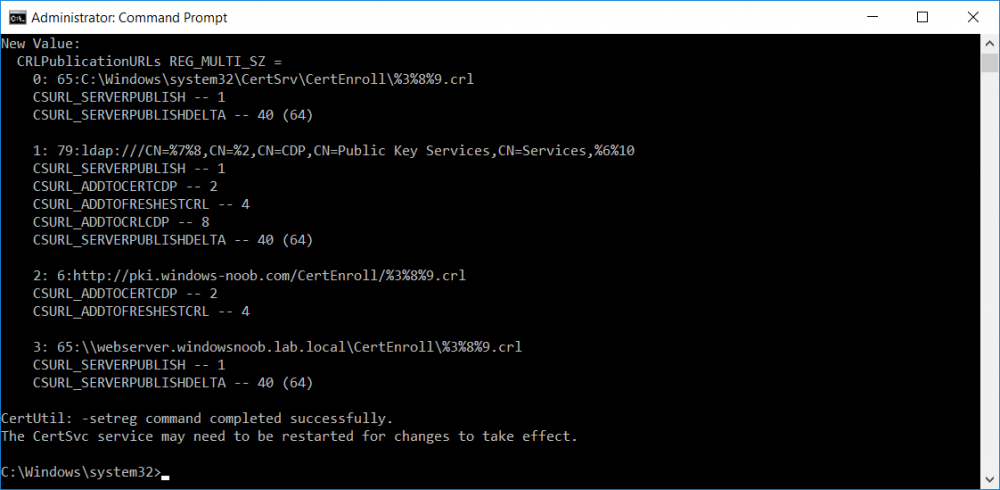
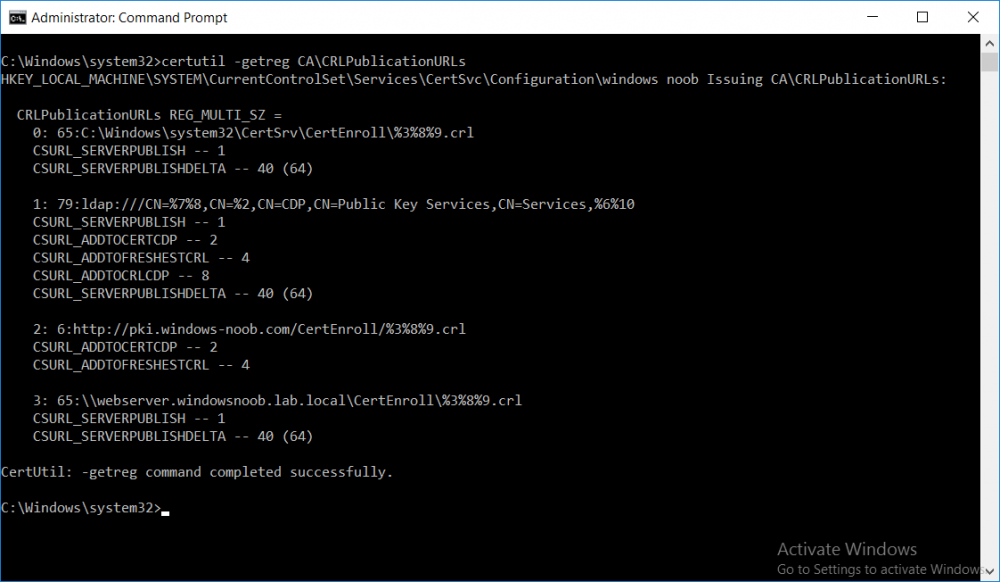

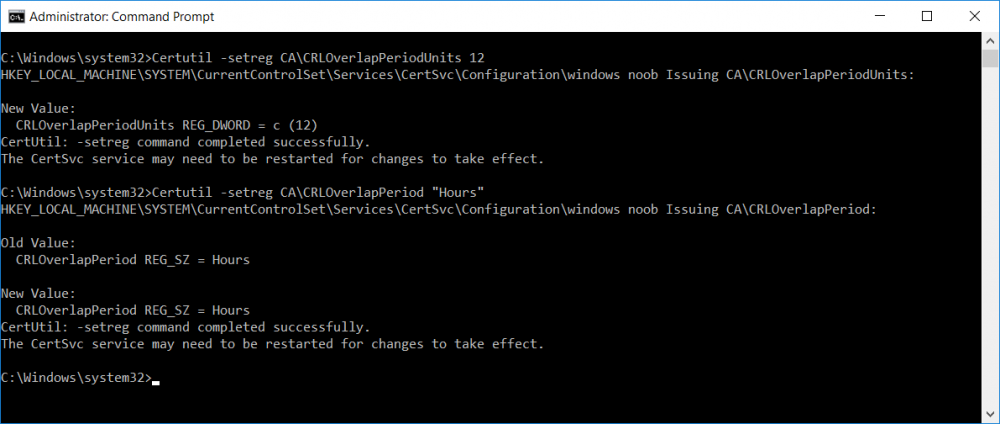
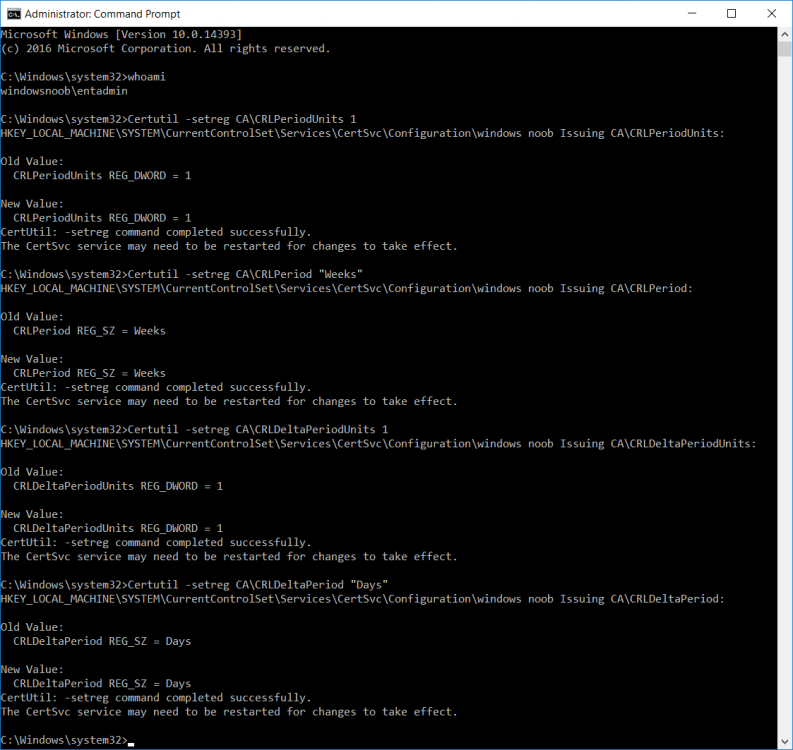

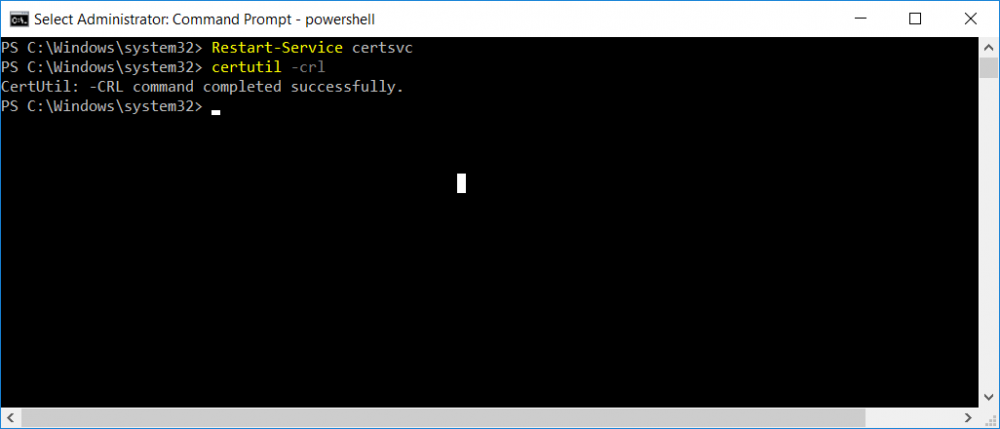
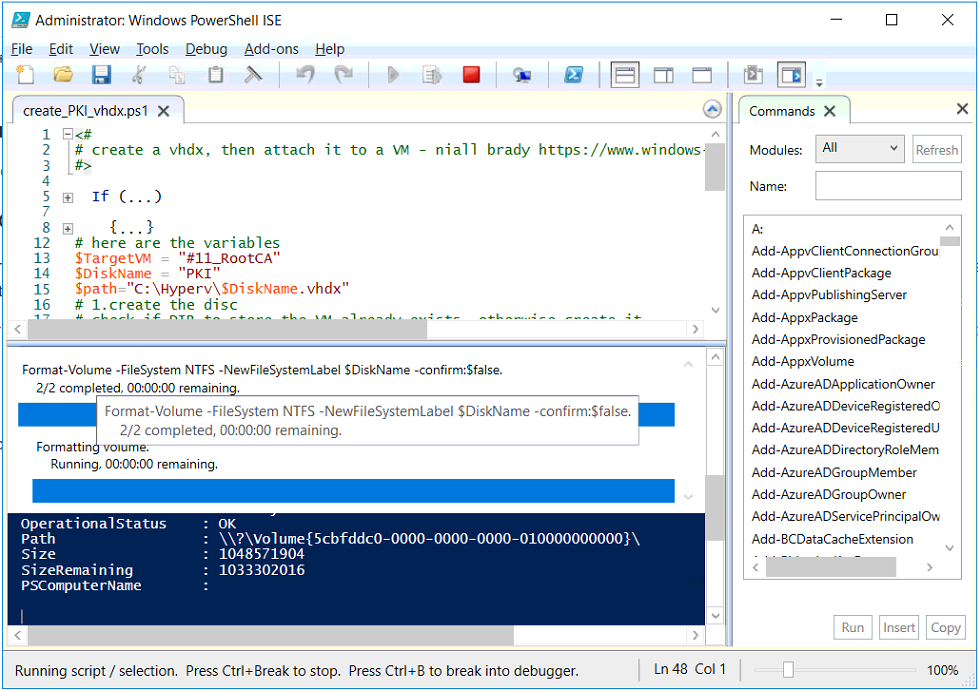
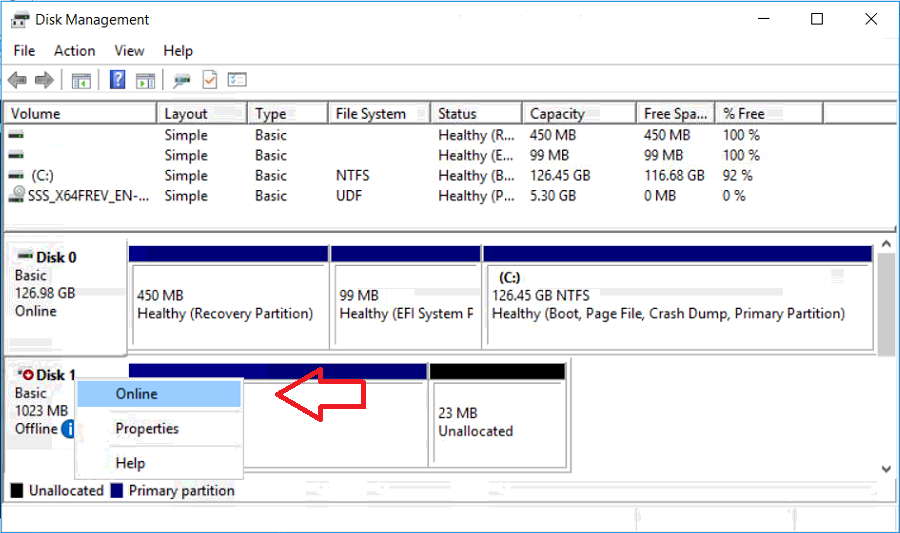

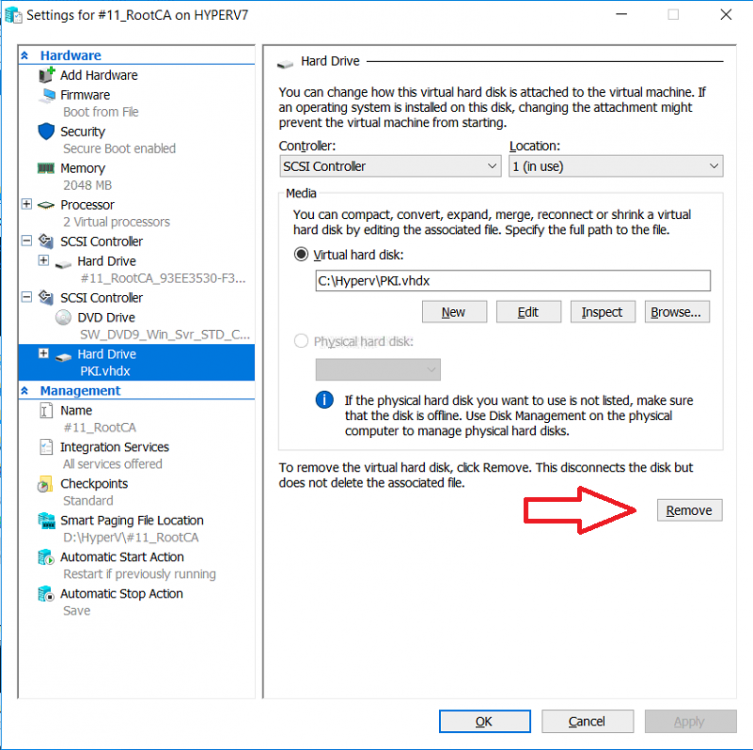

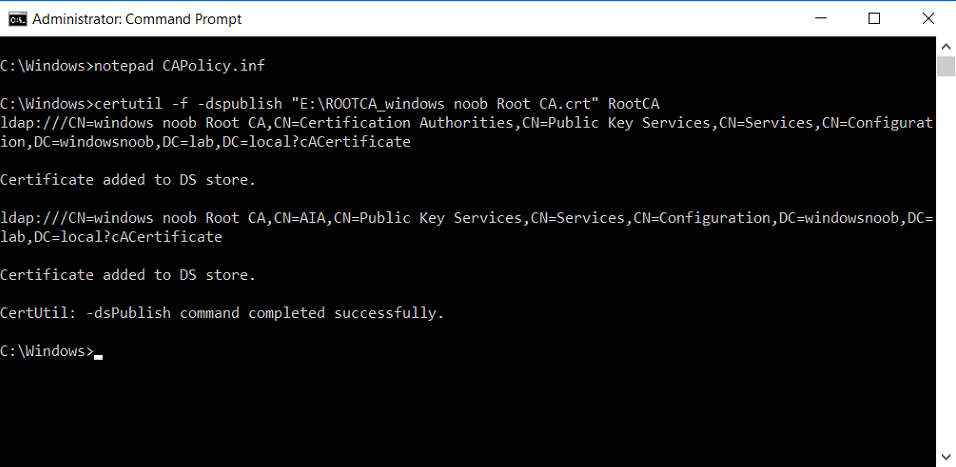




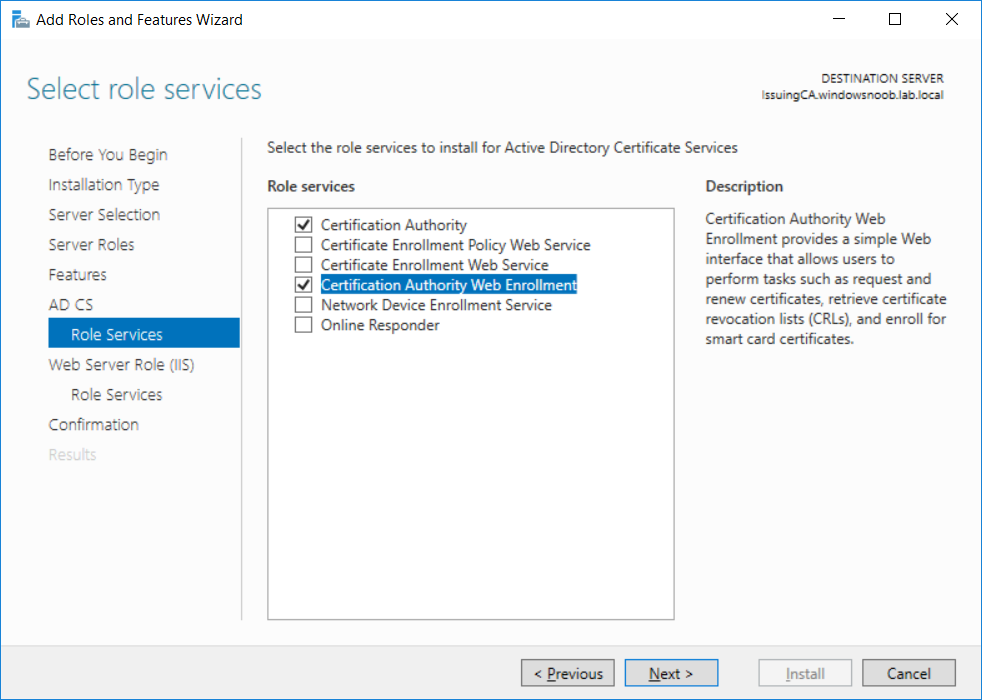
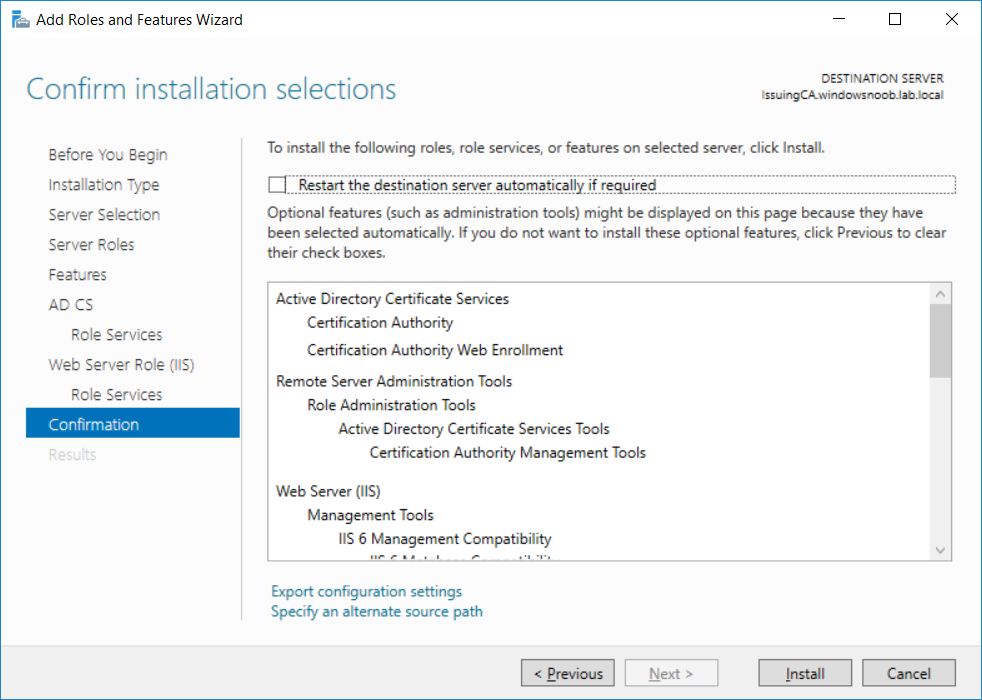
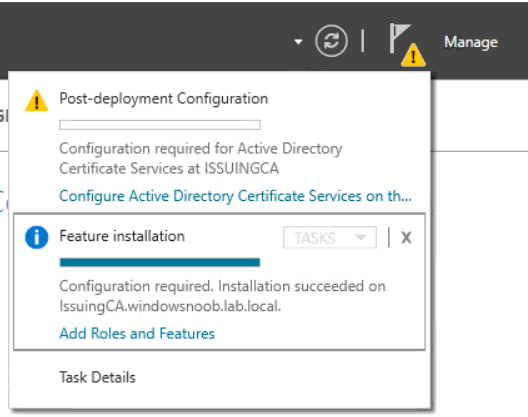
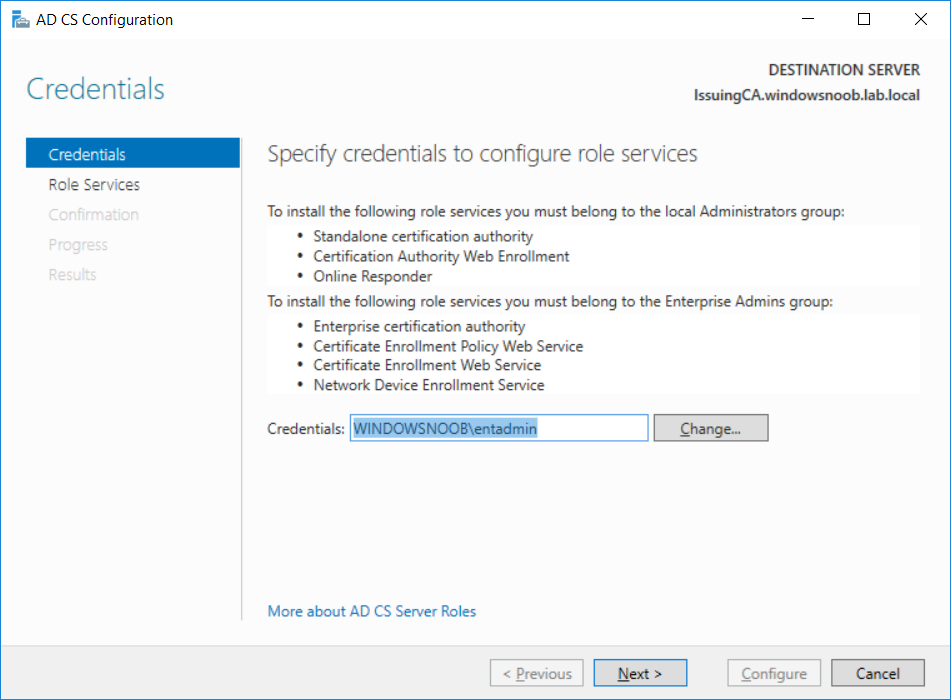
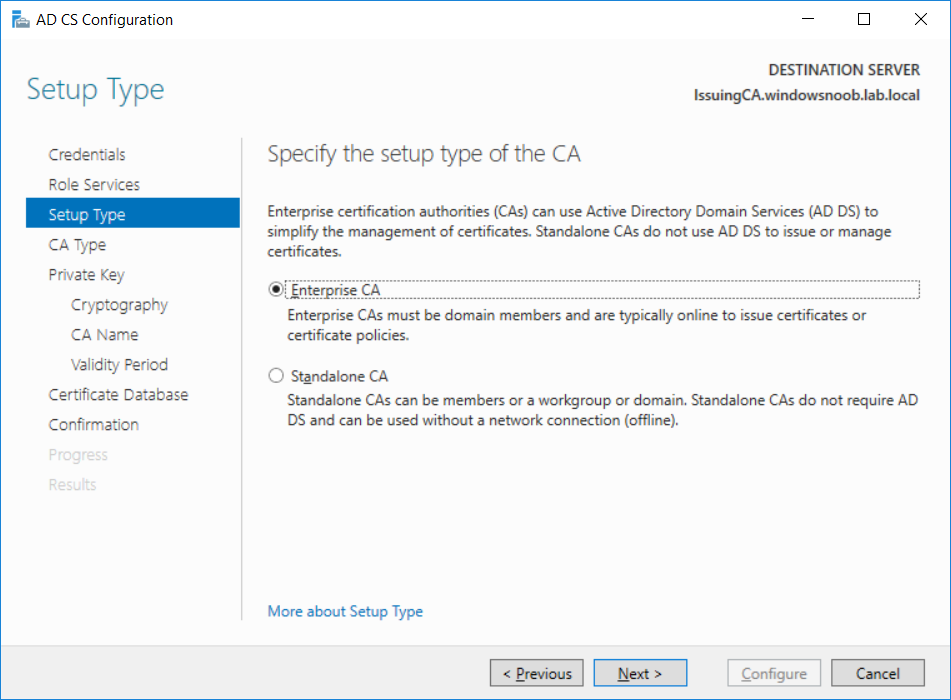
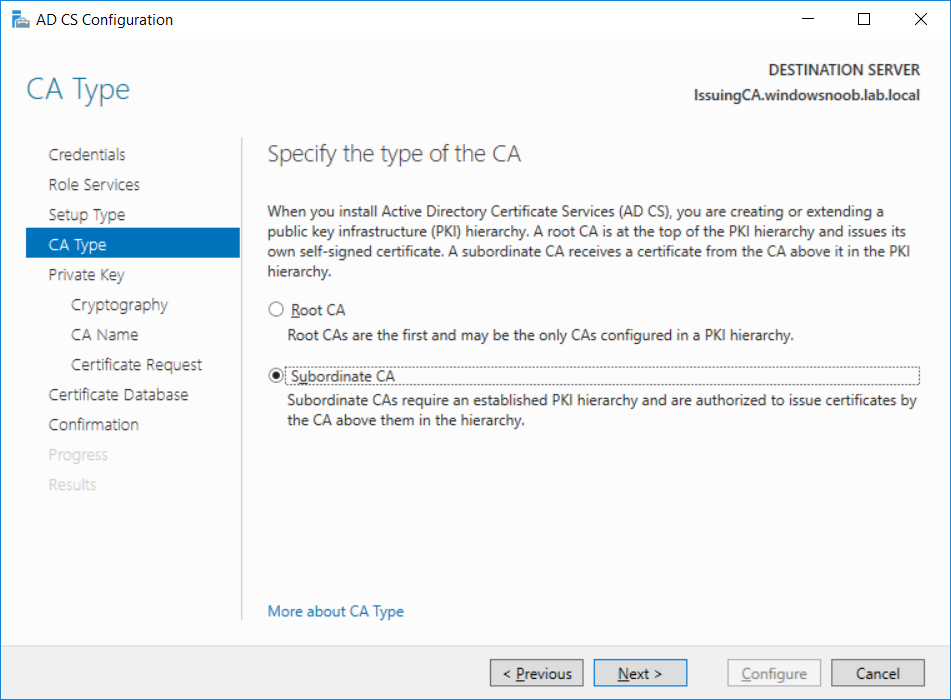
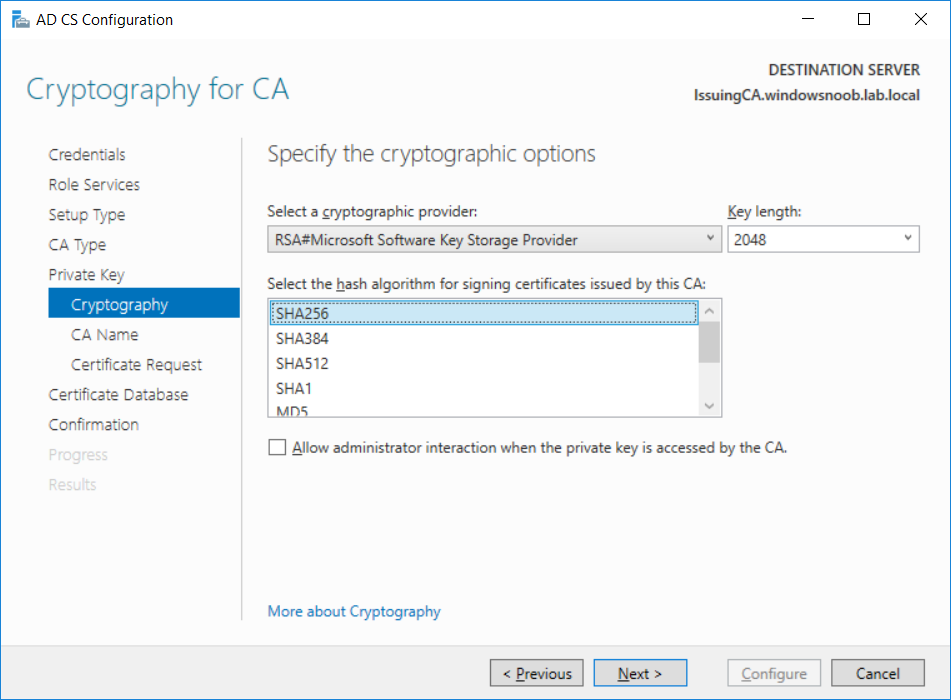
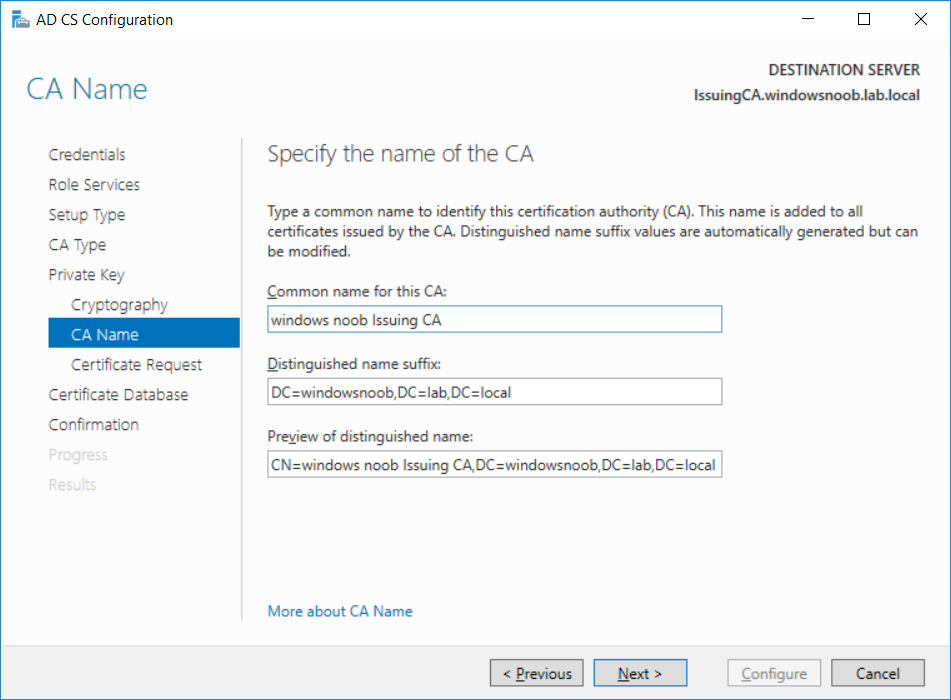
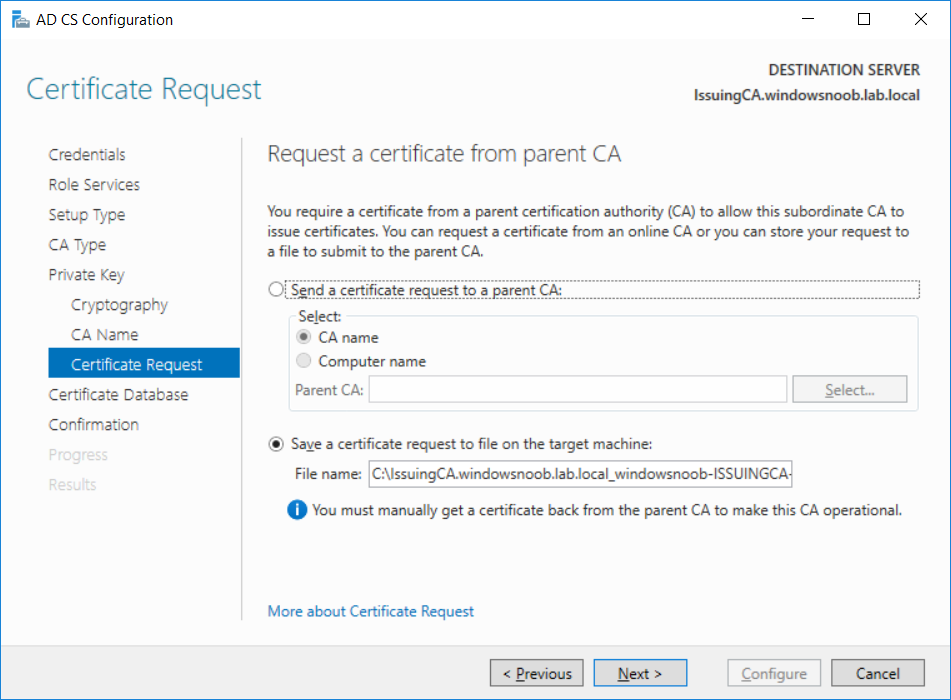
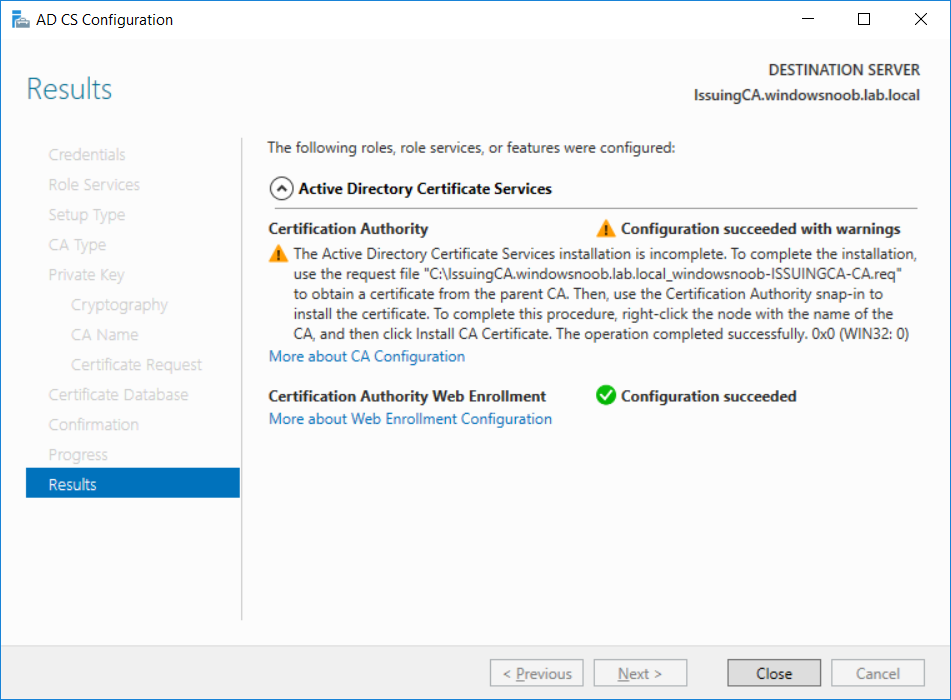

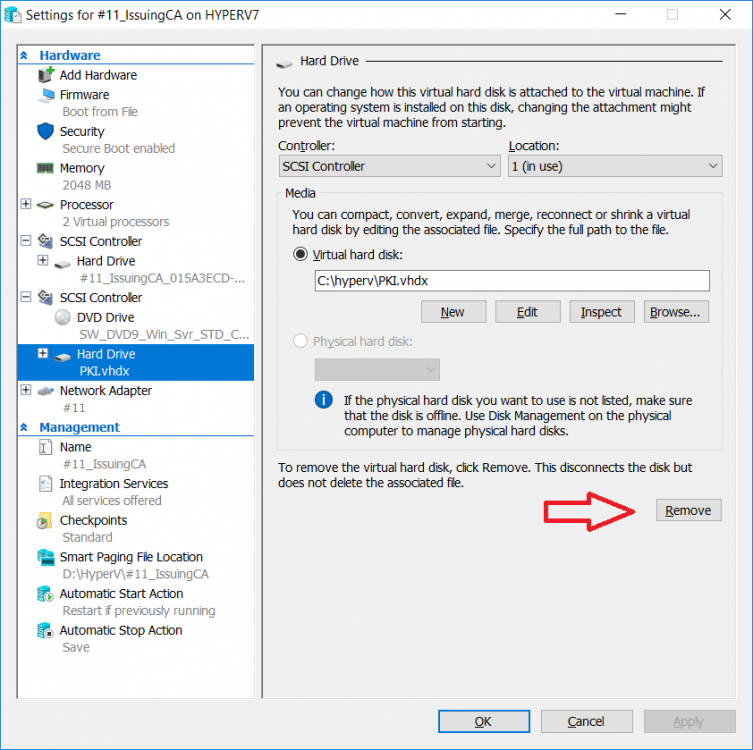
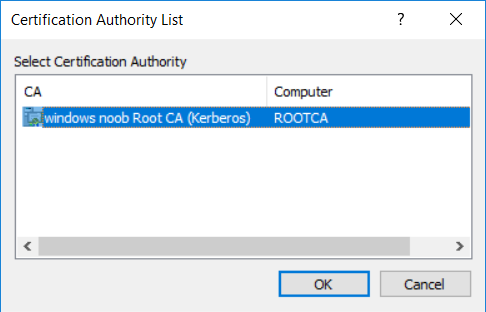

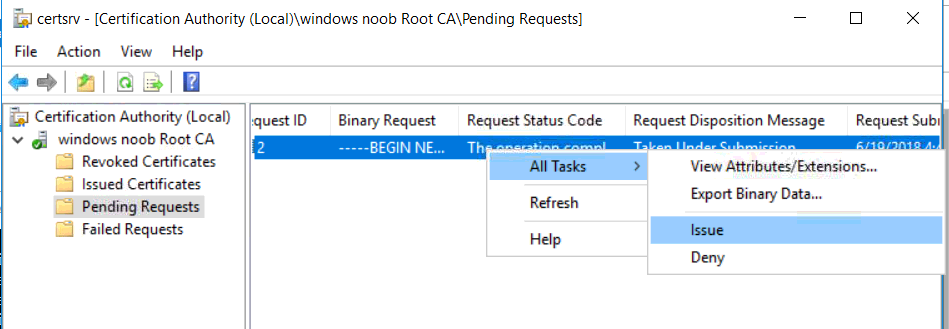
Issuedresubmittedbyrootcaadministrator.png.0054988f730b22e4791c69926ae8cea3.png)

